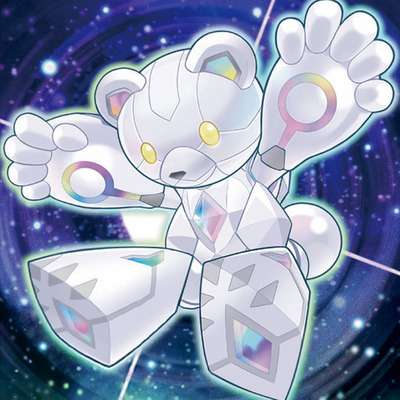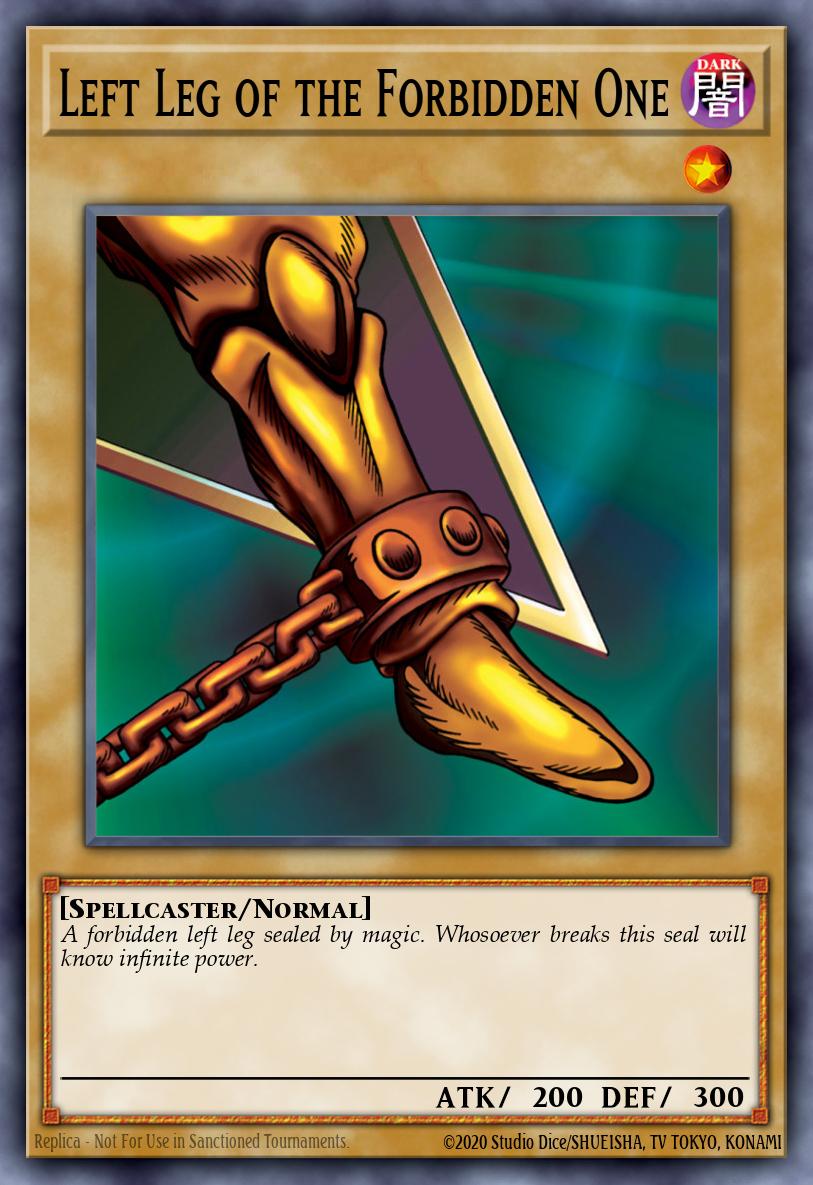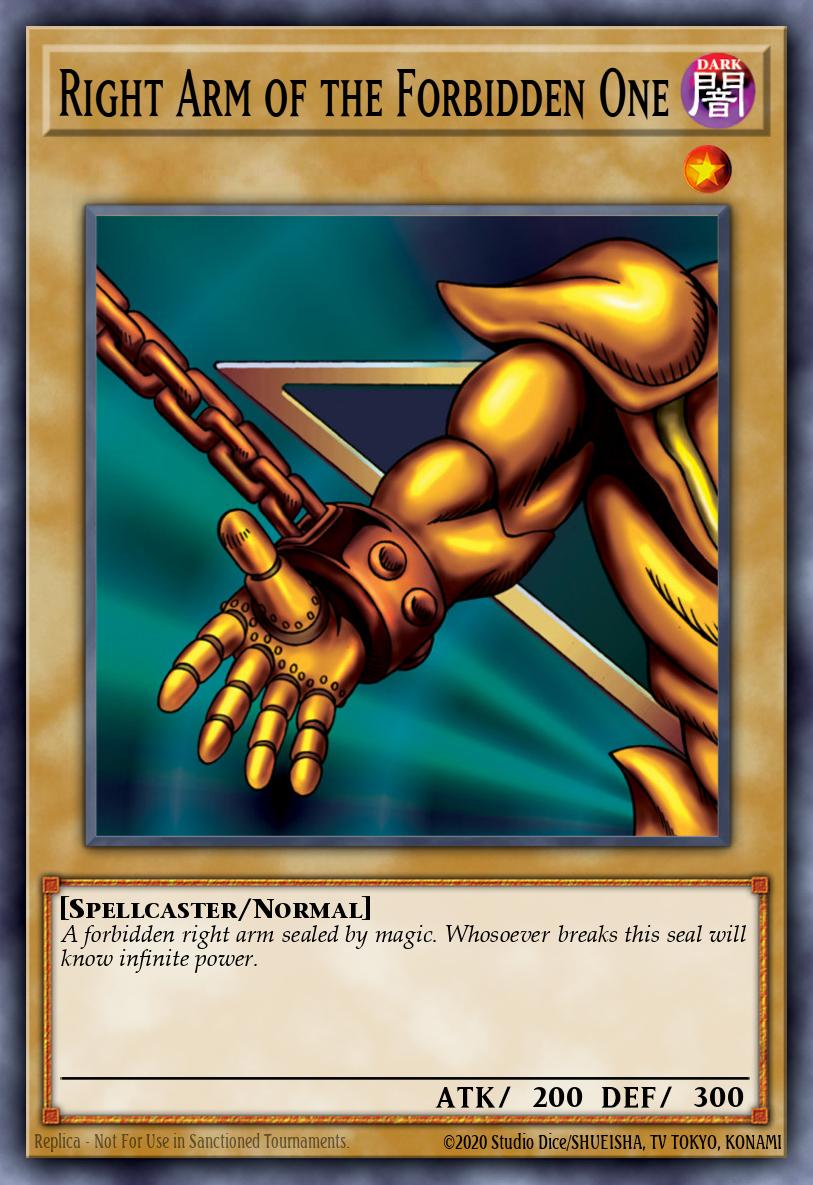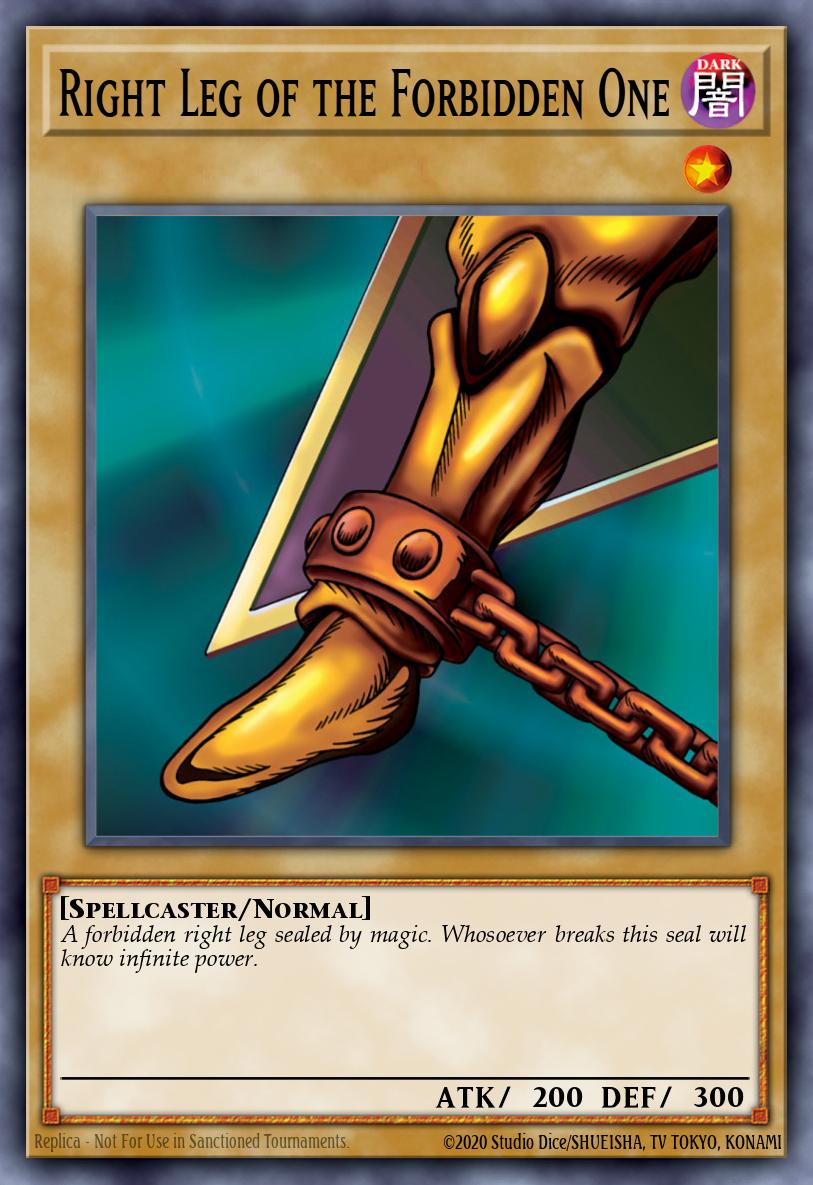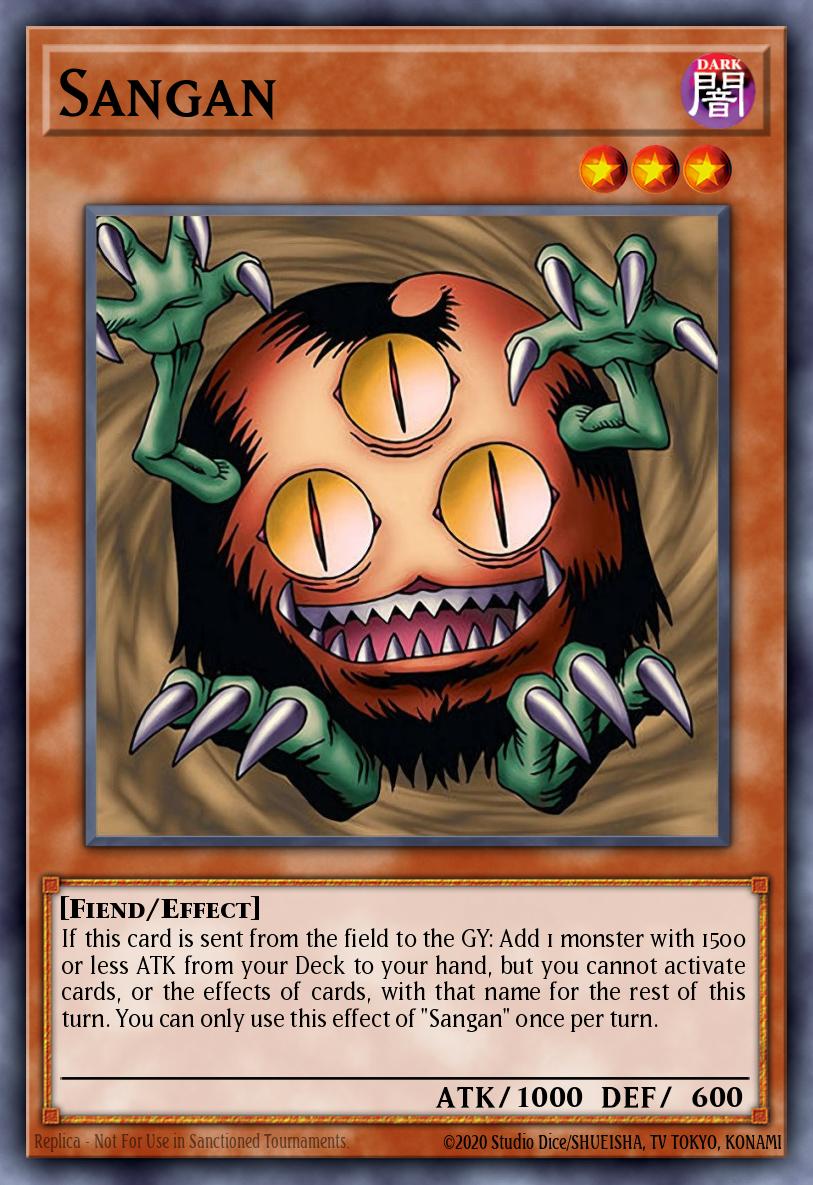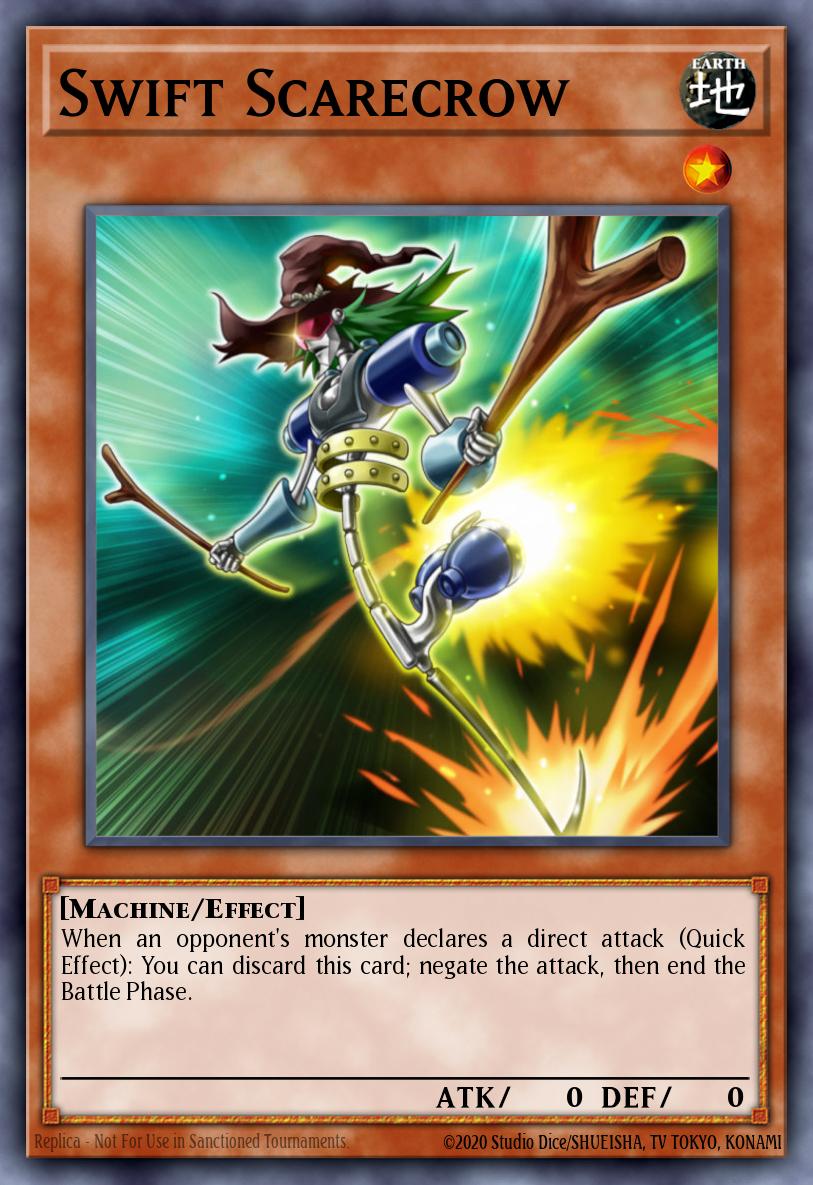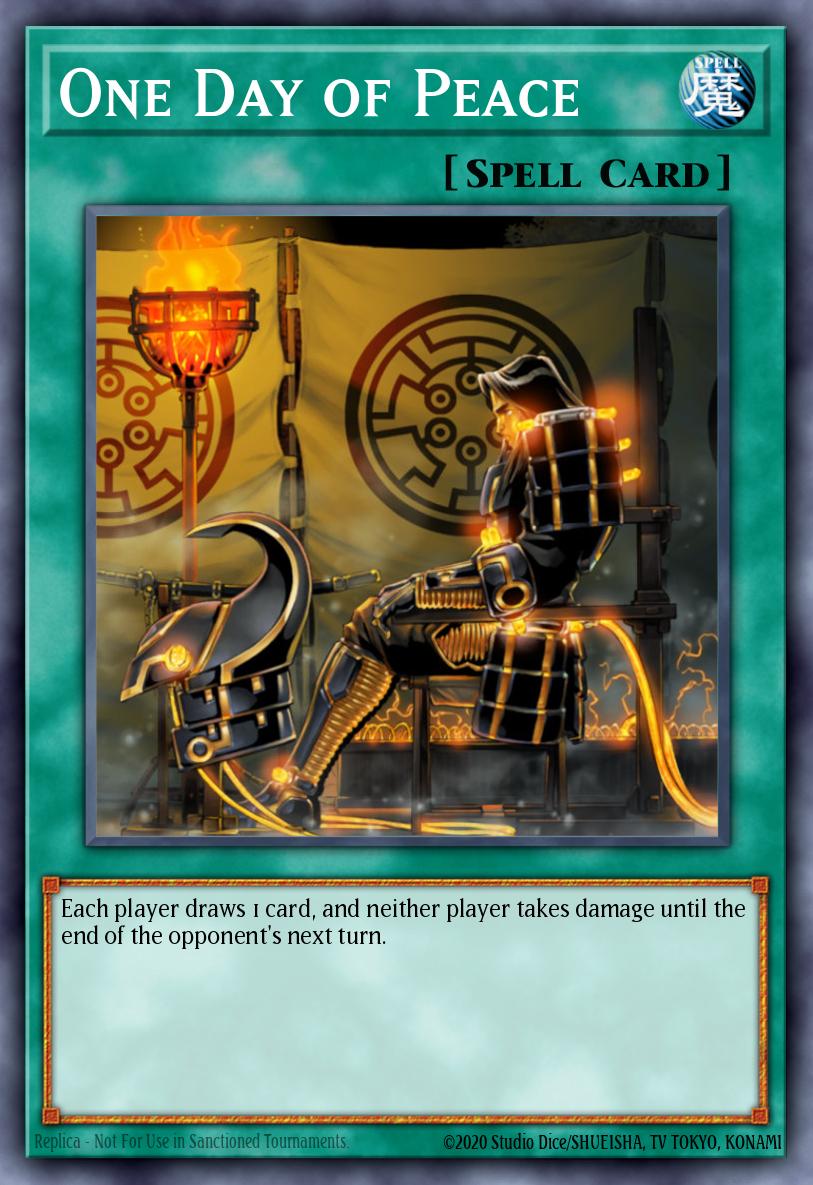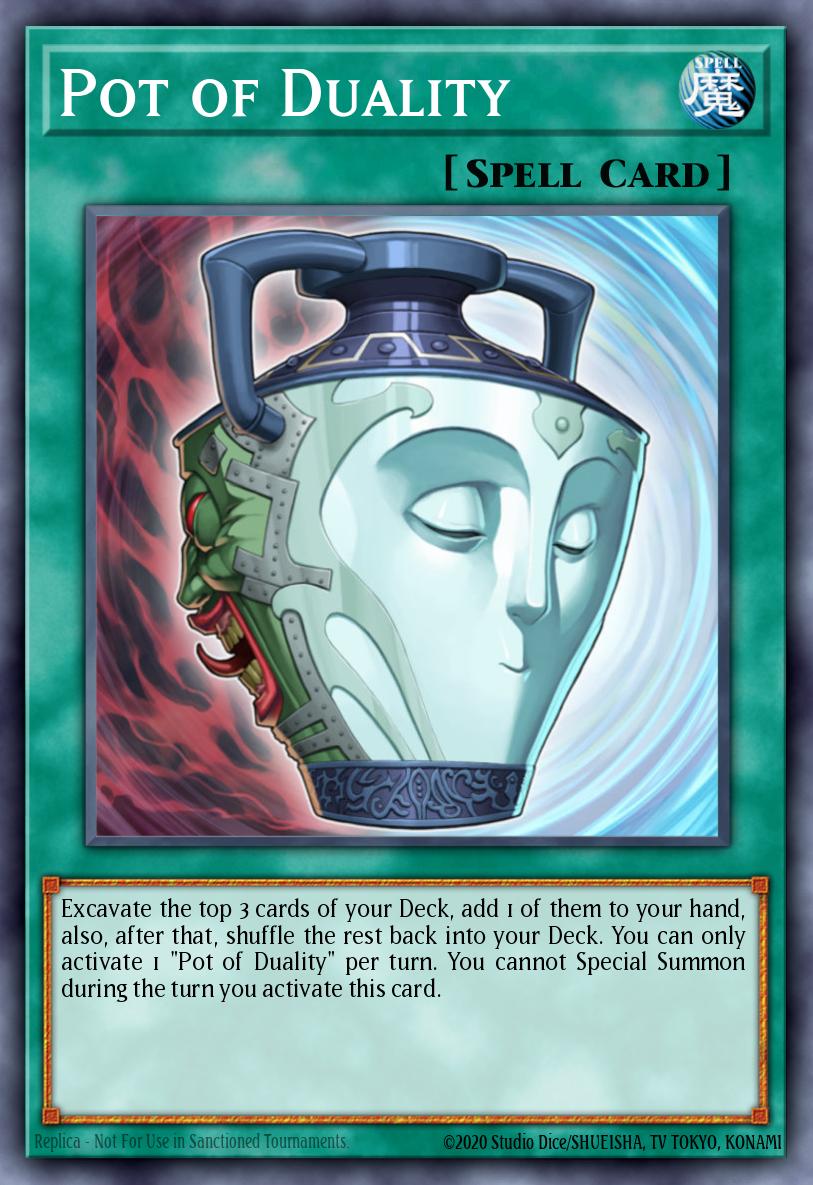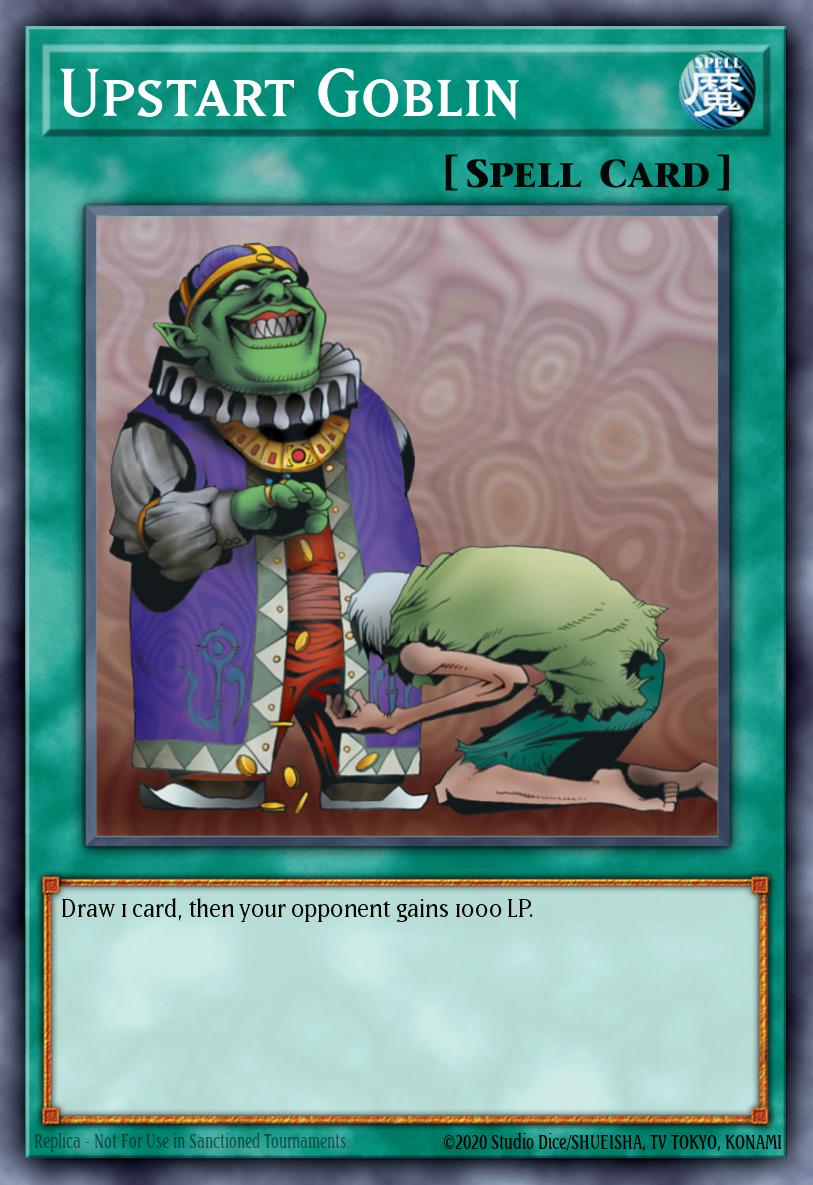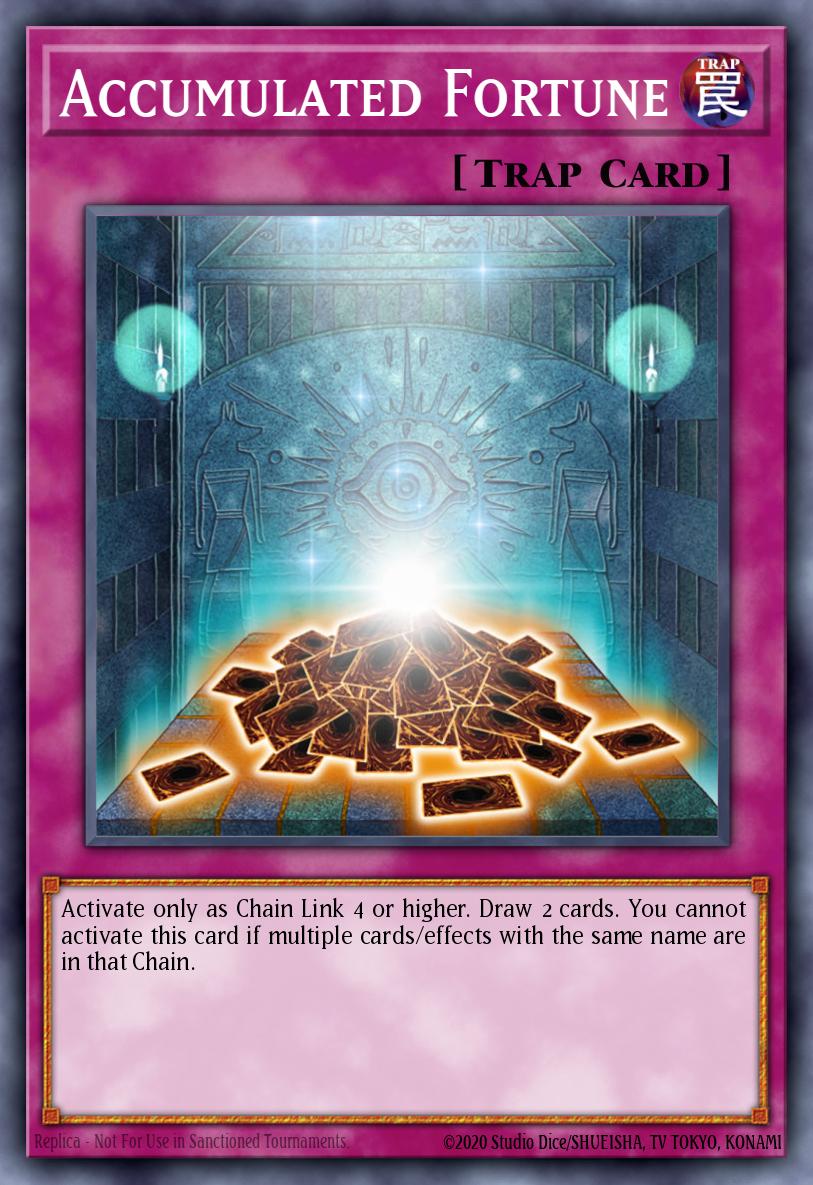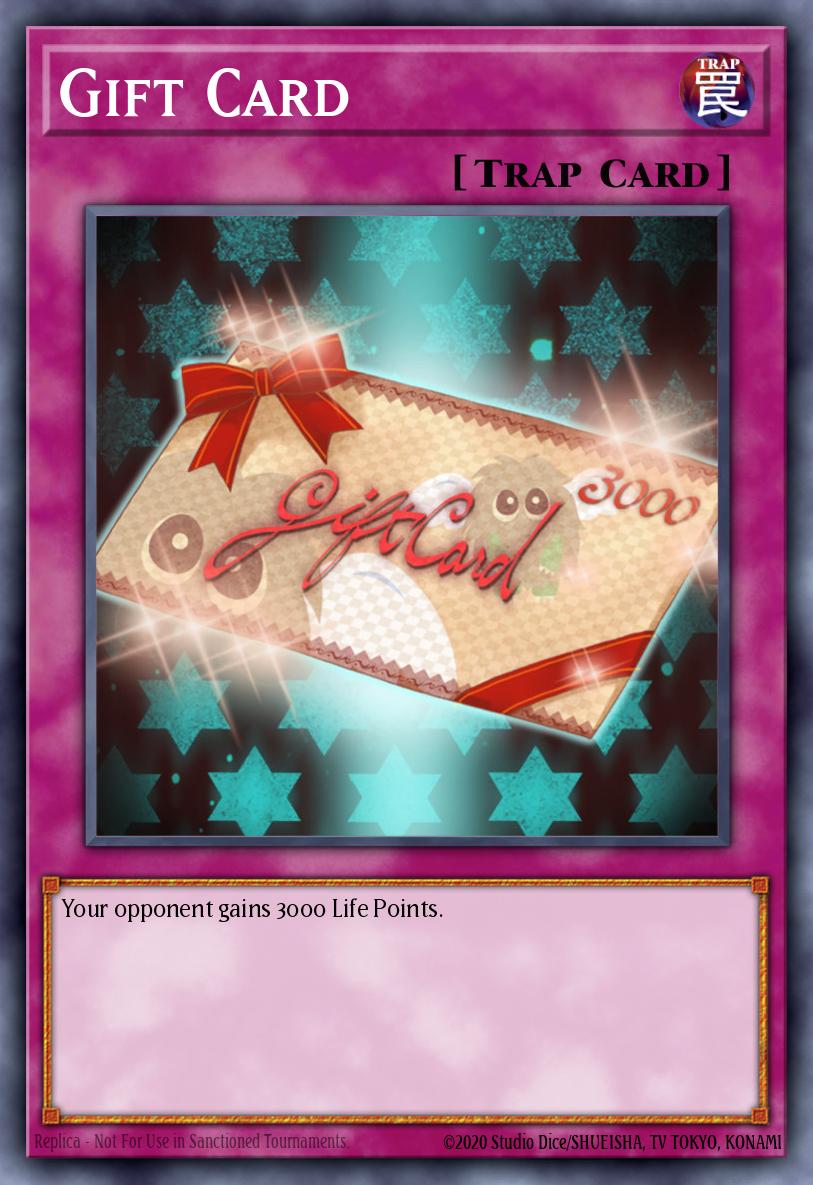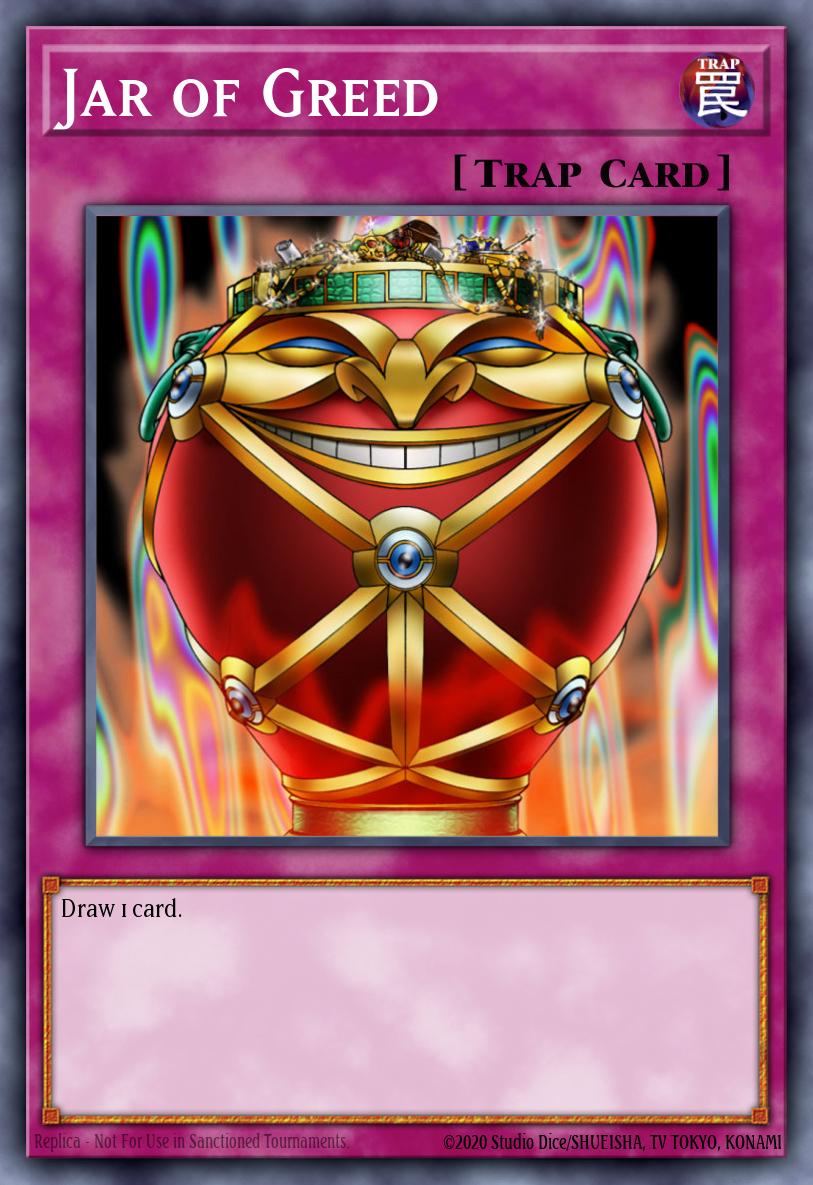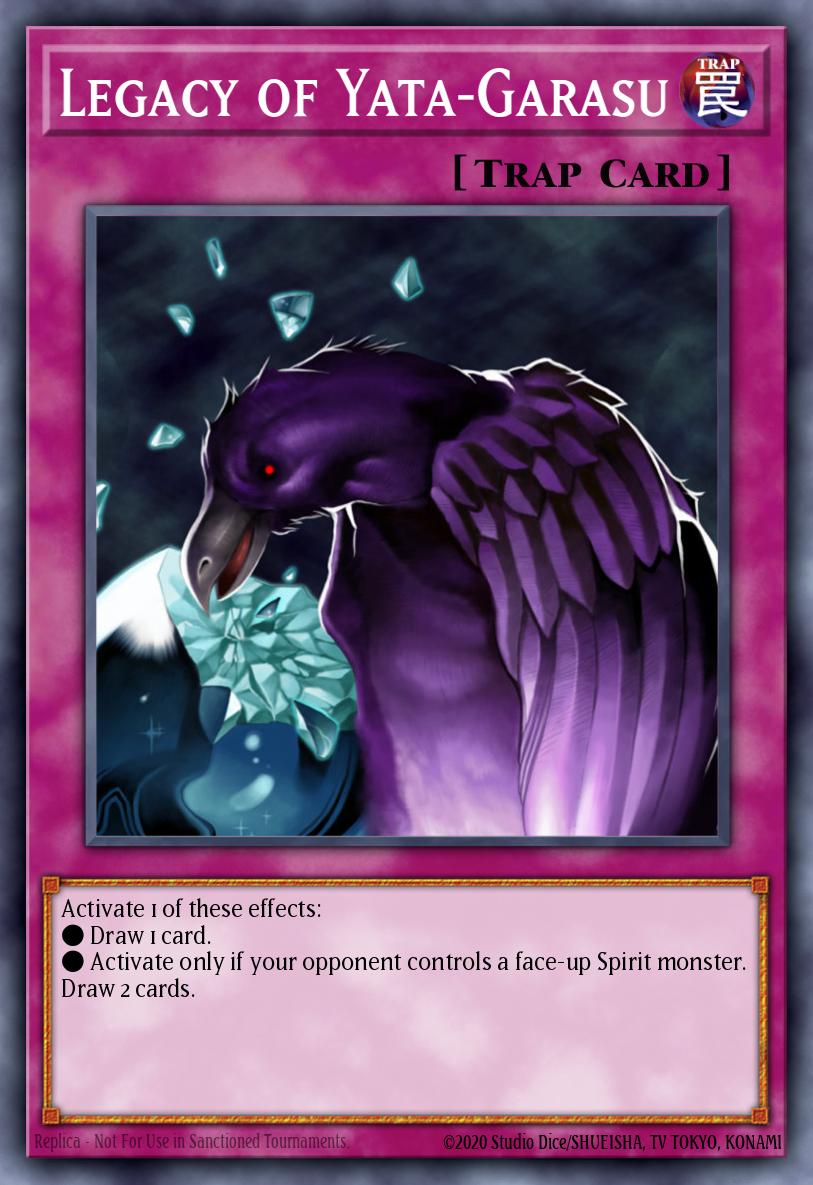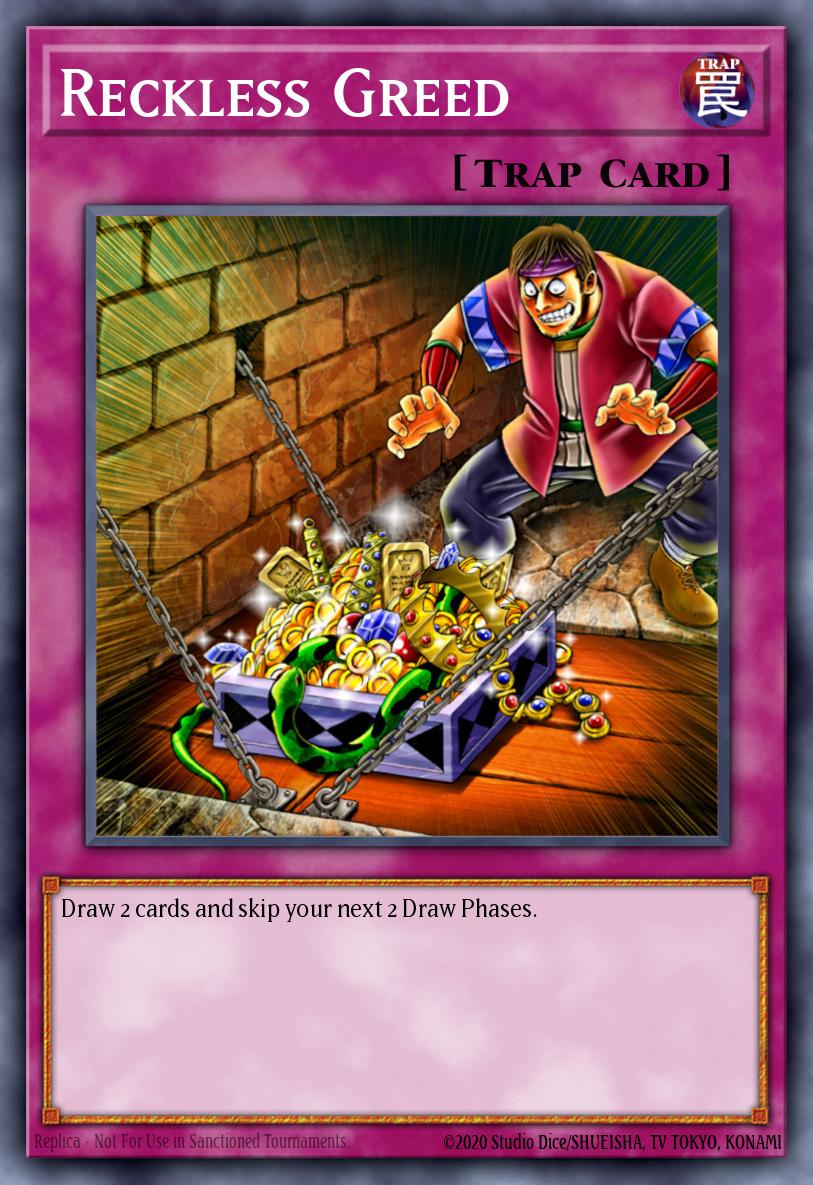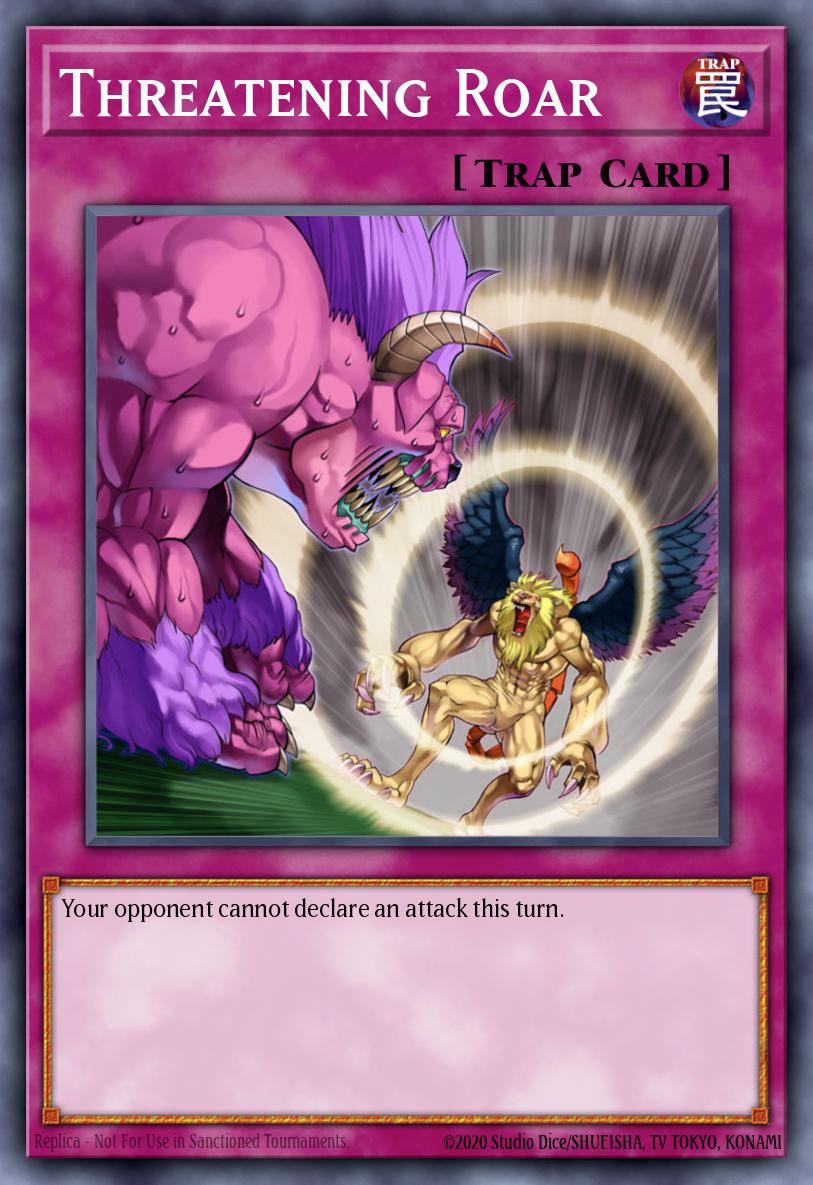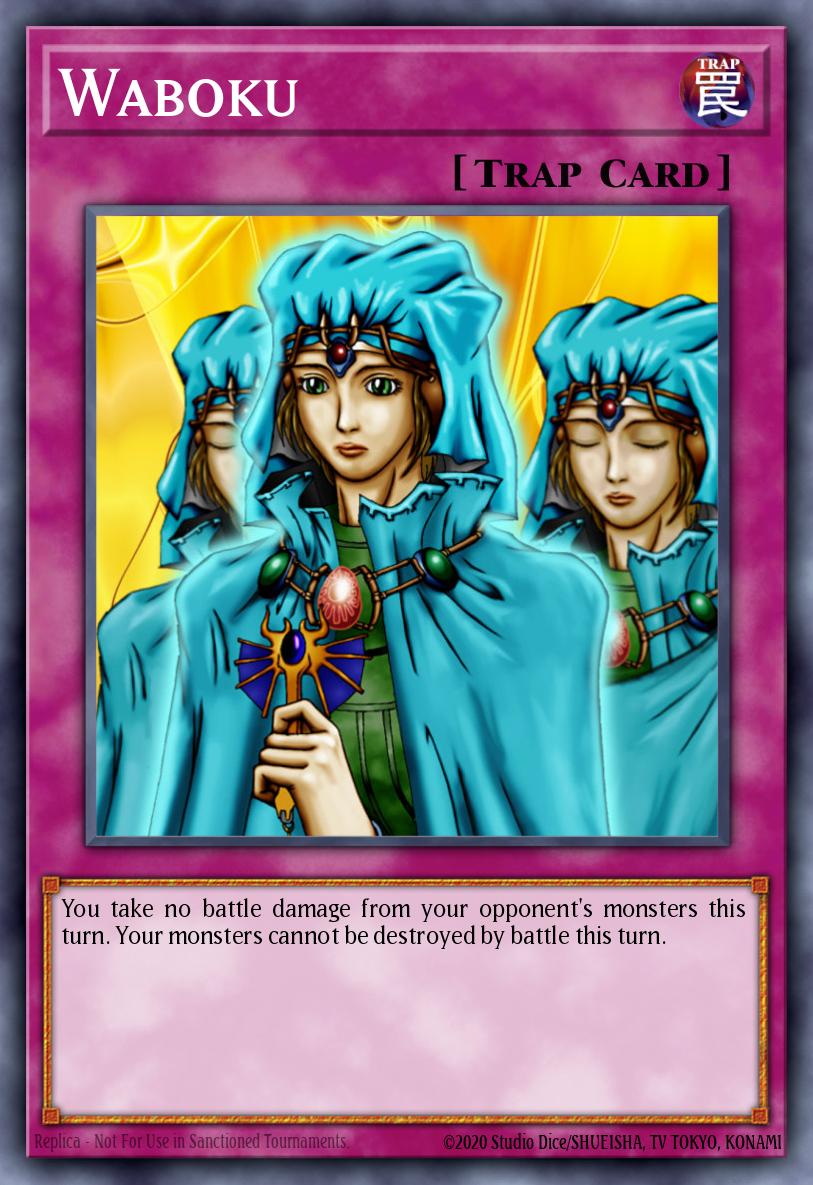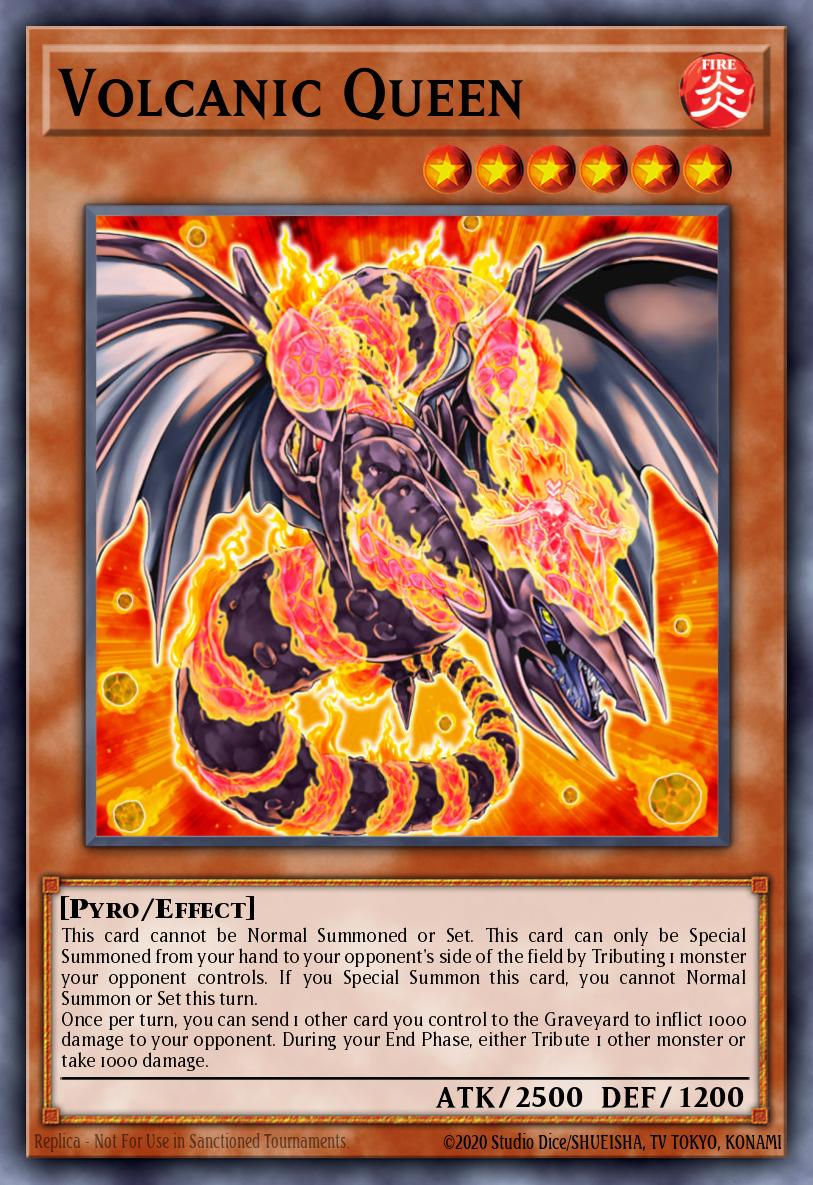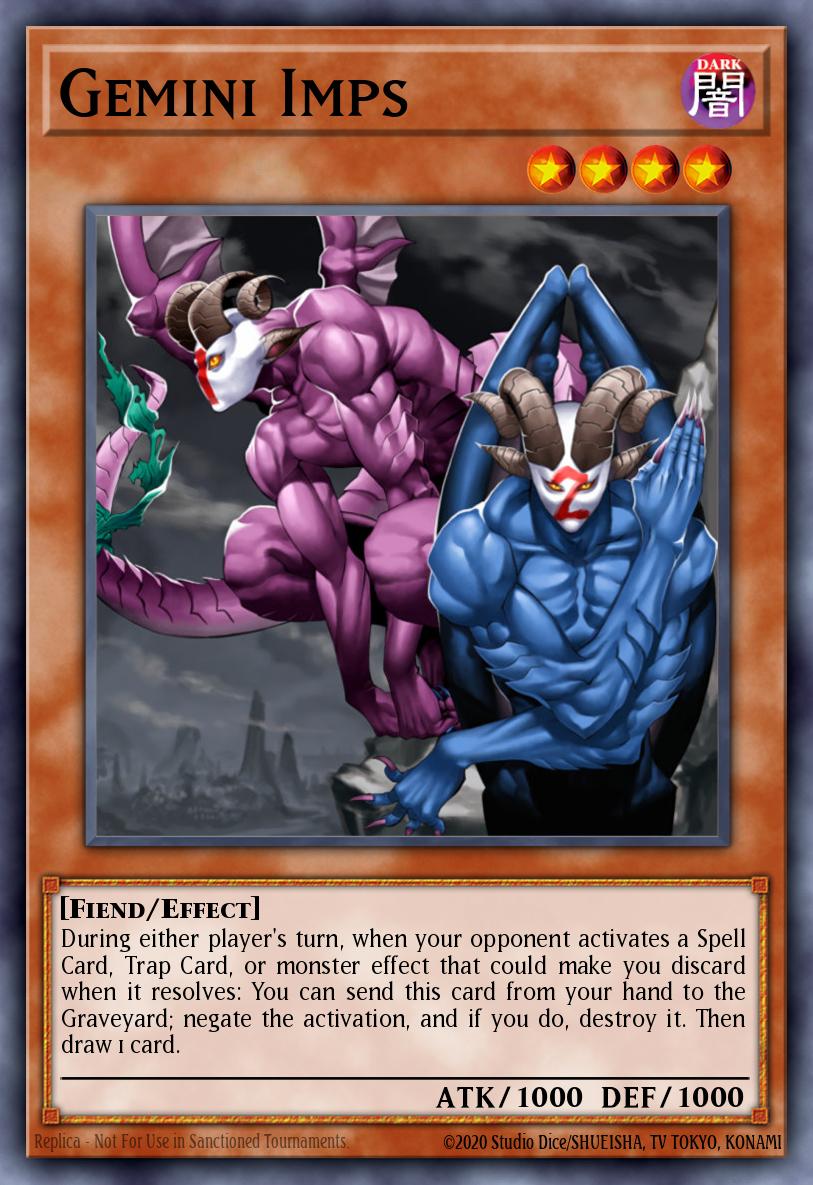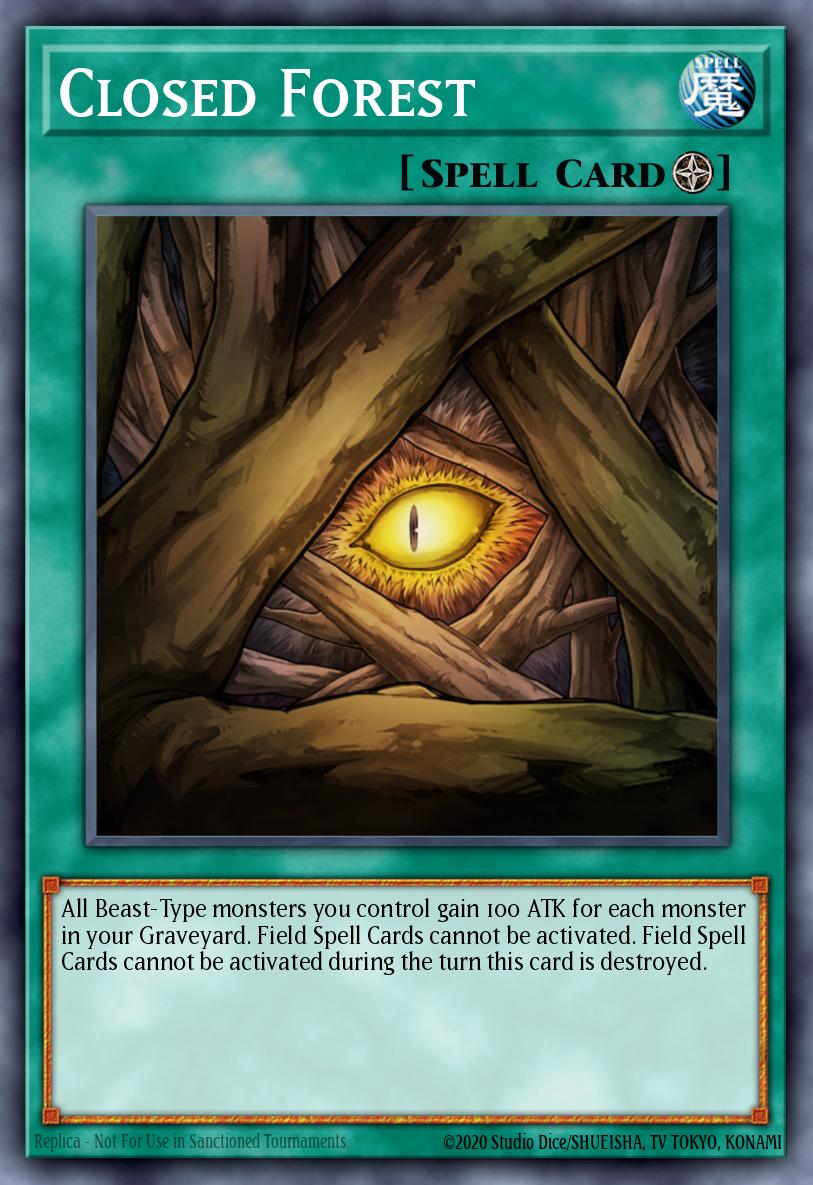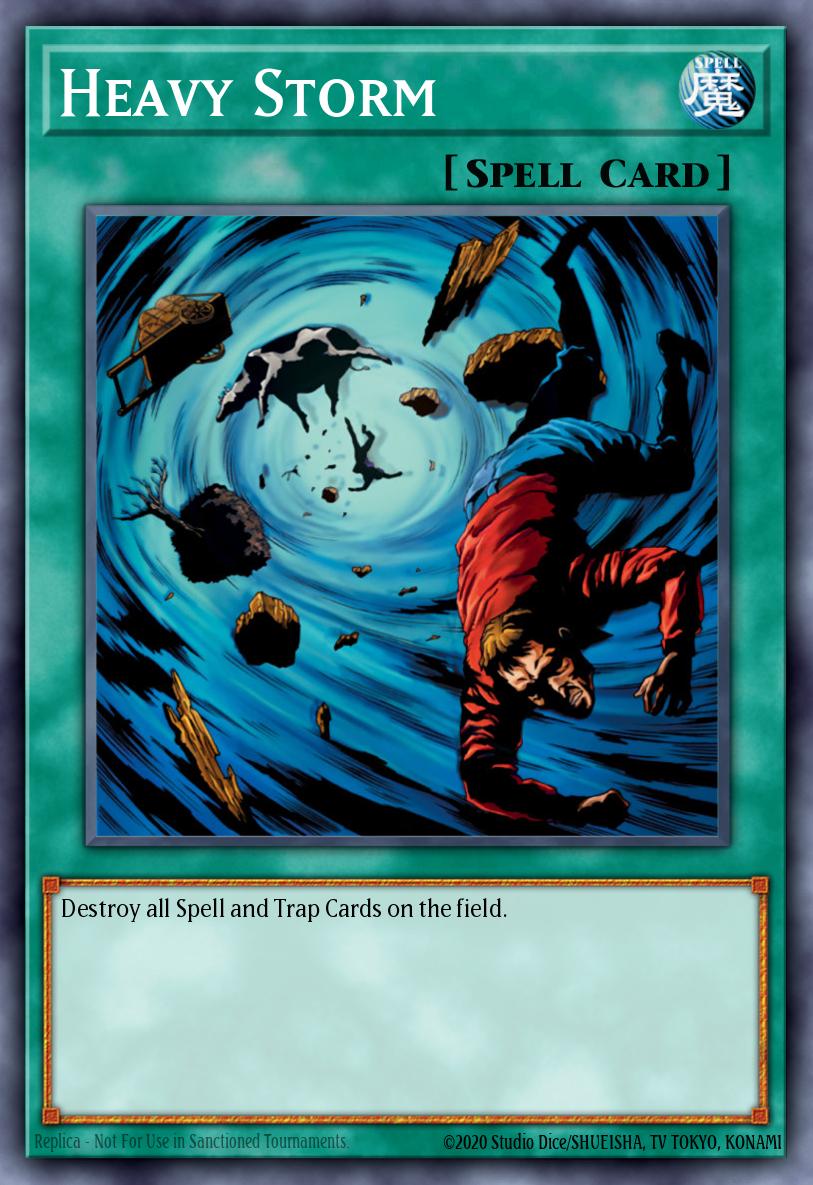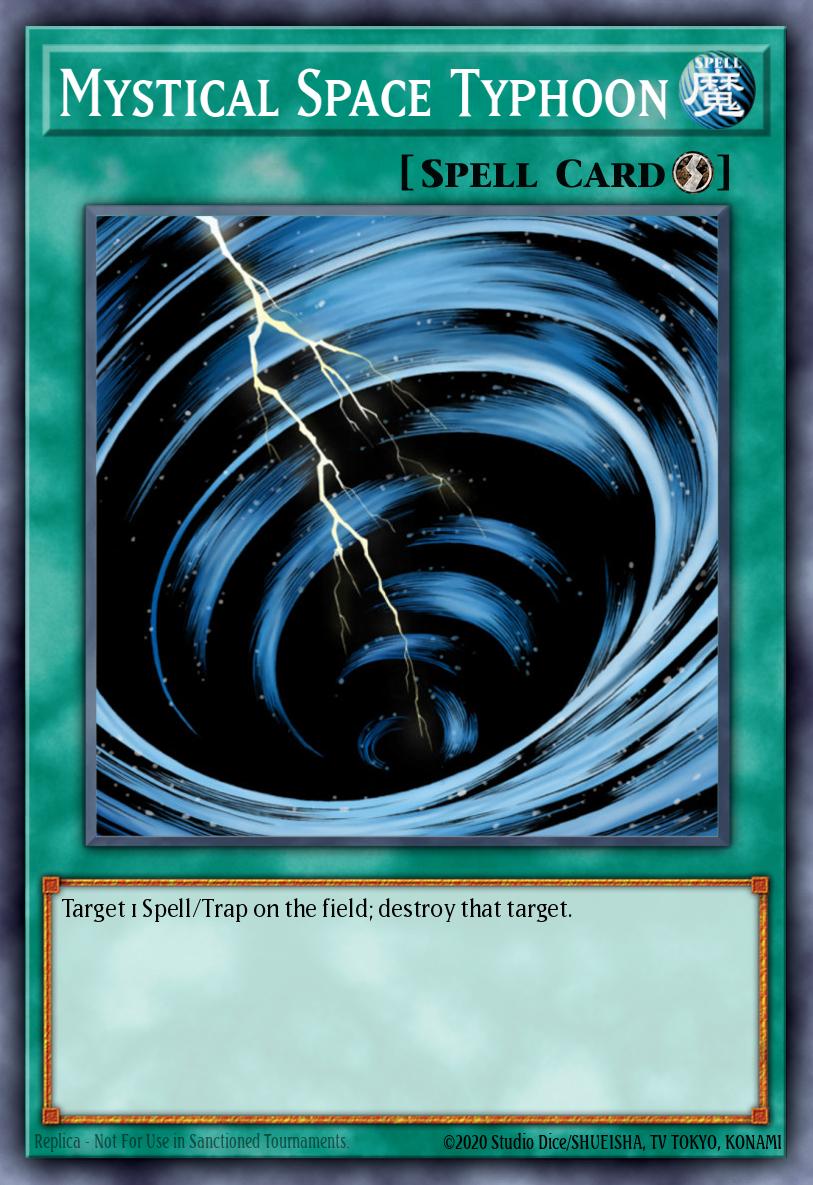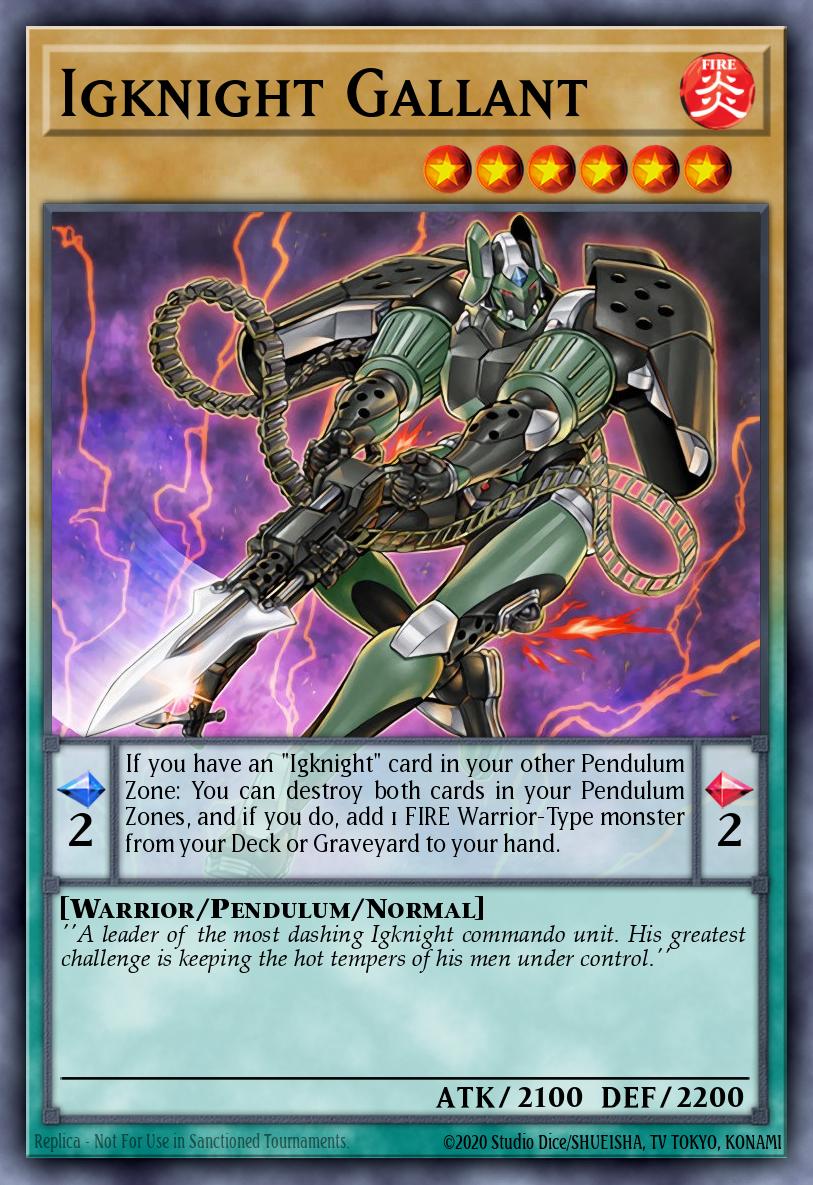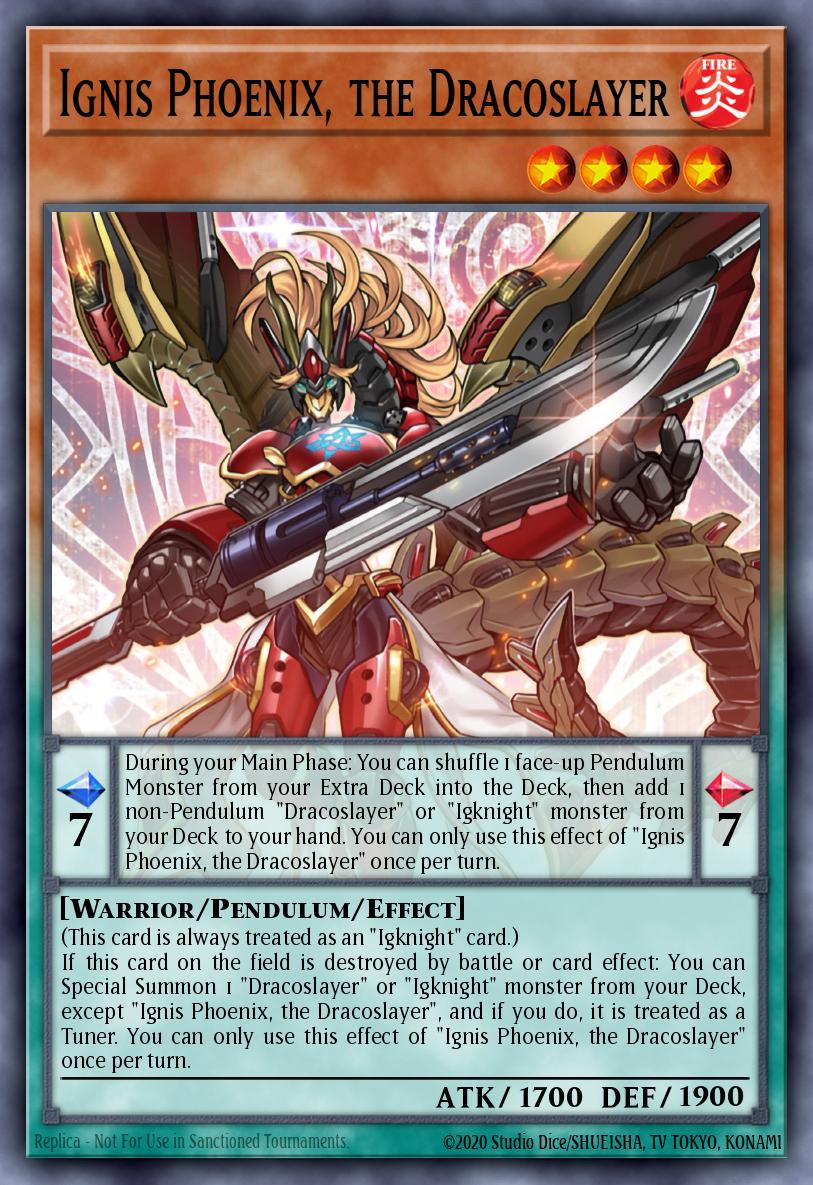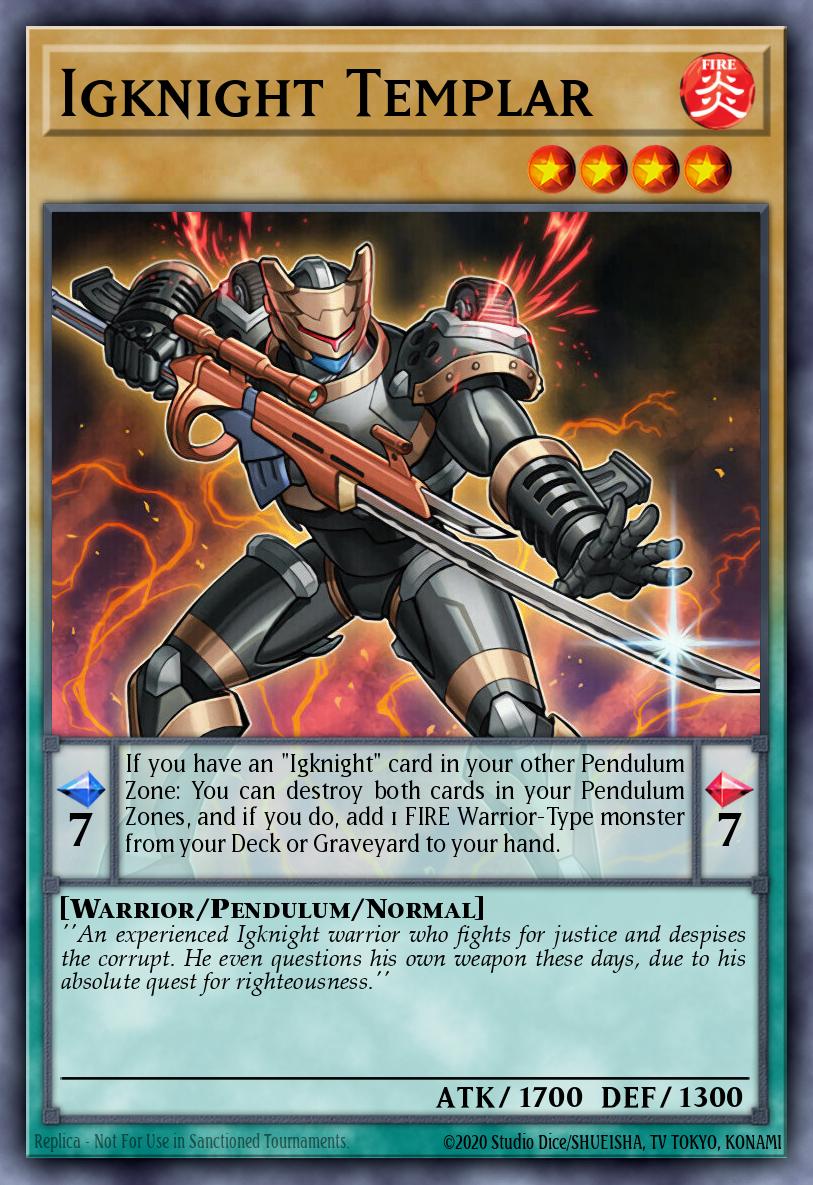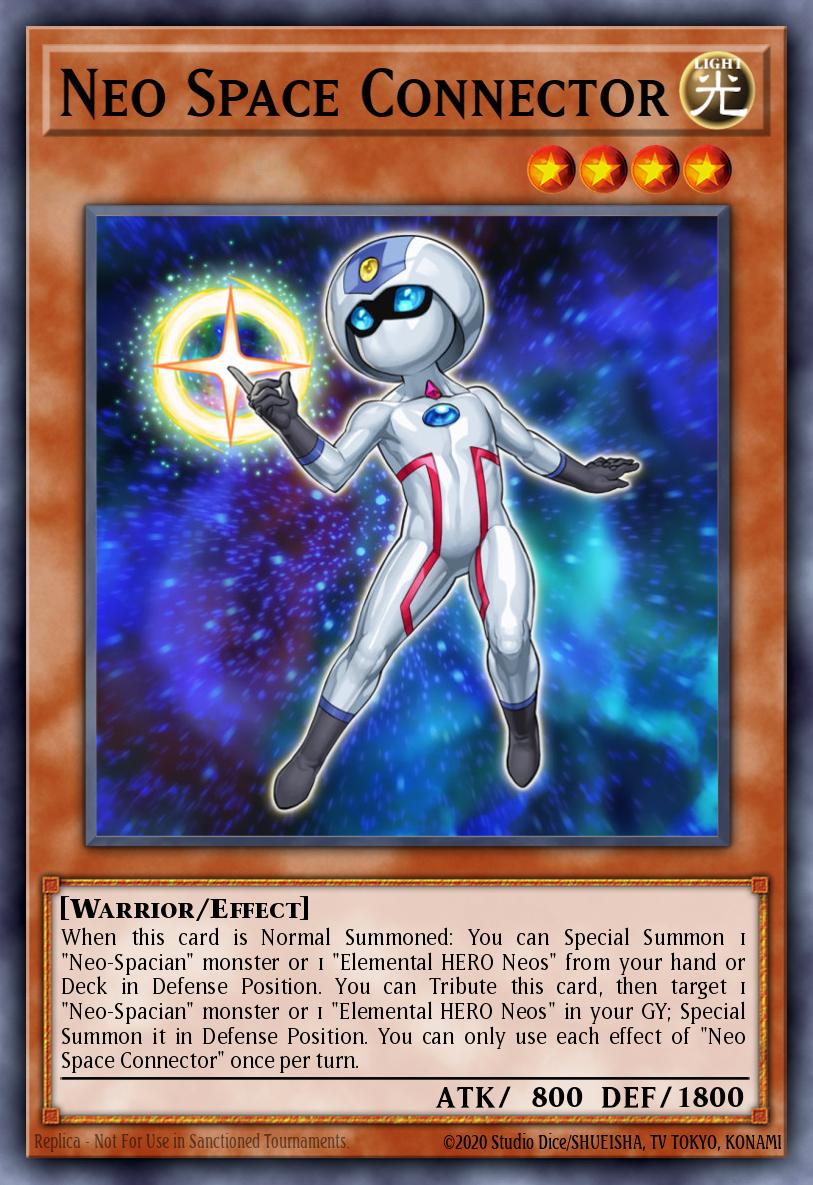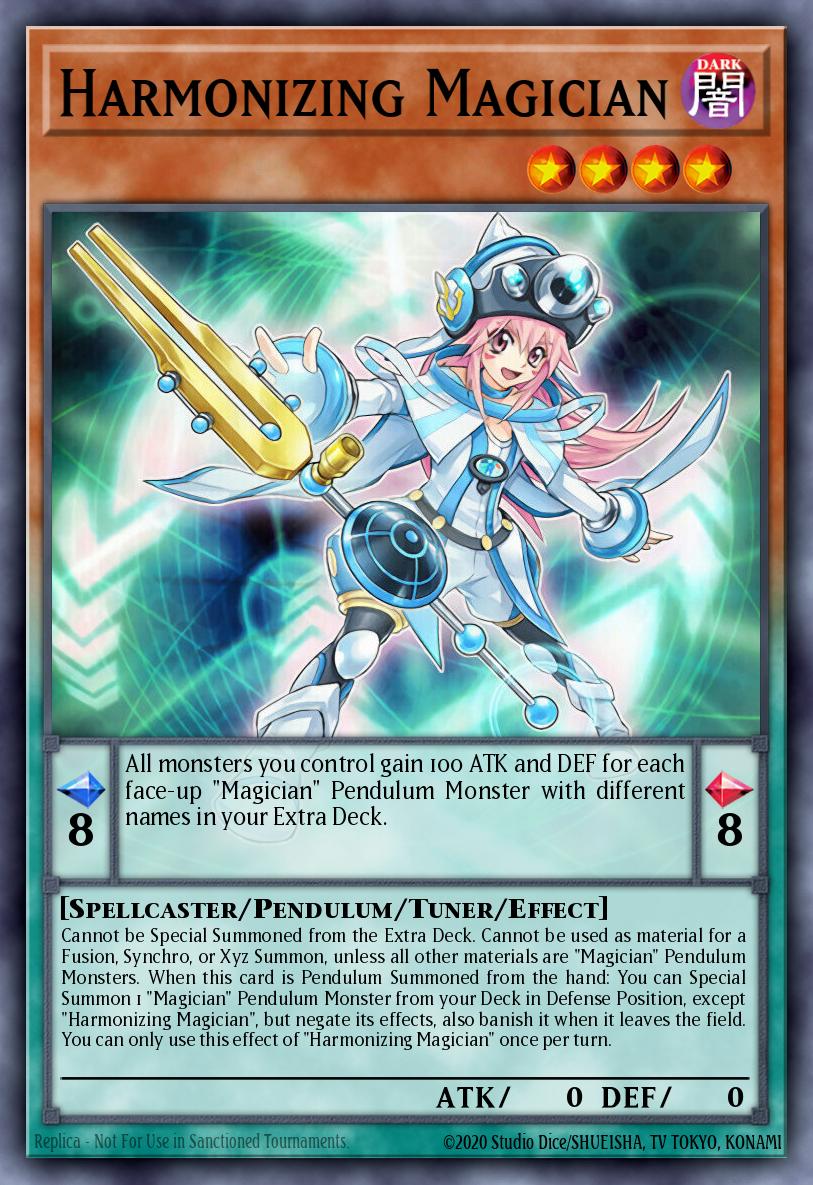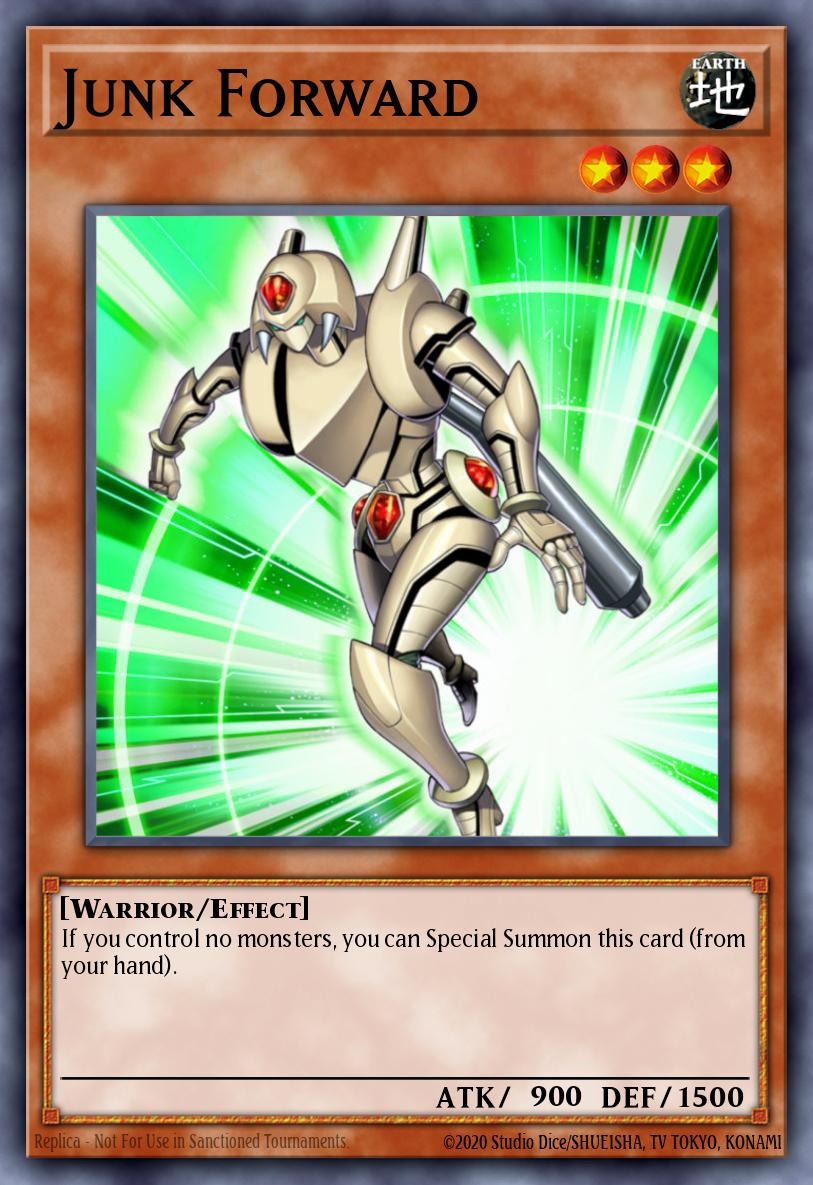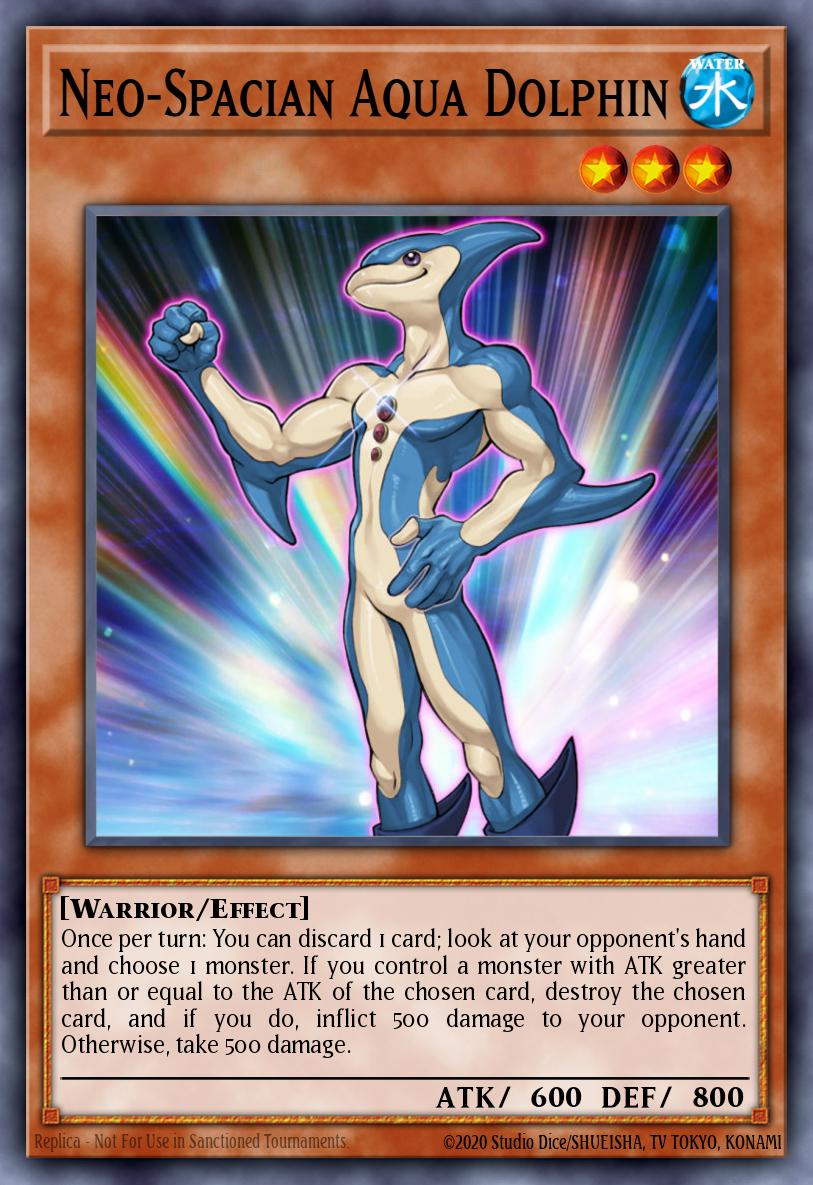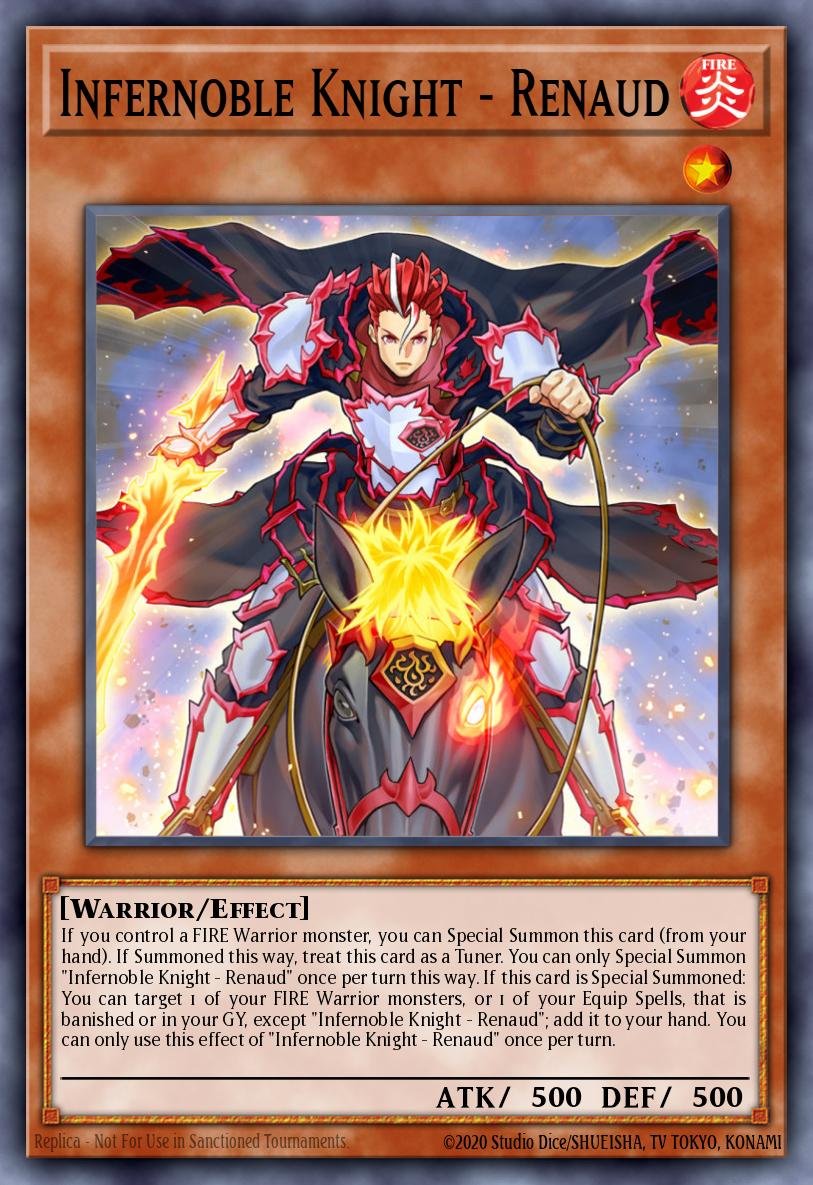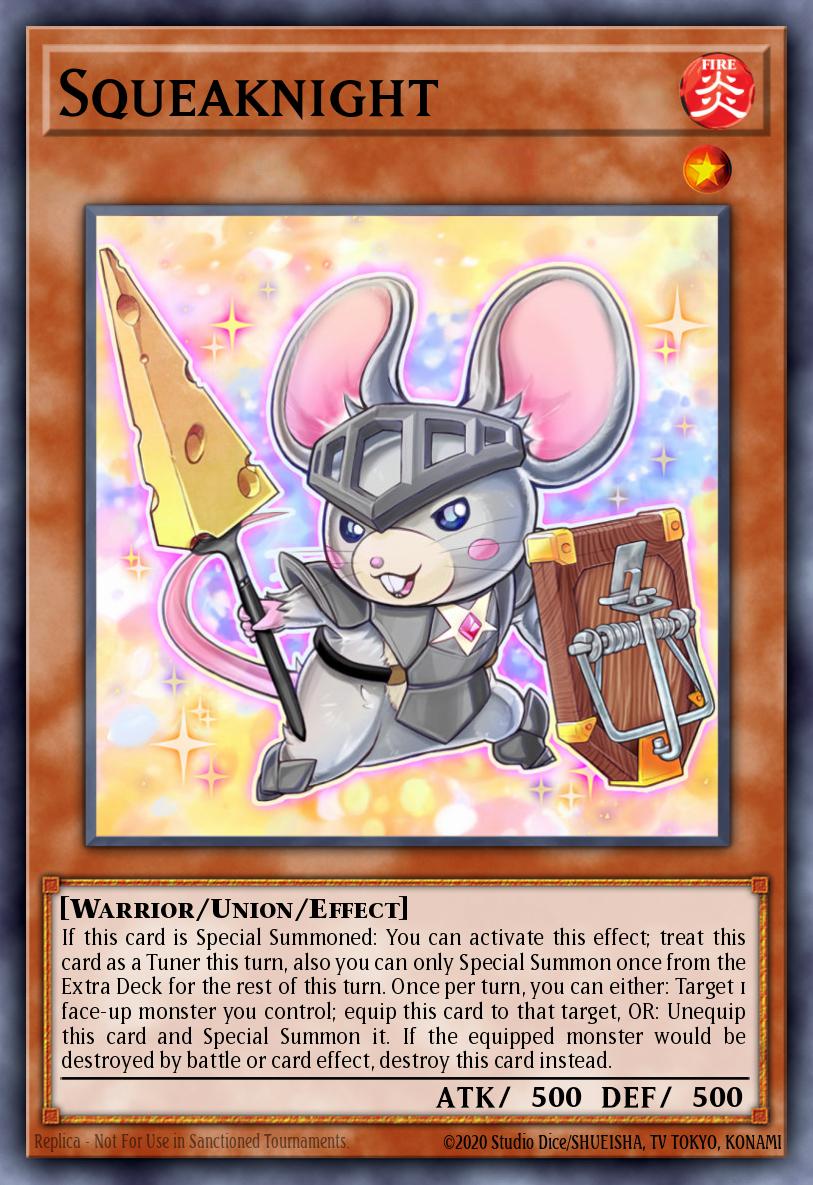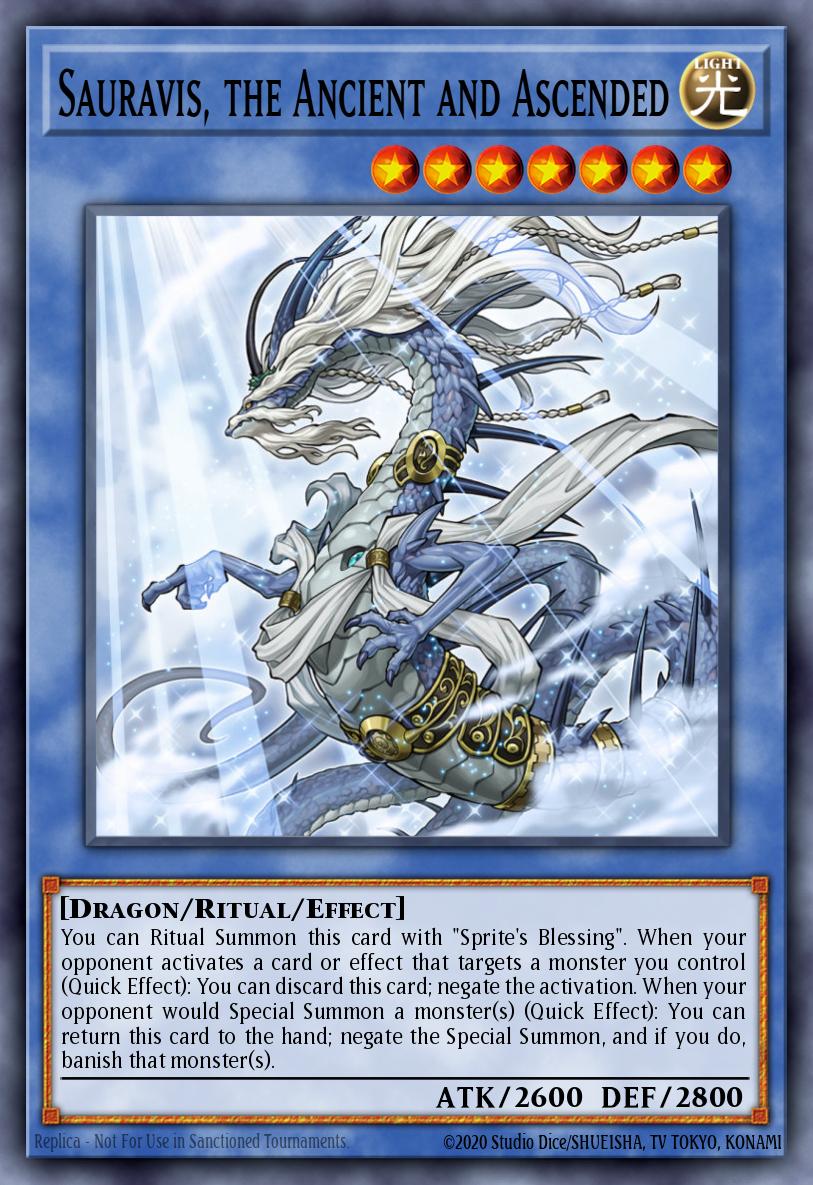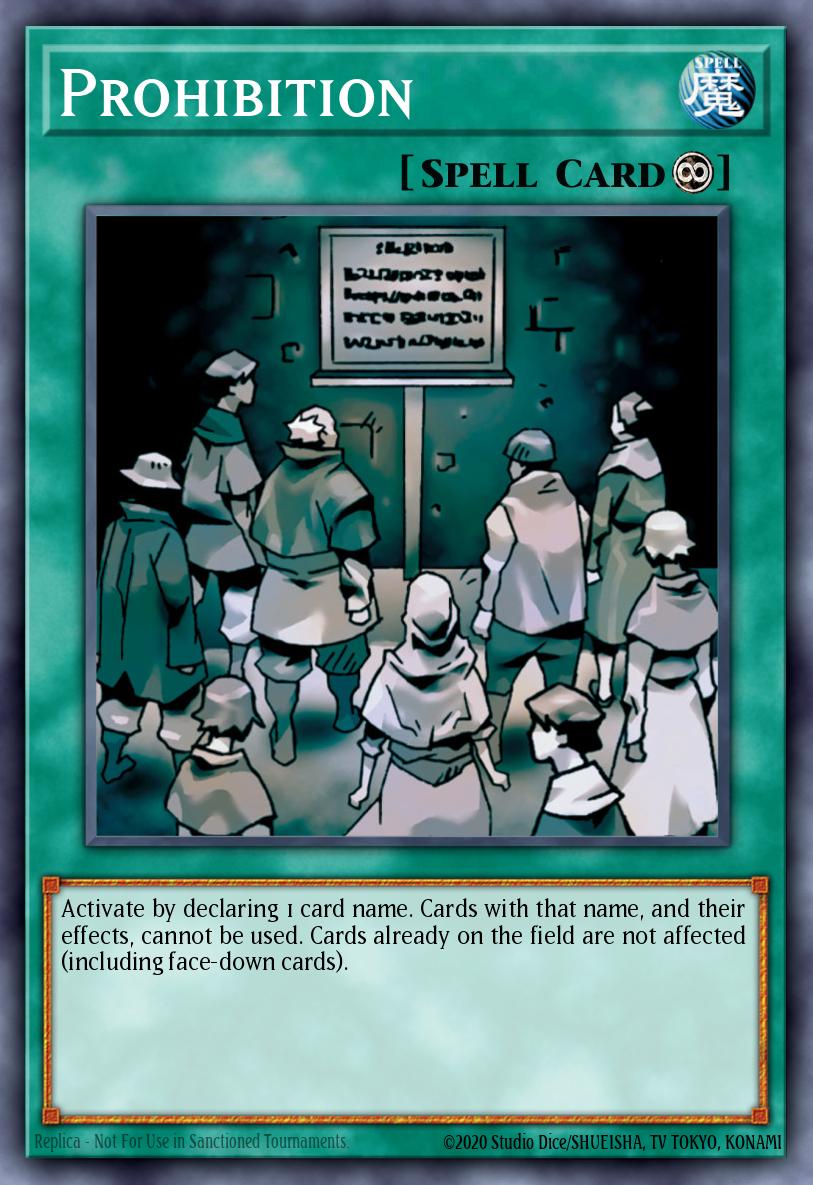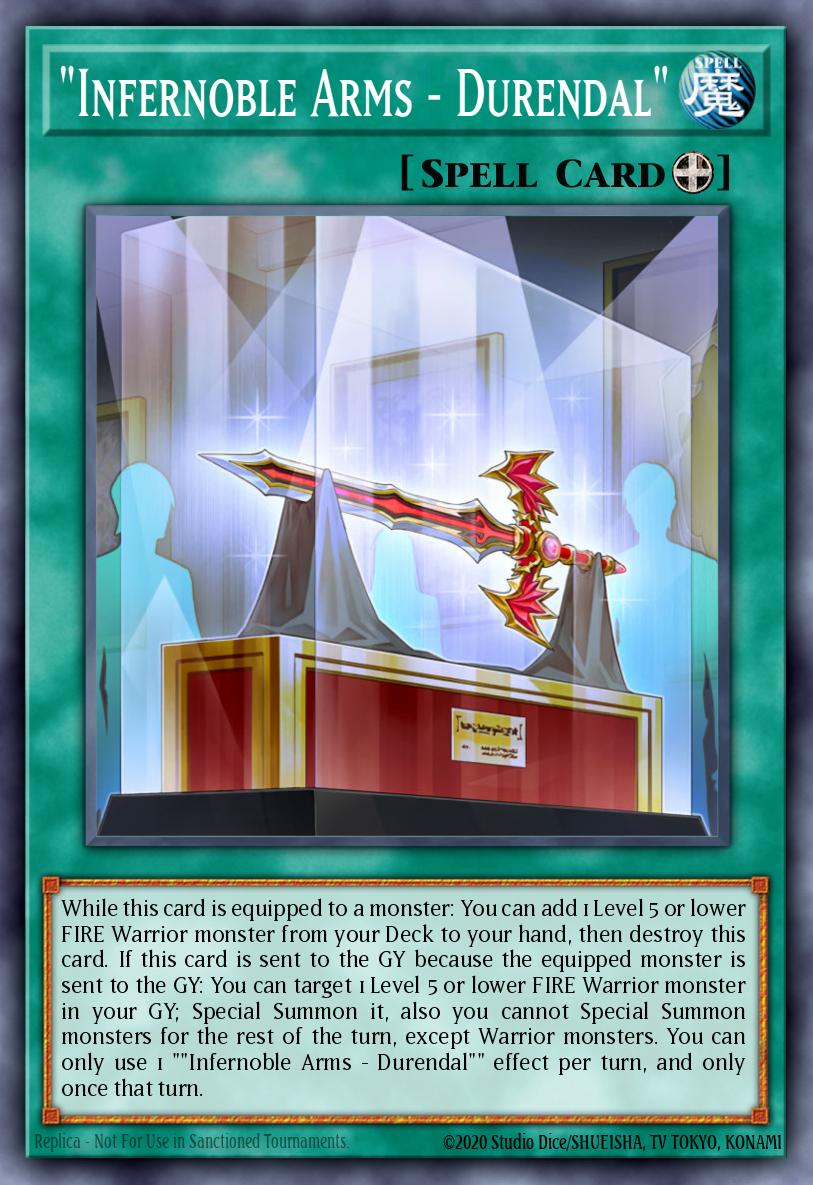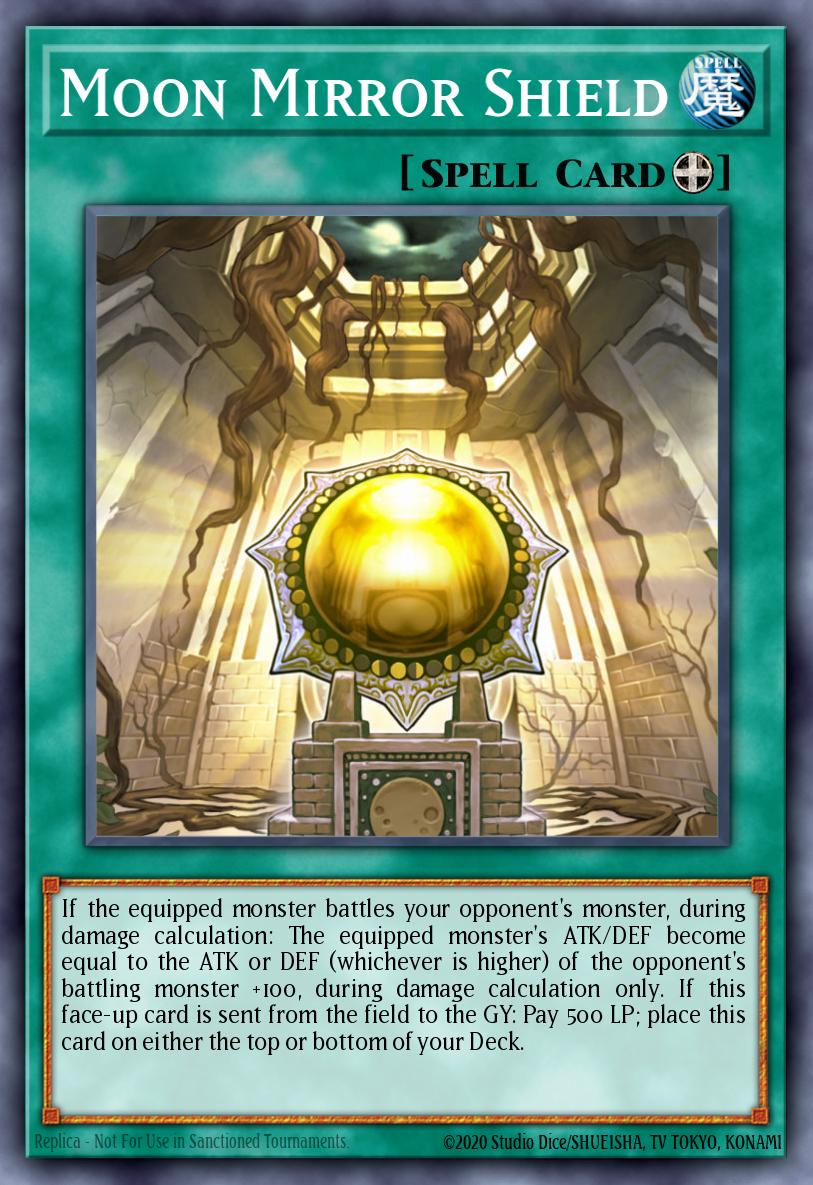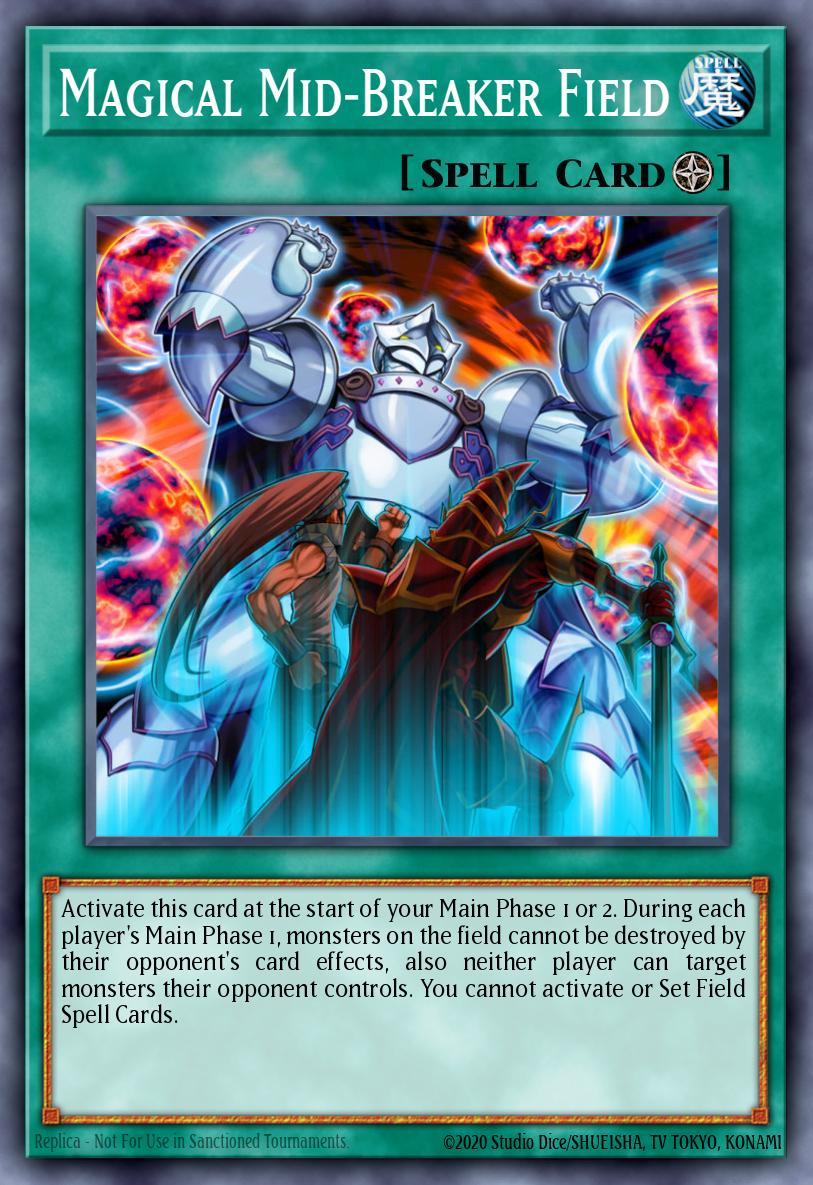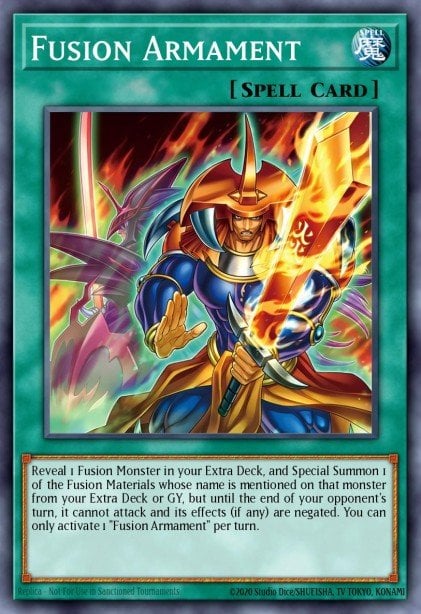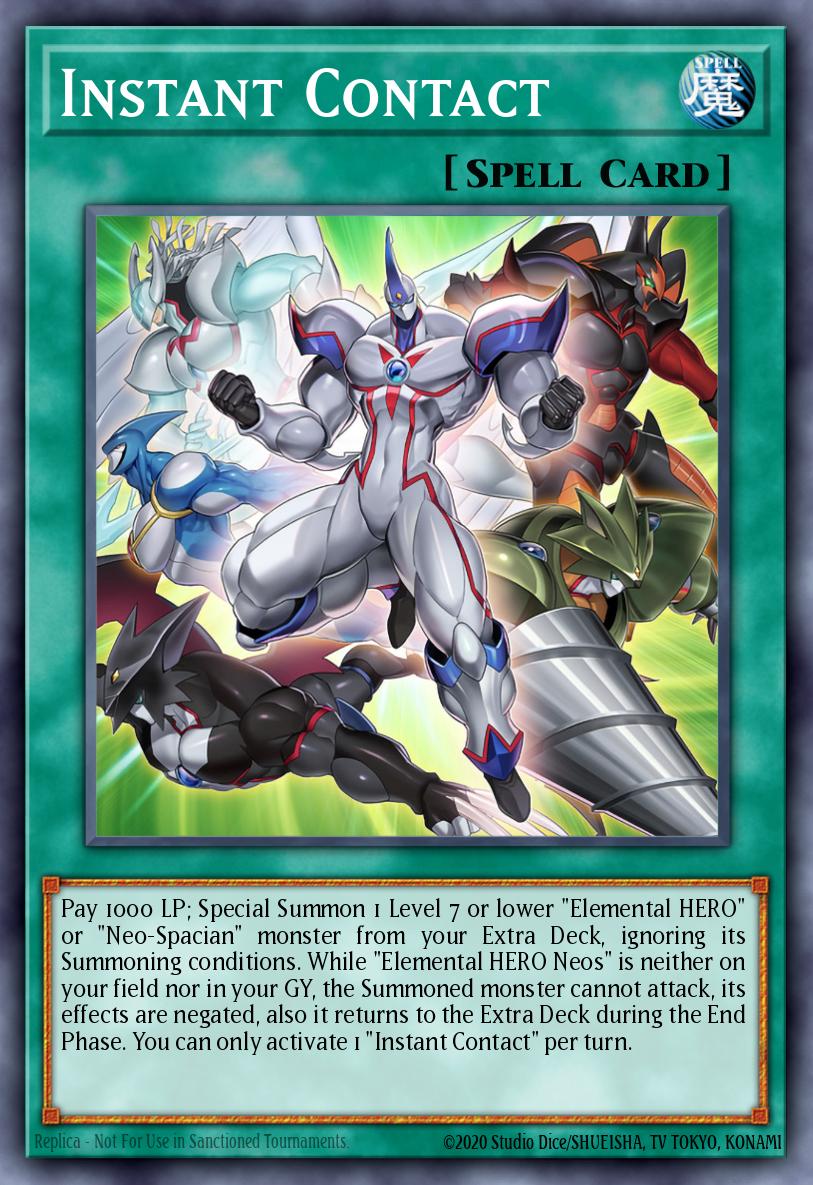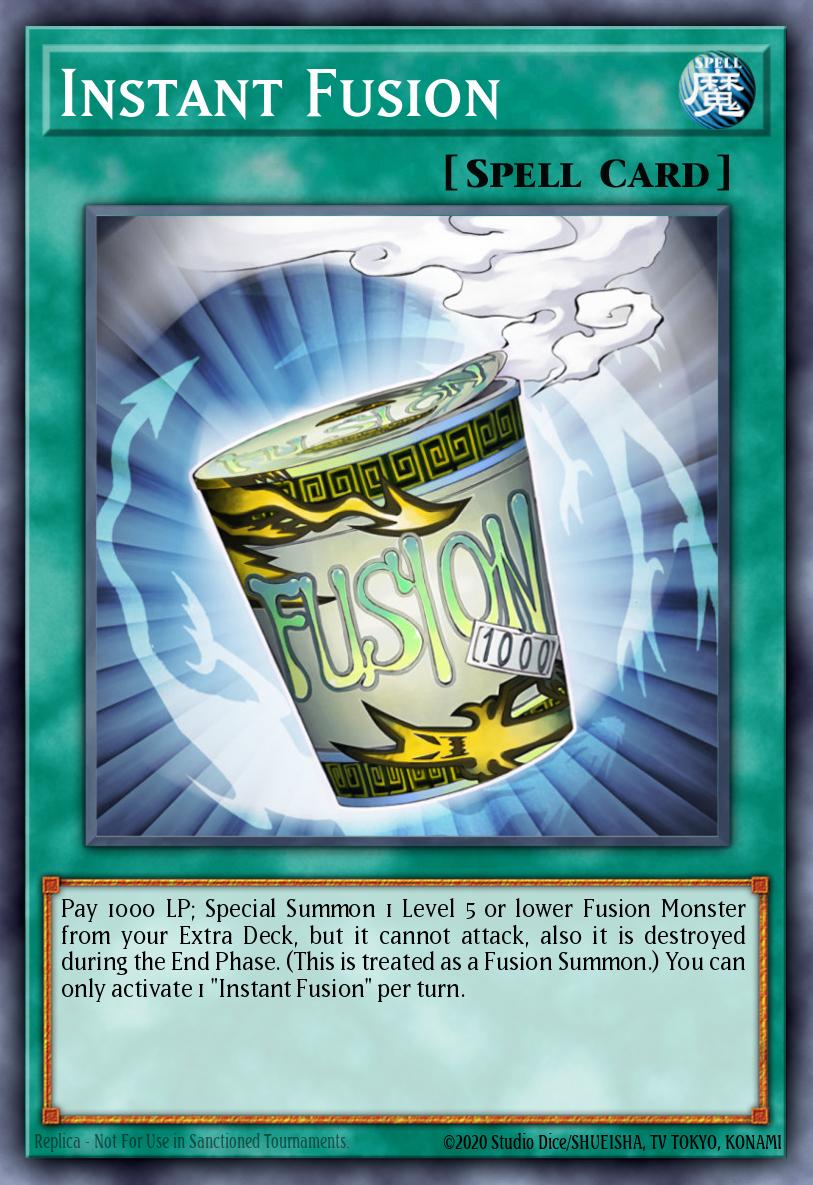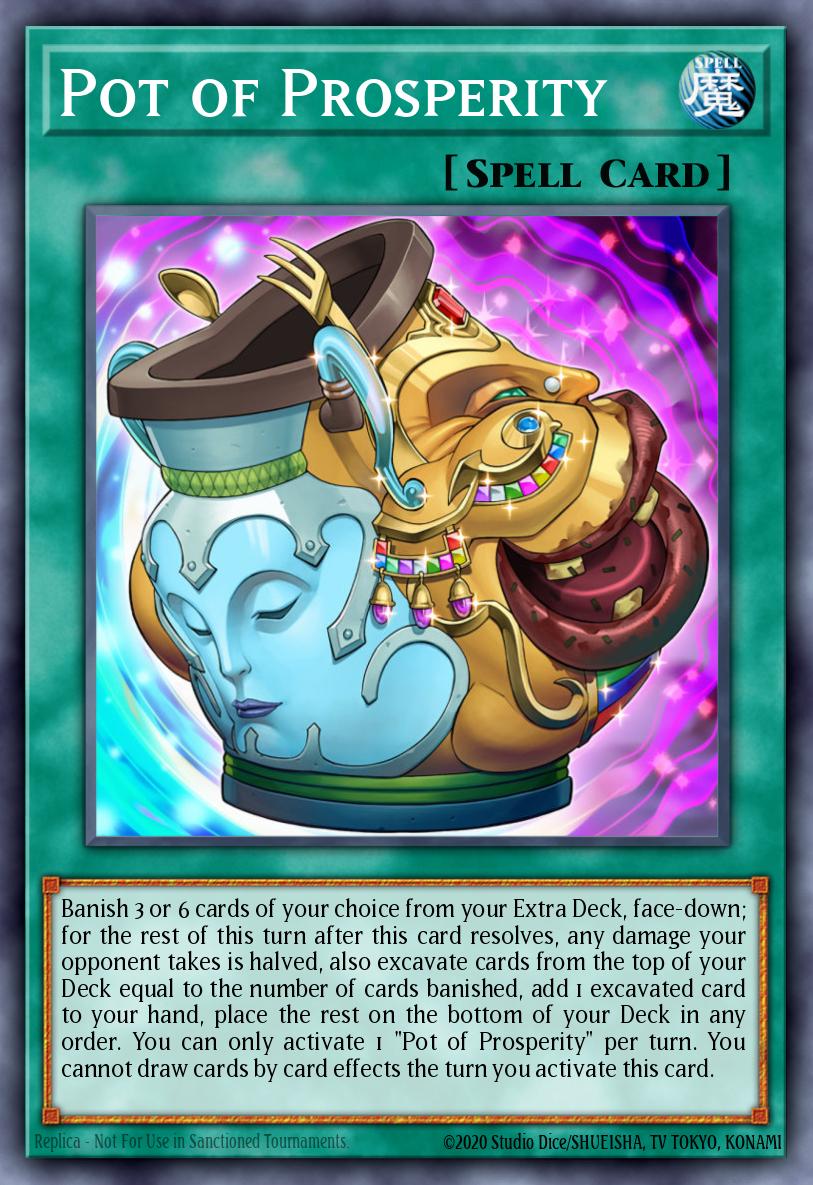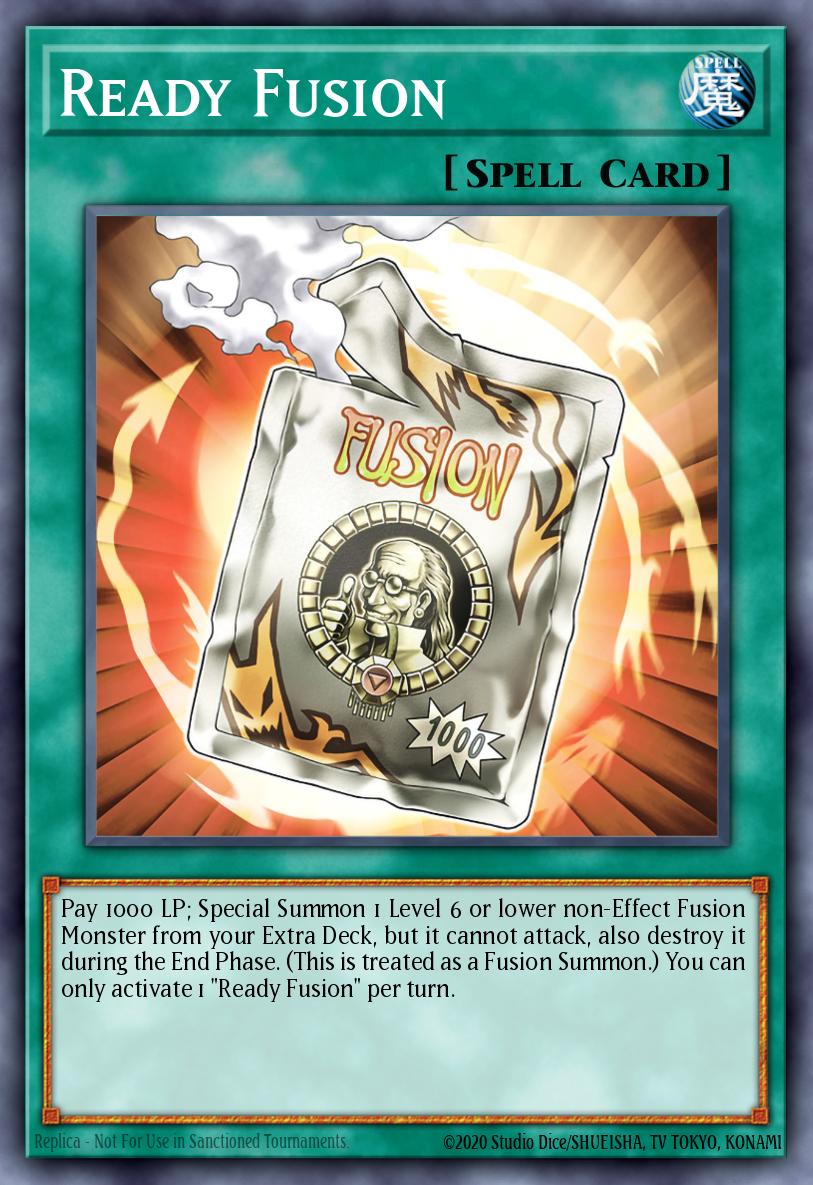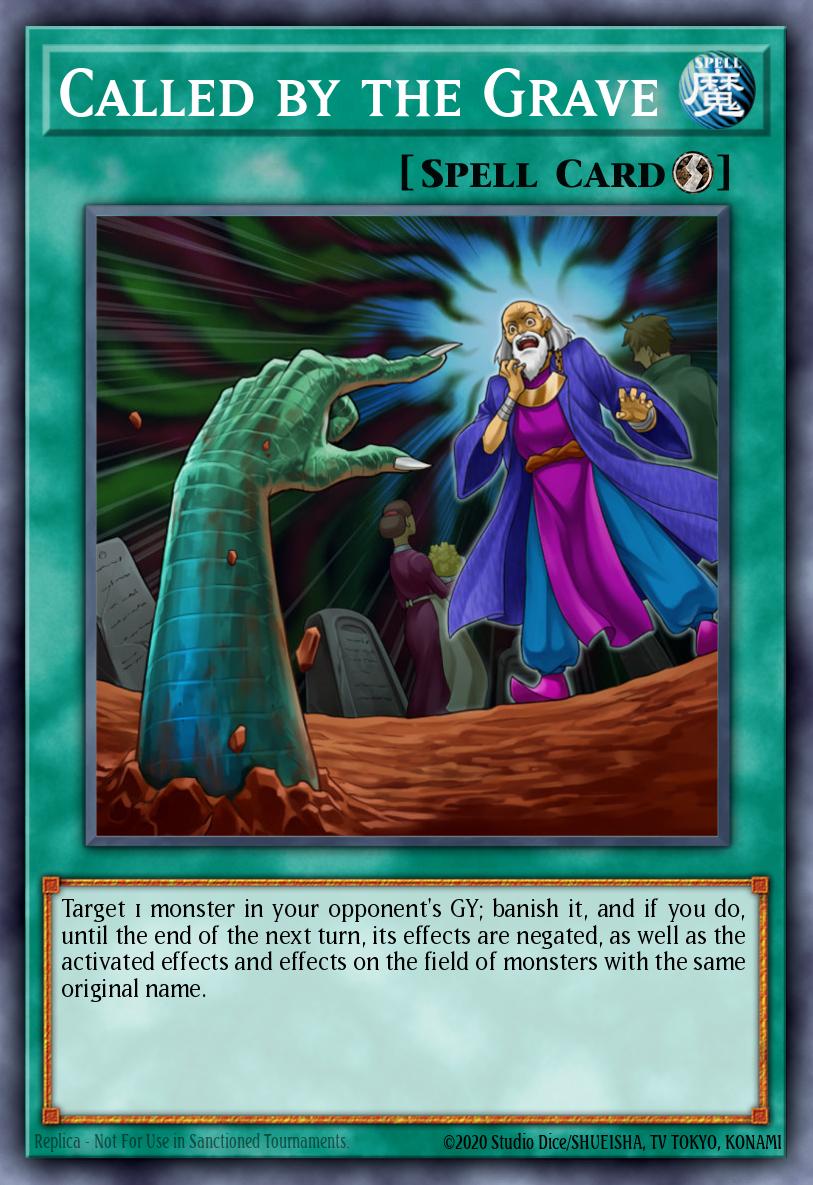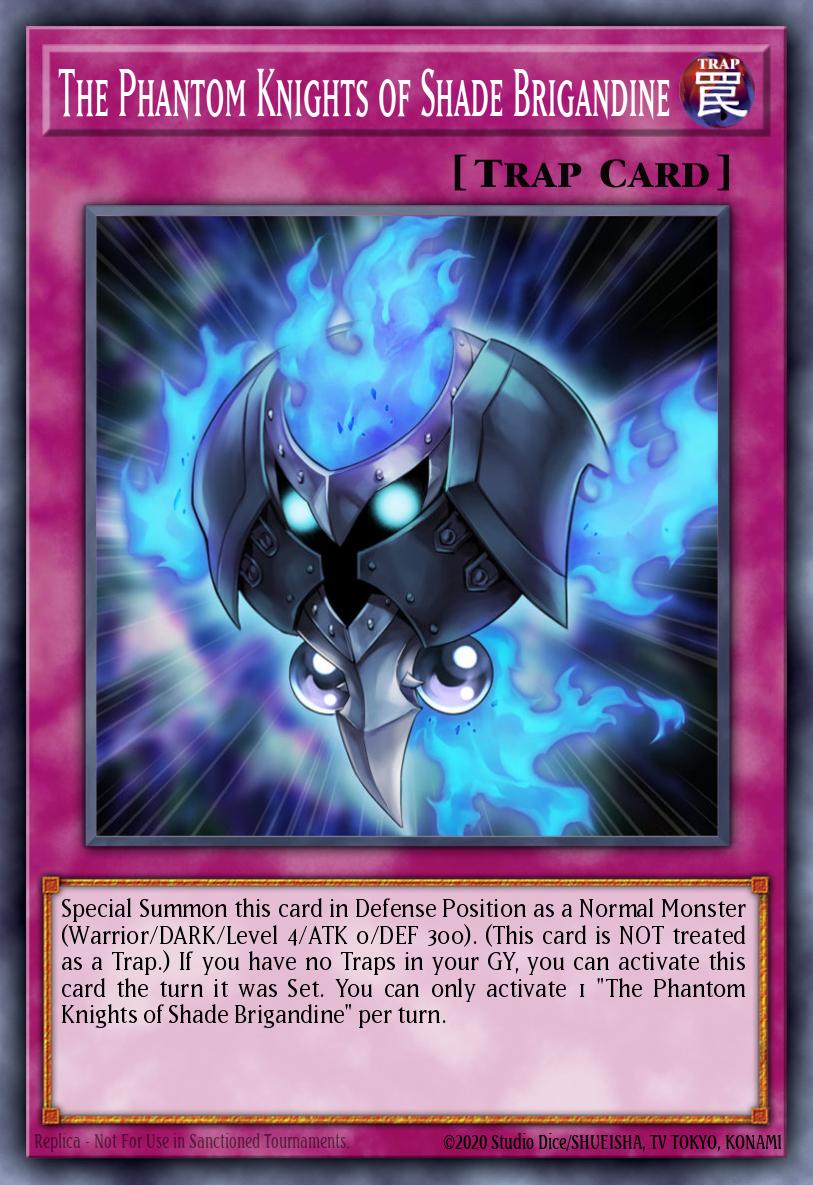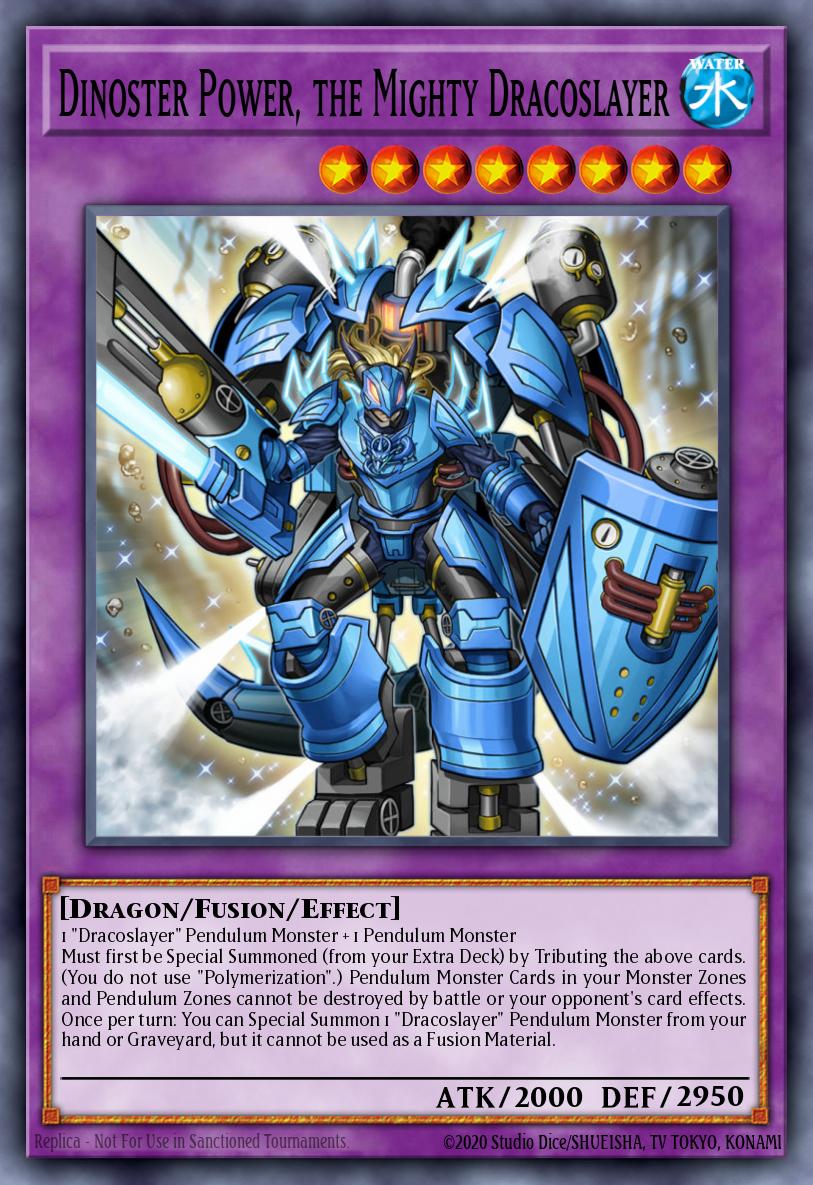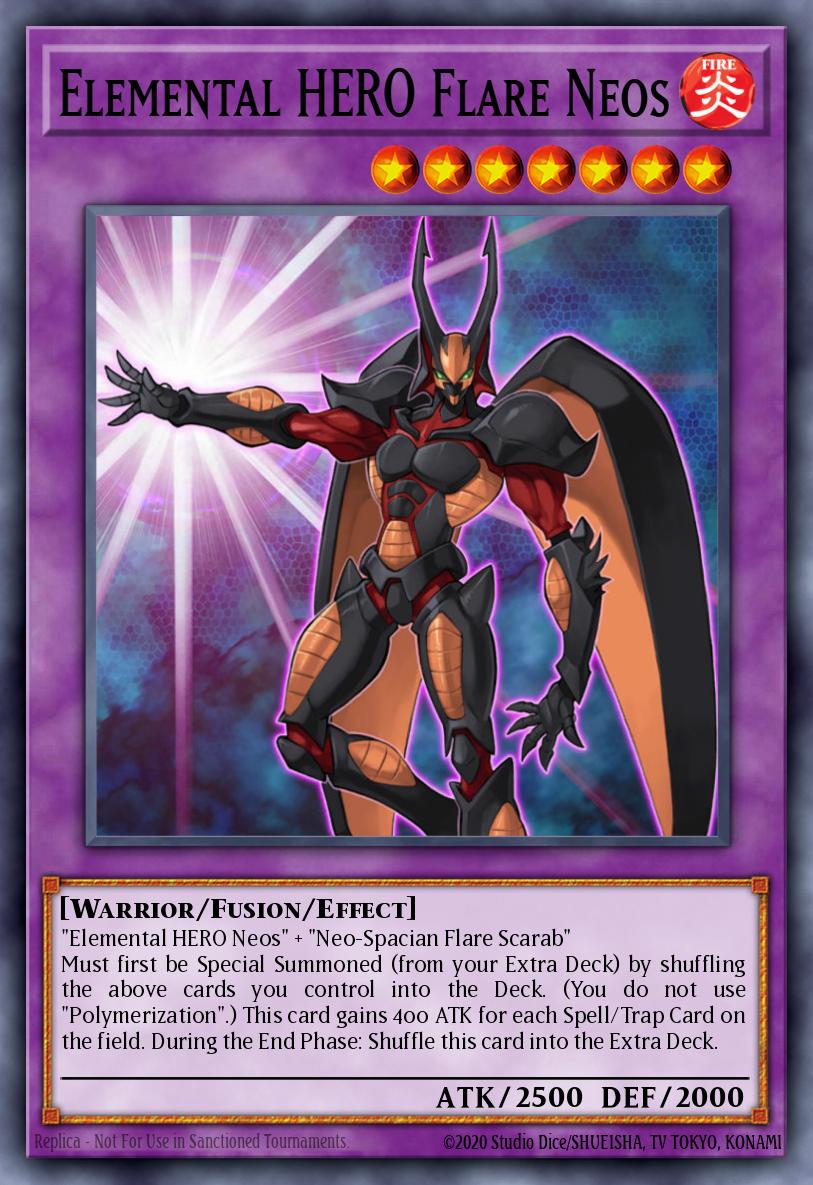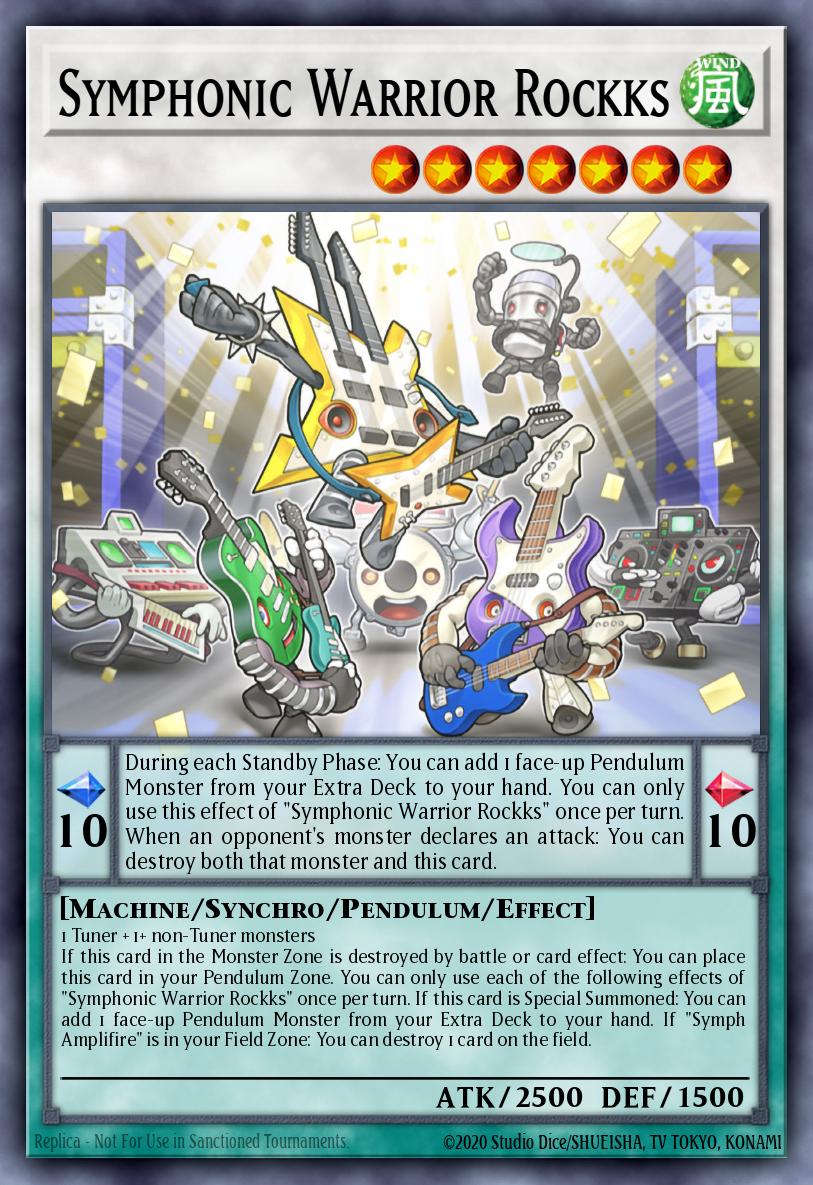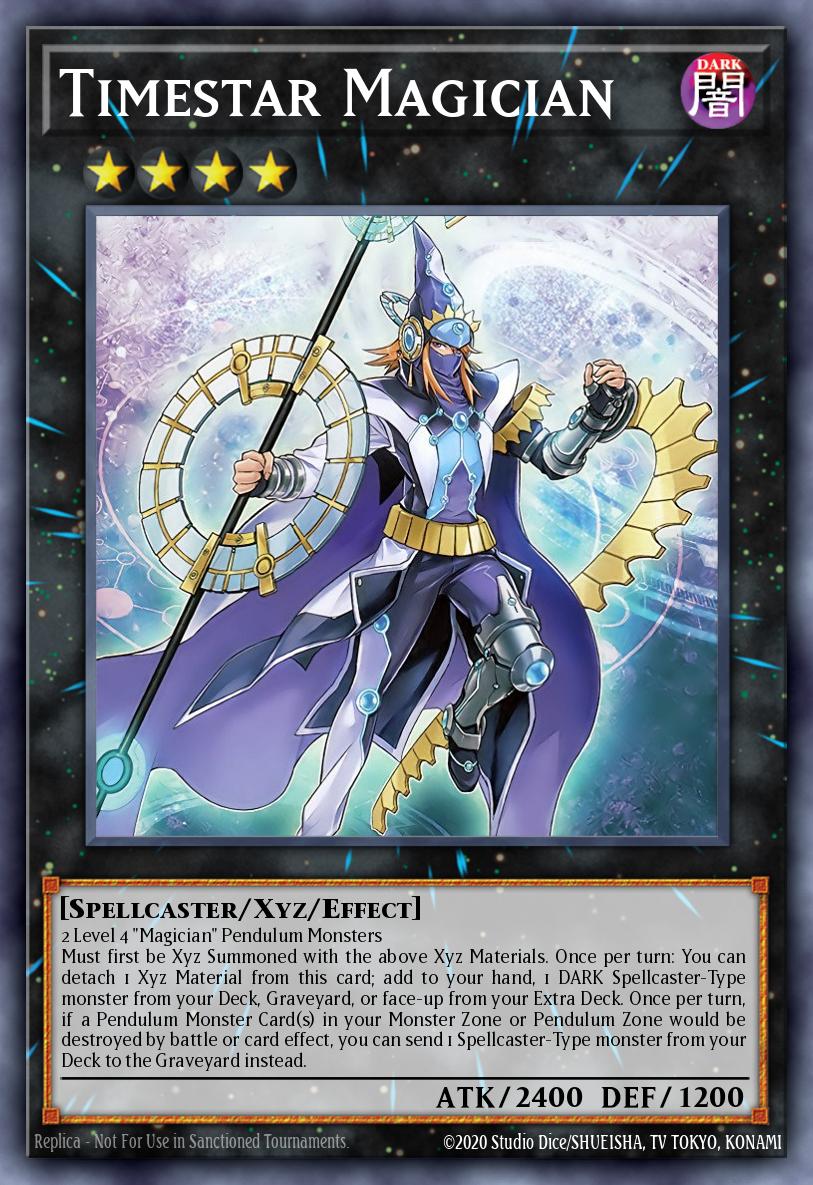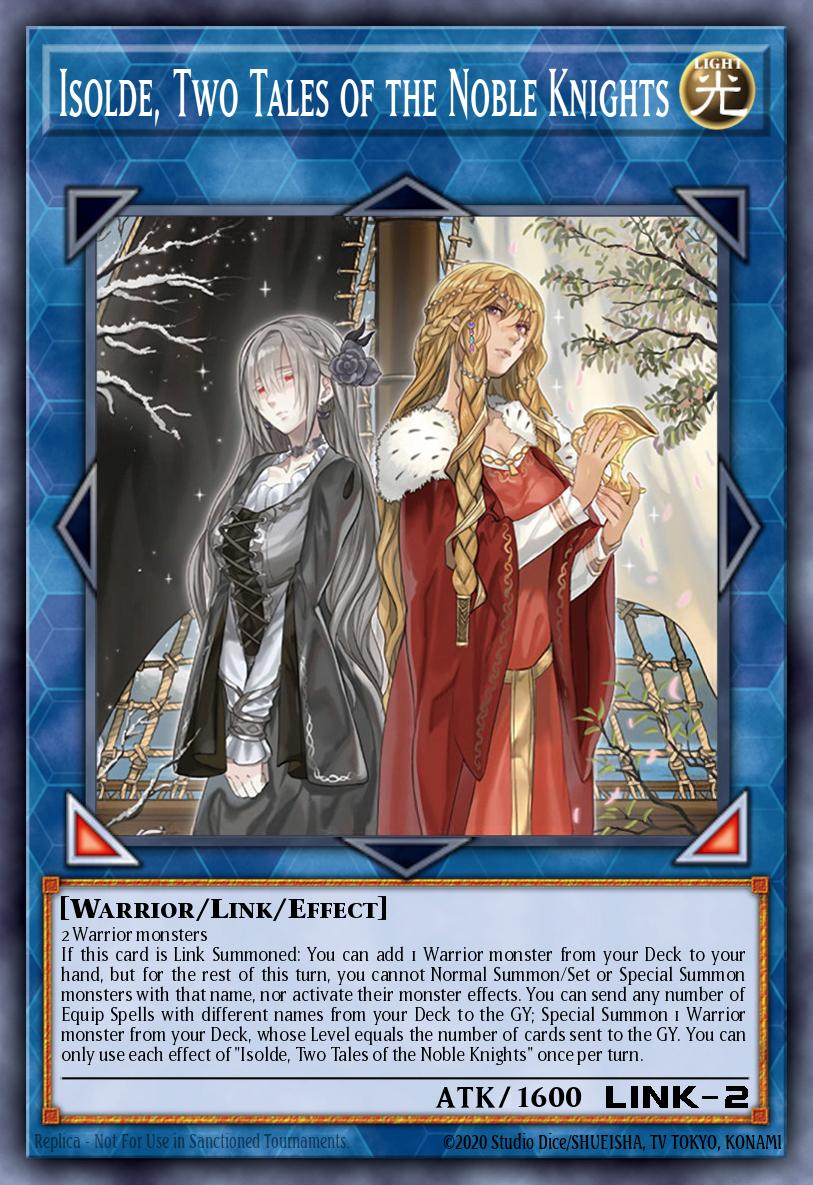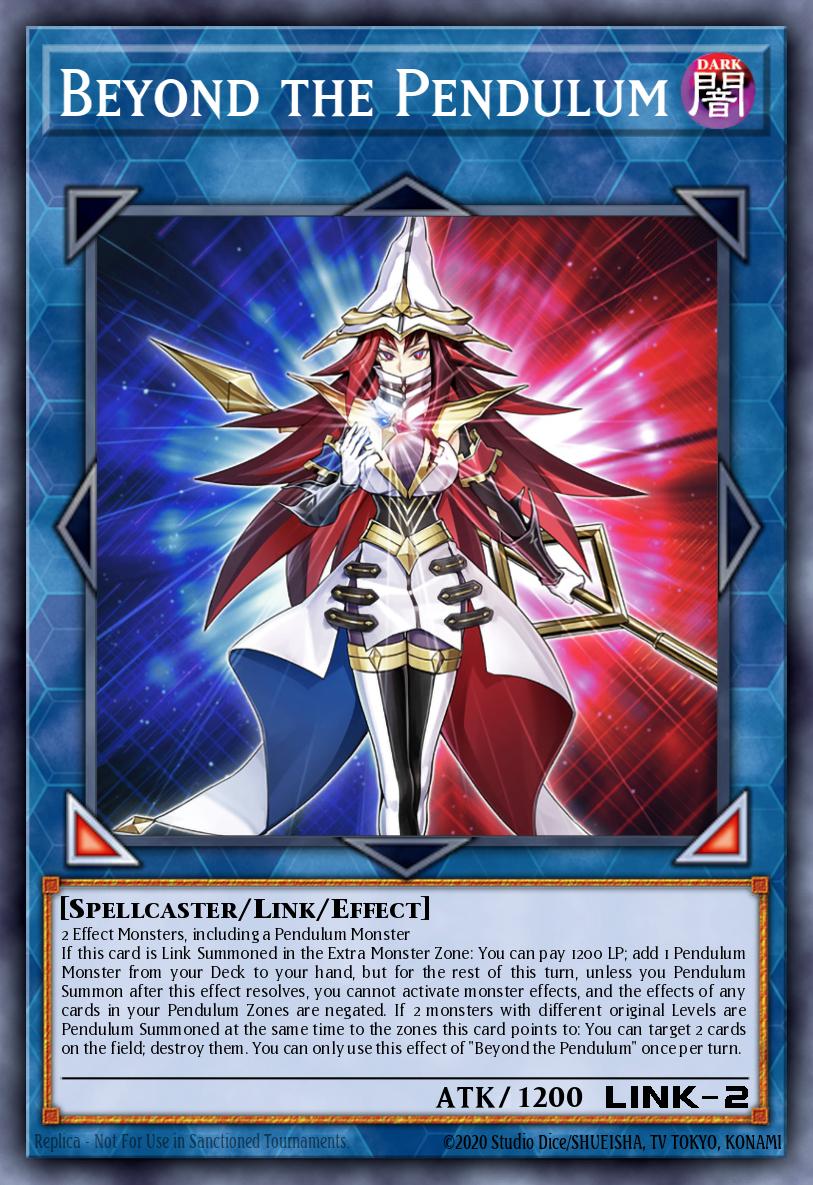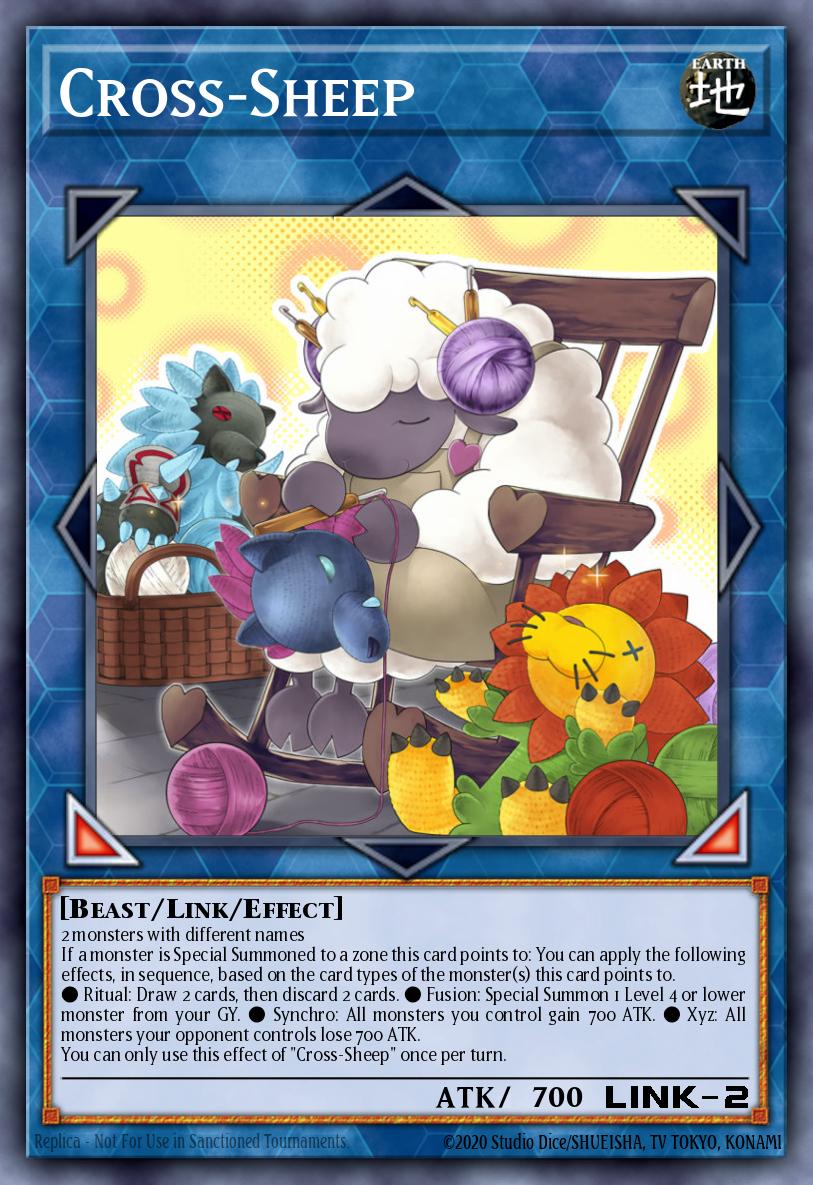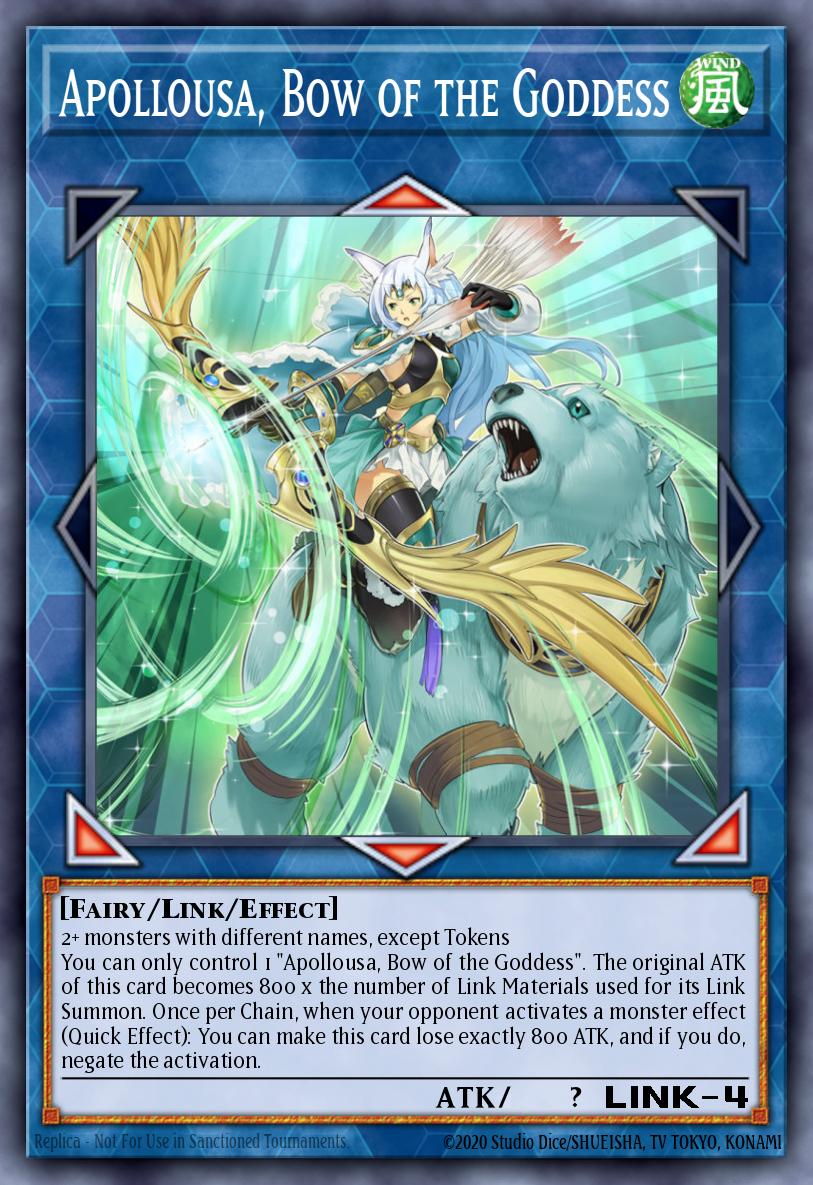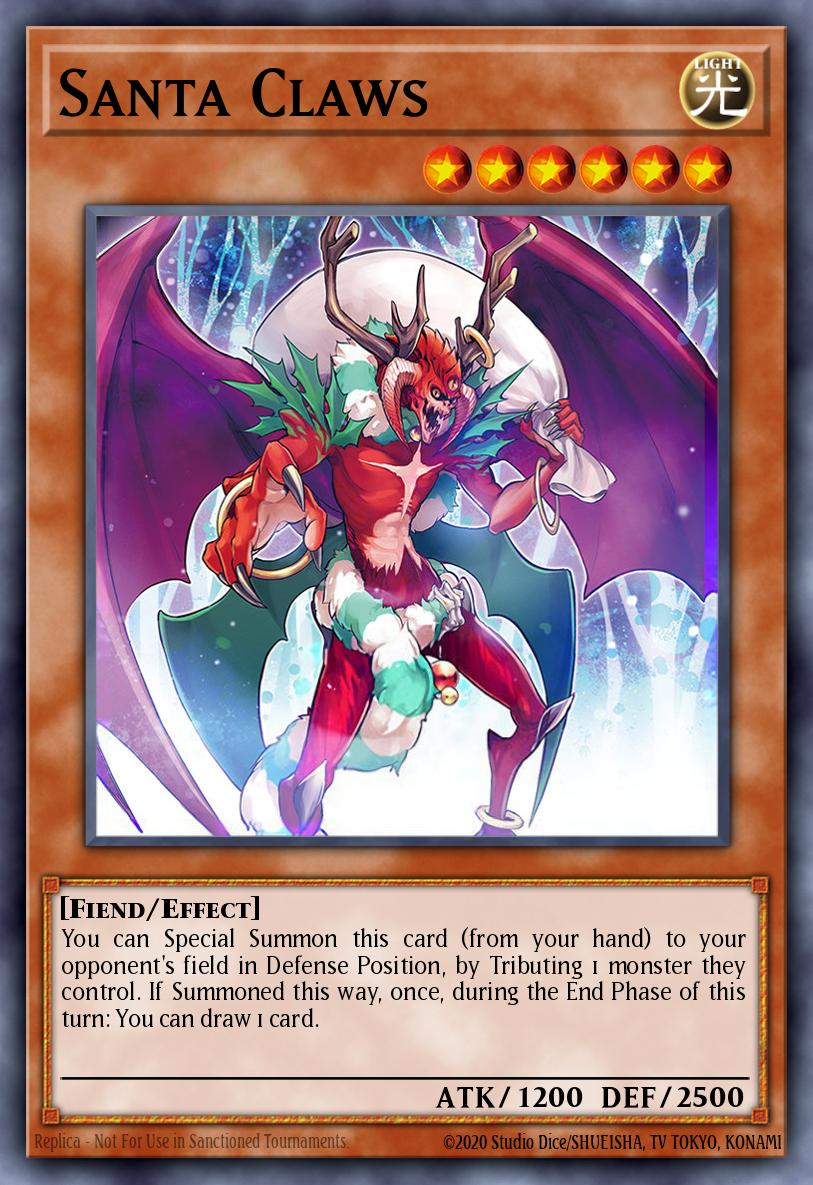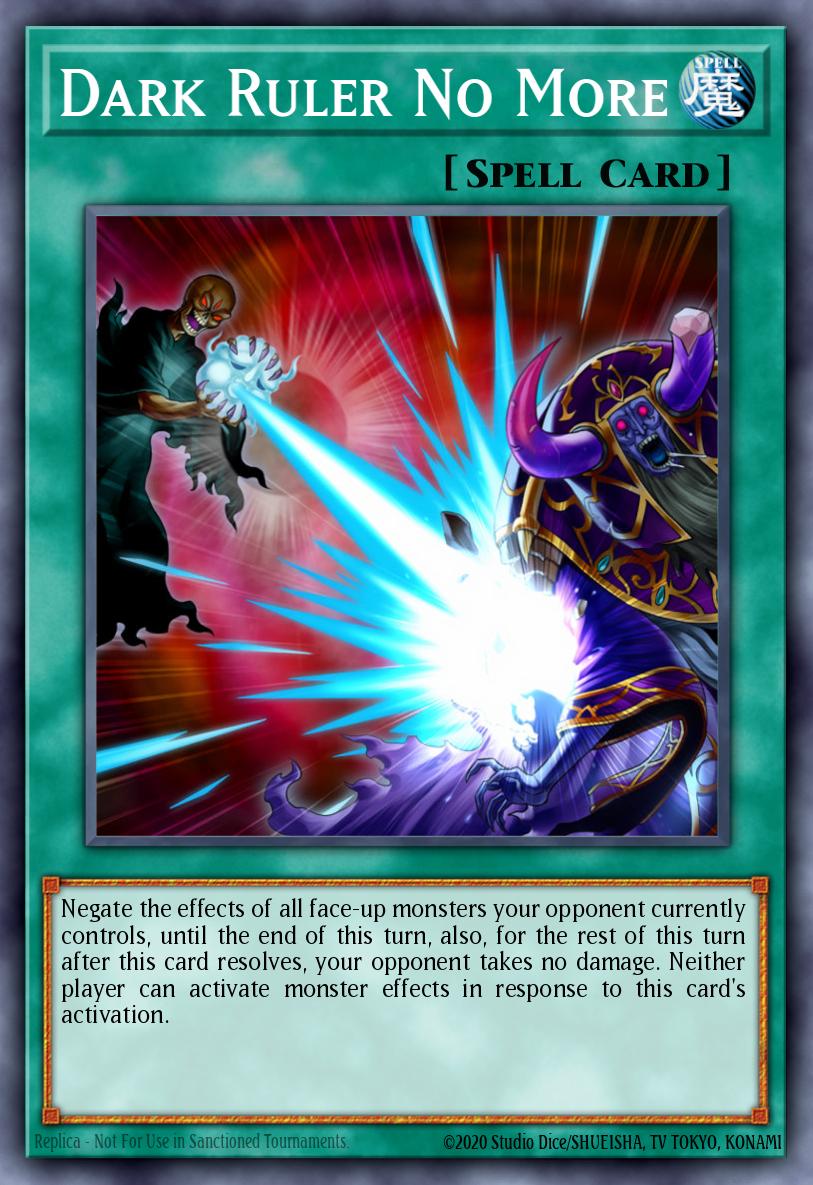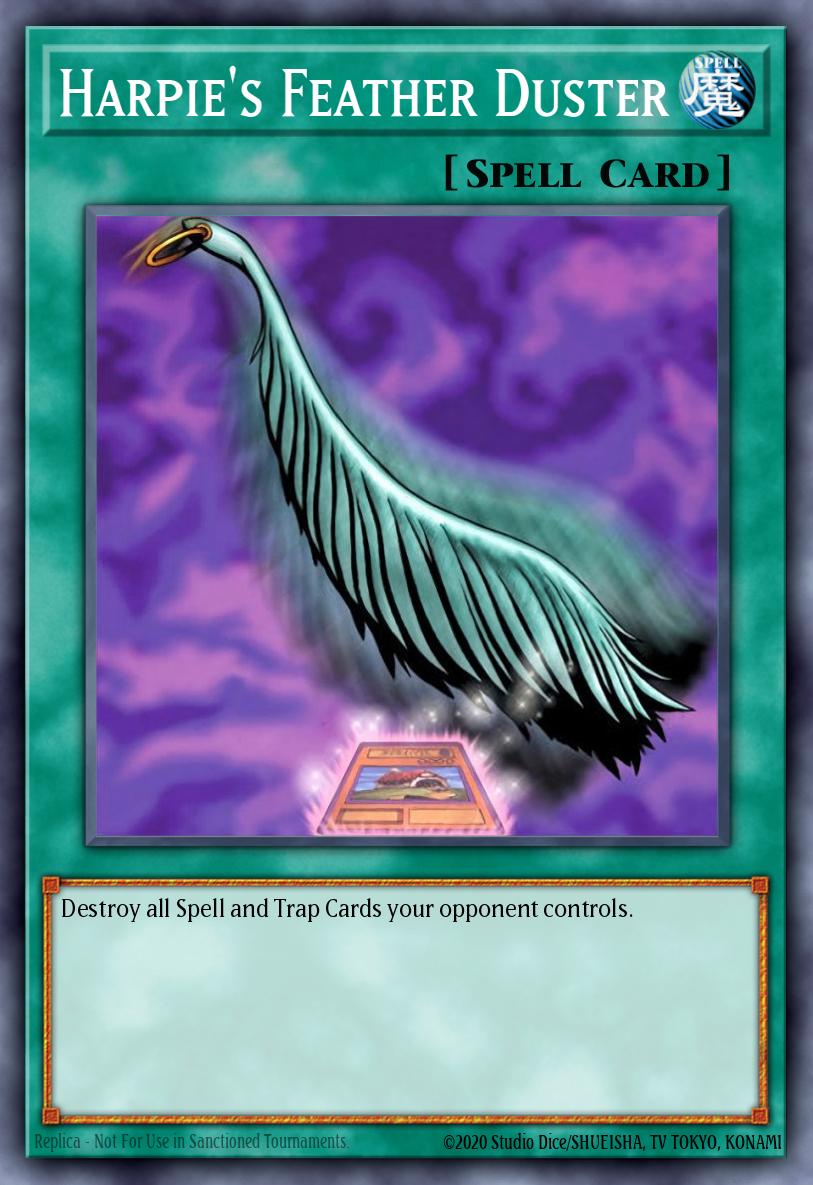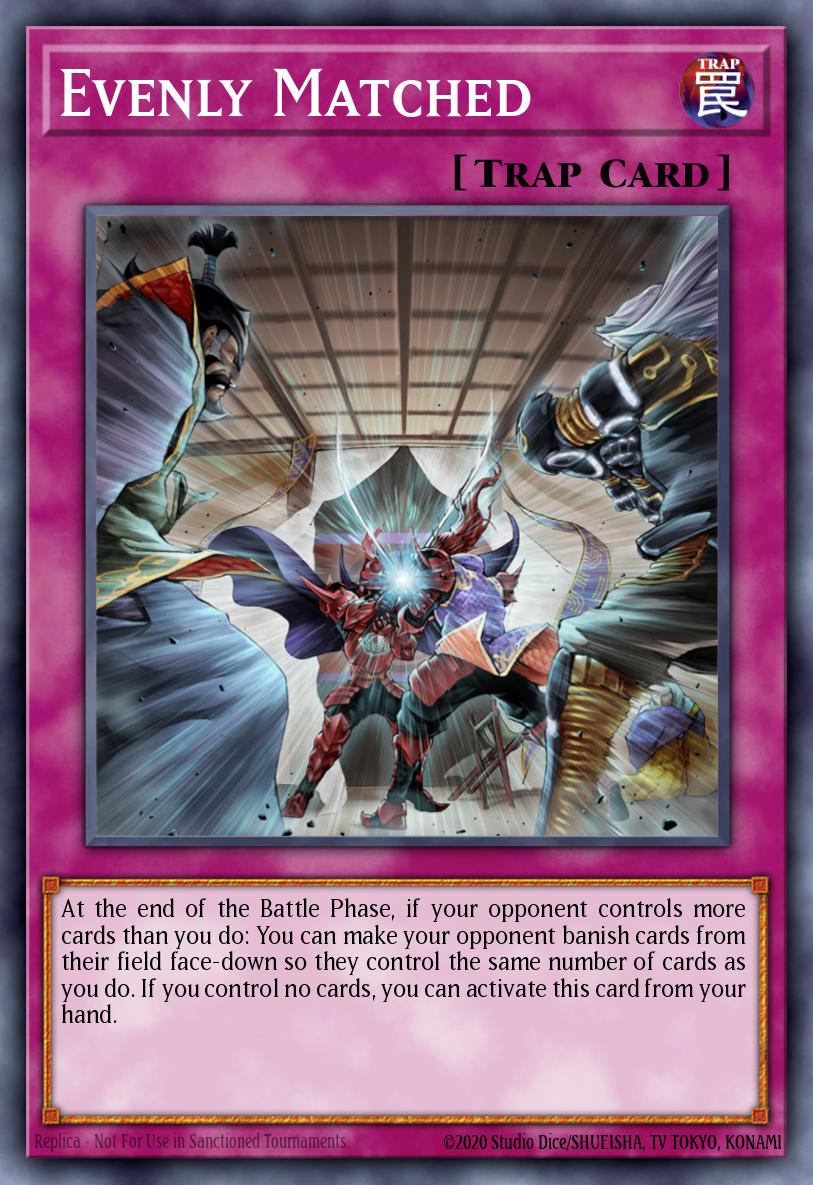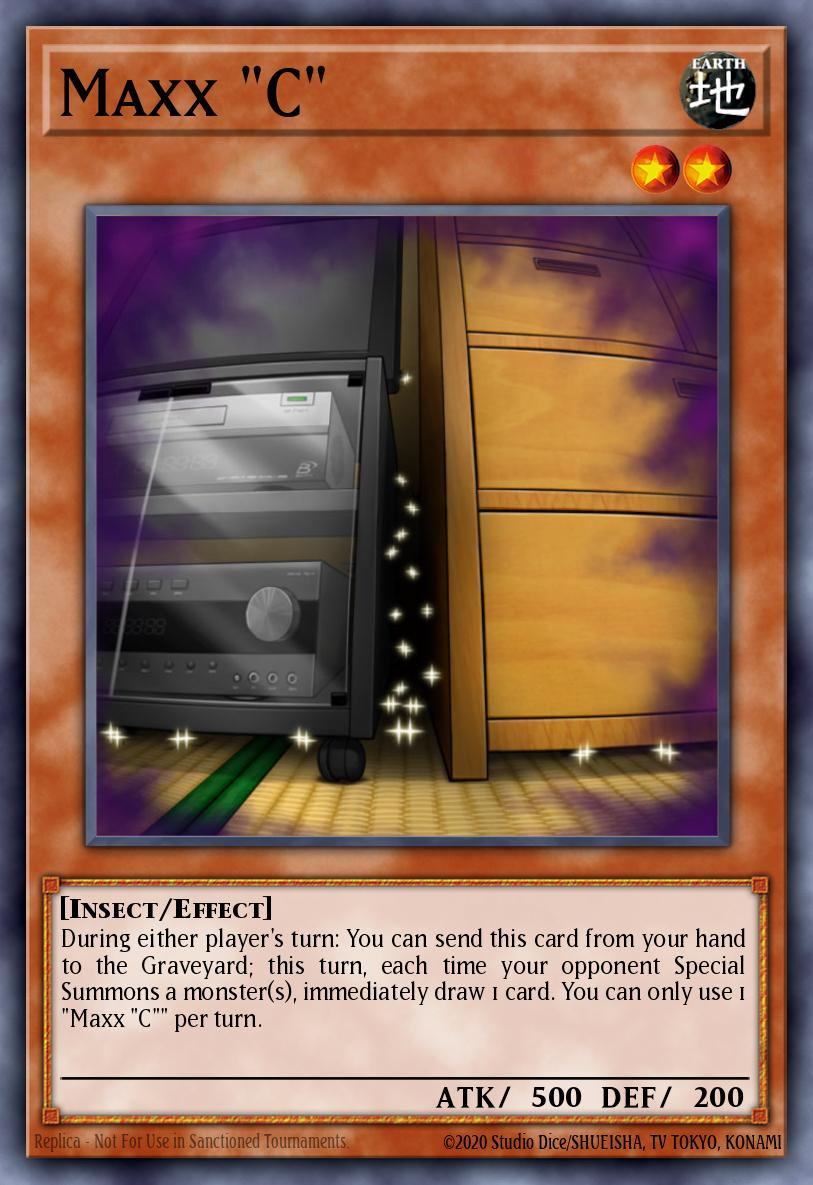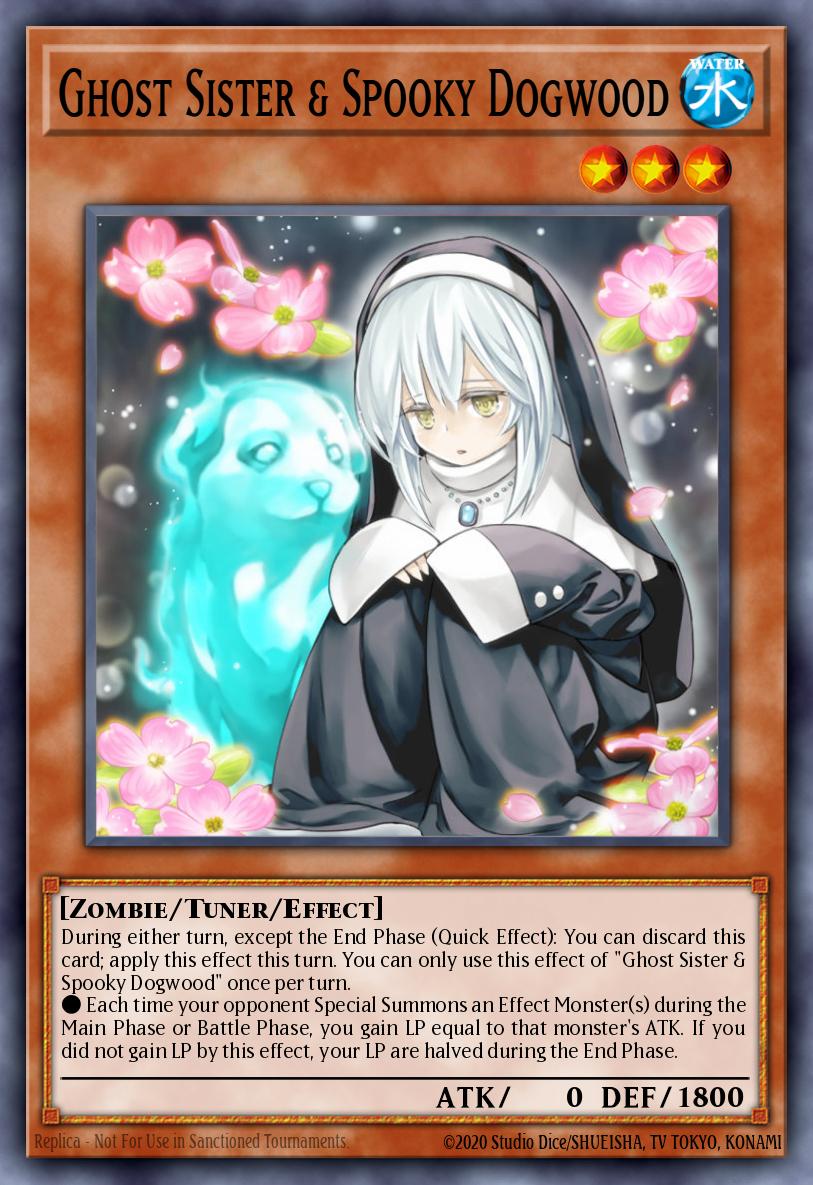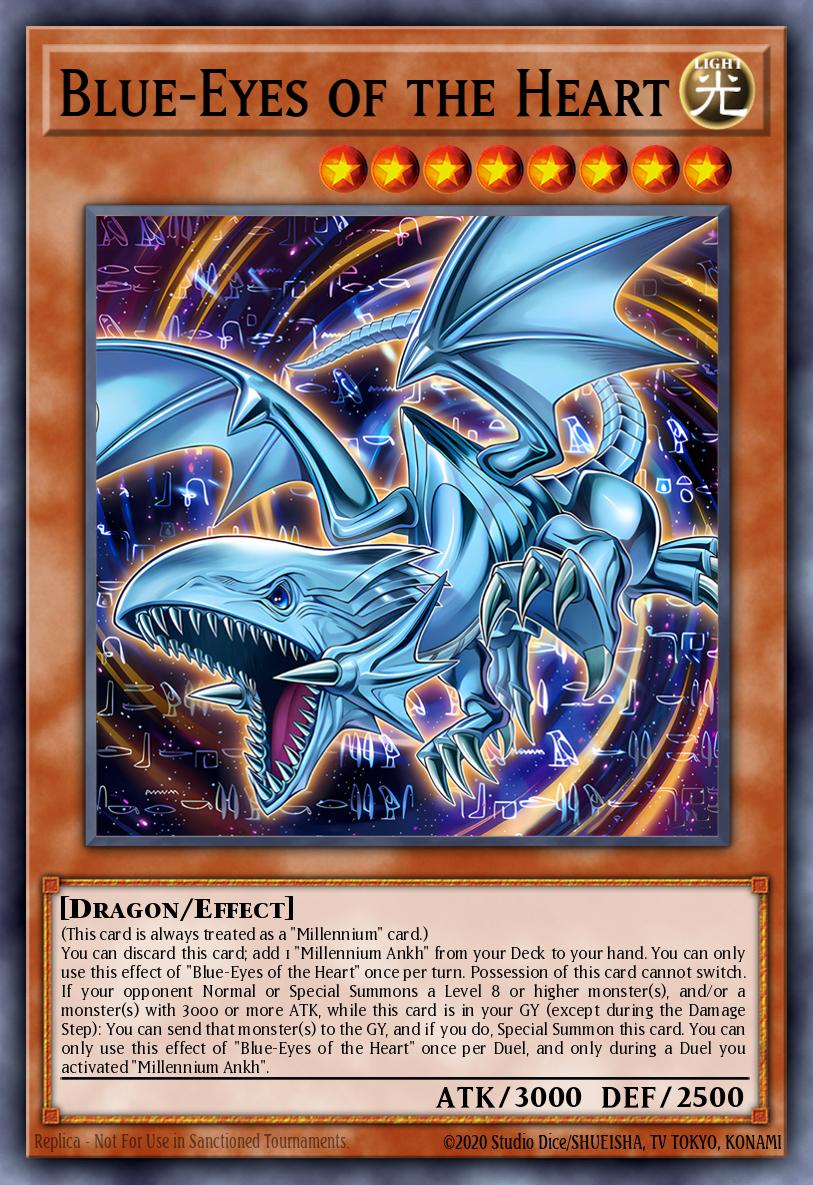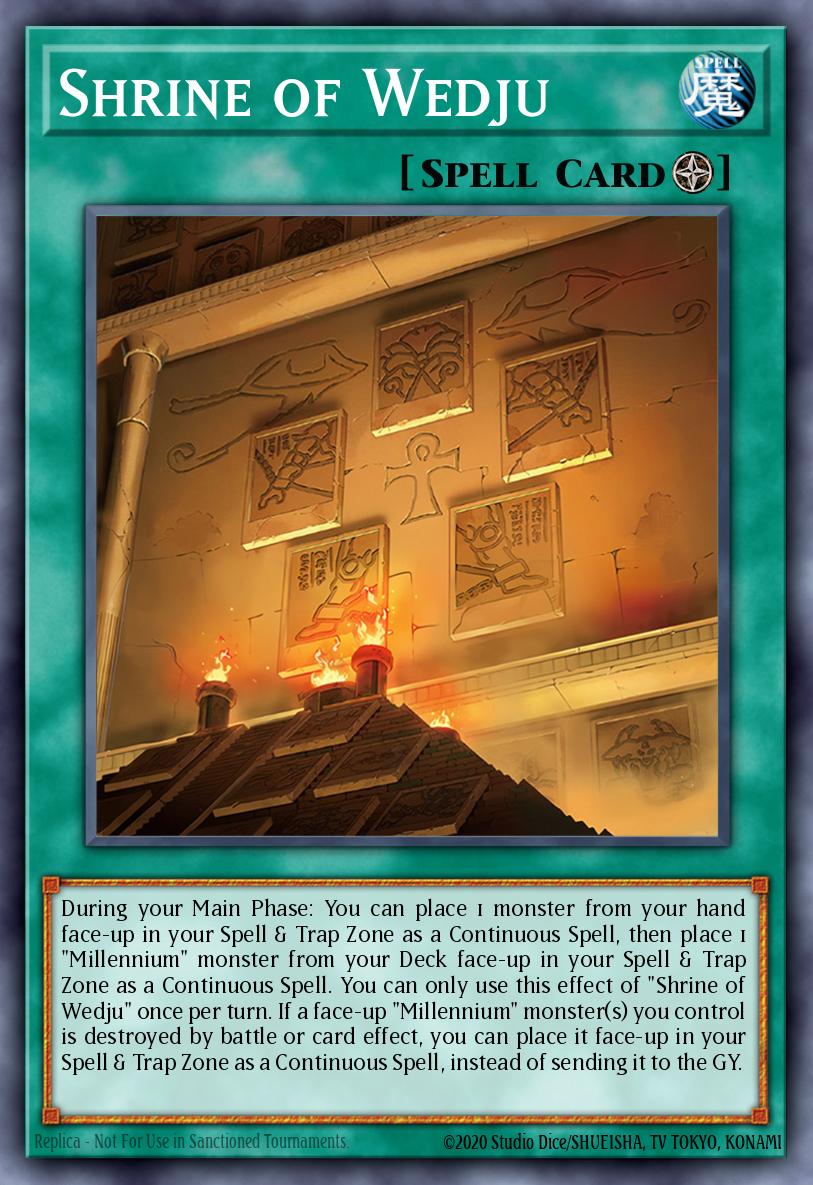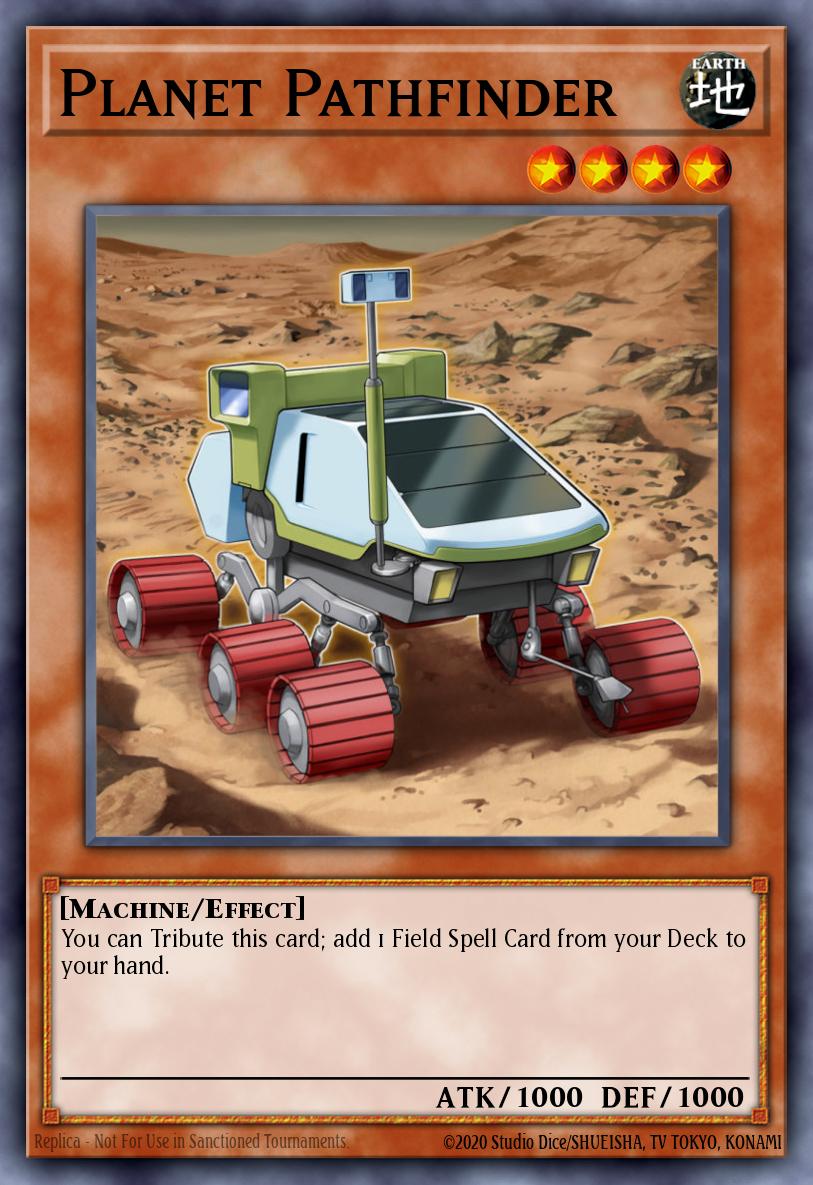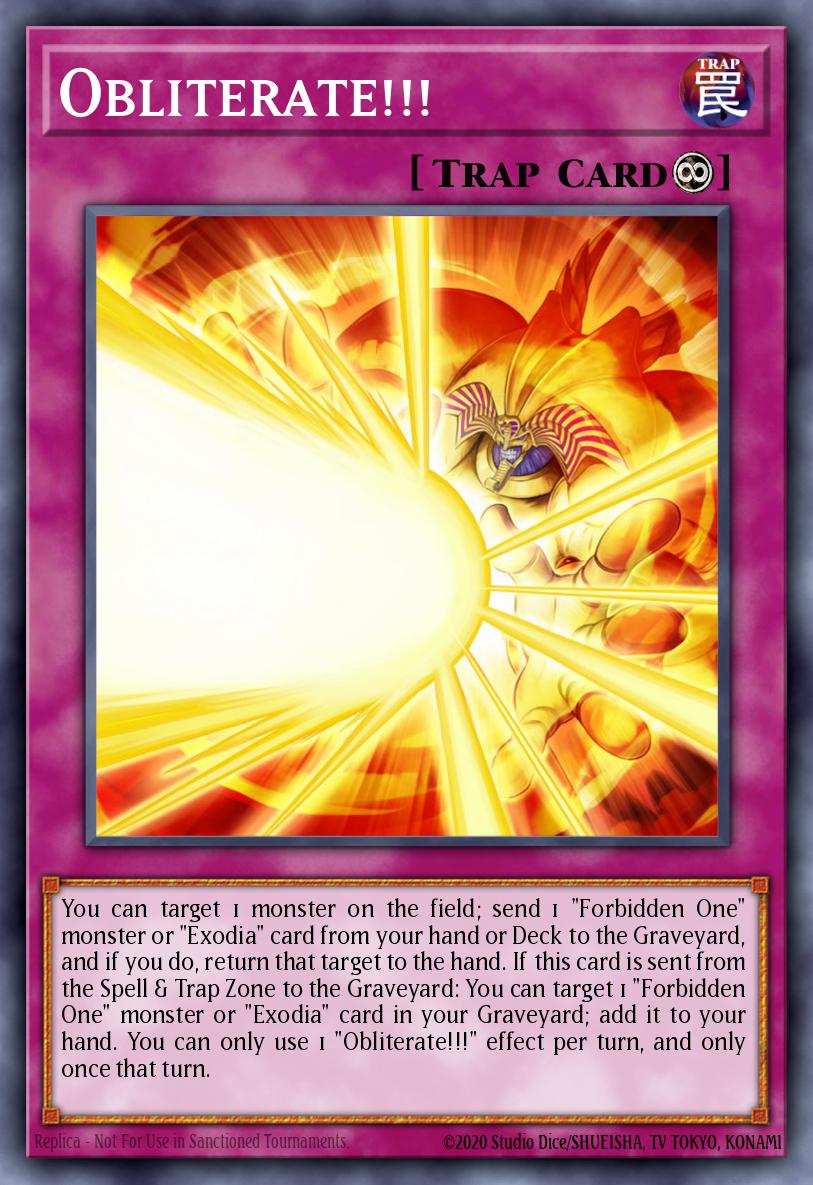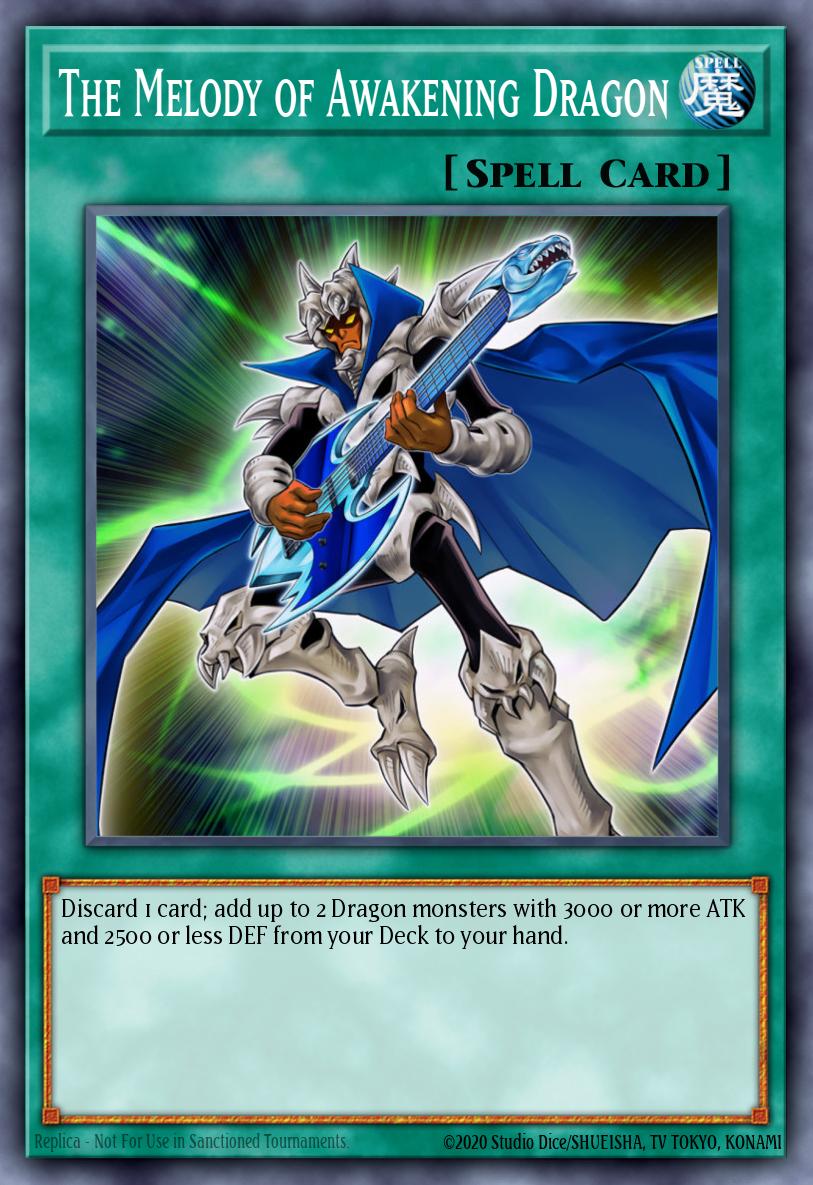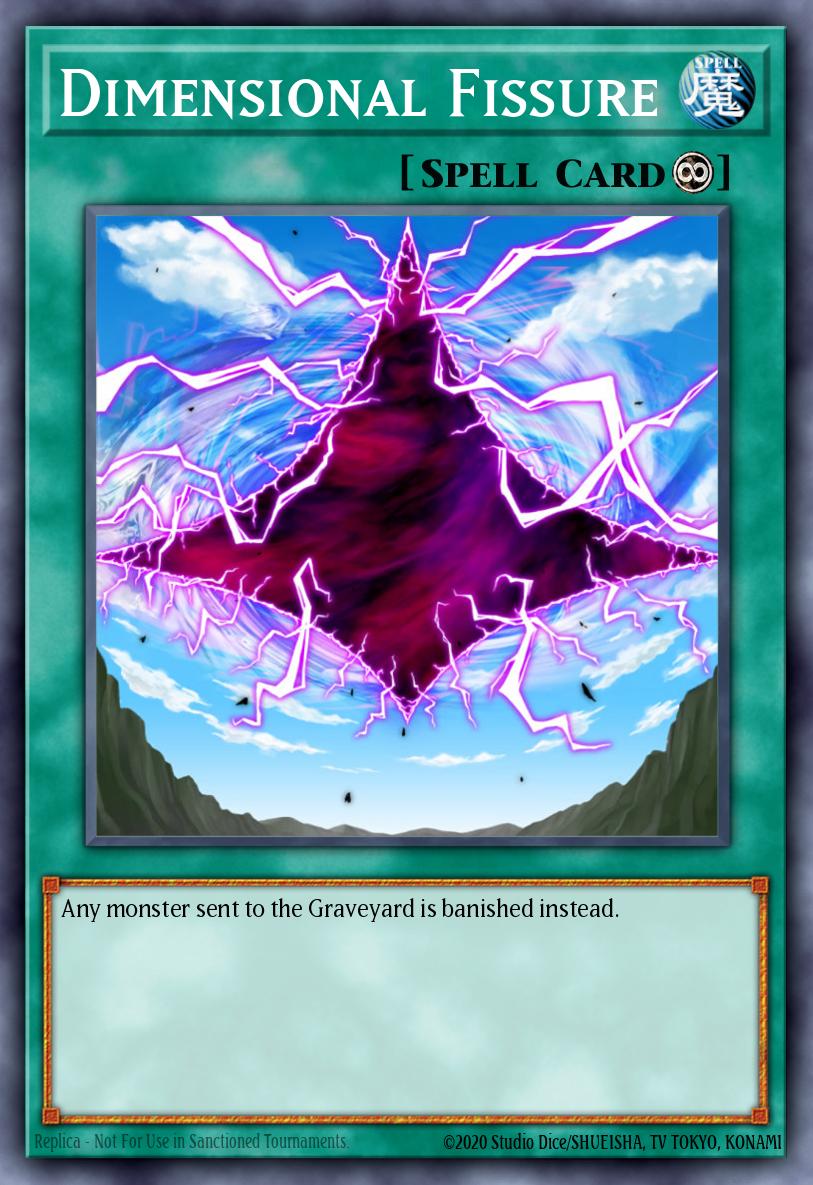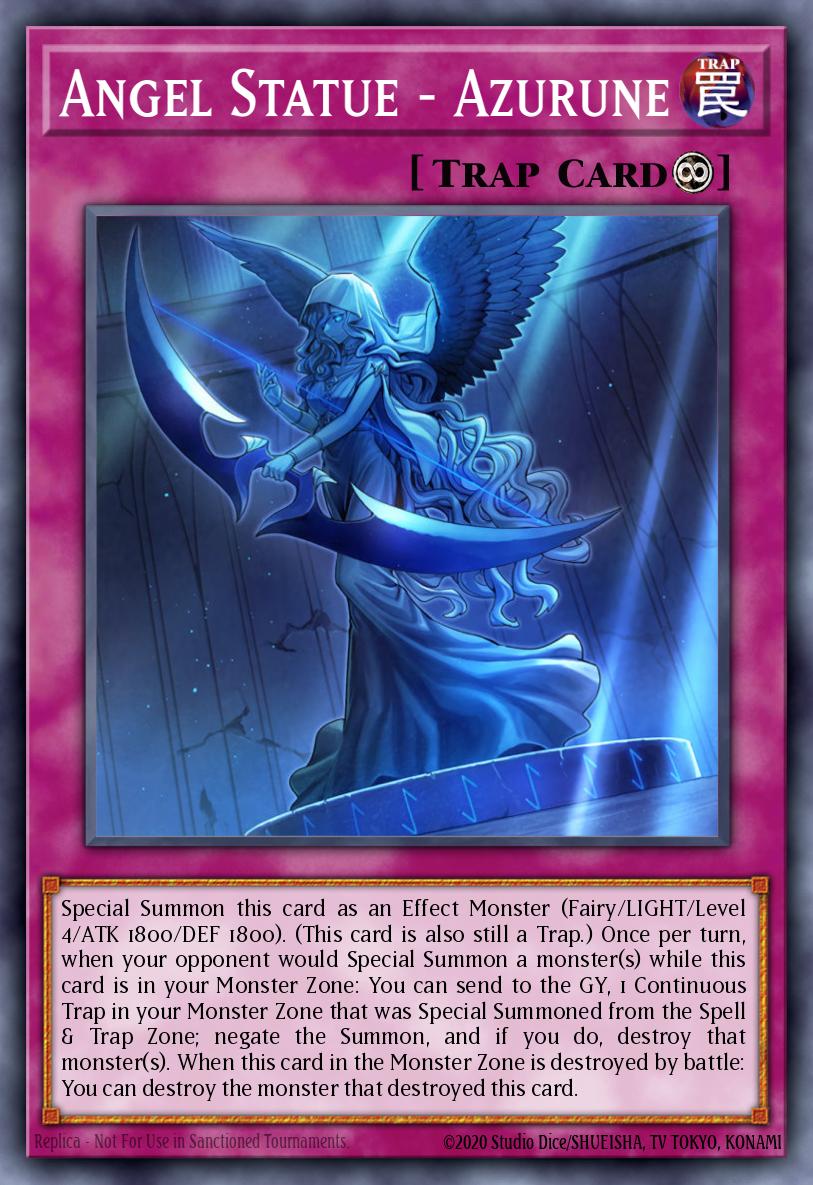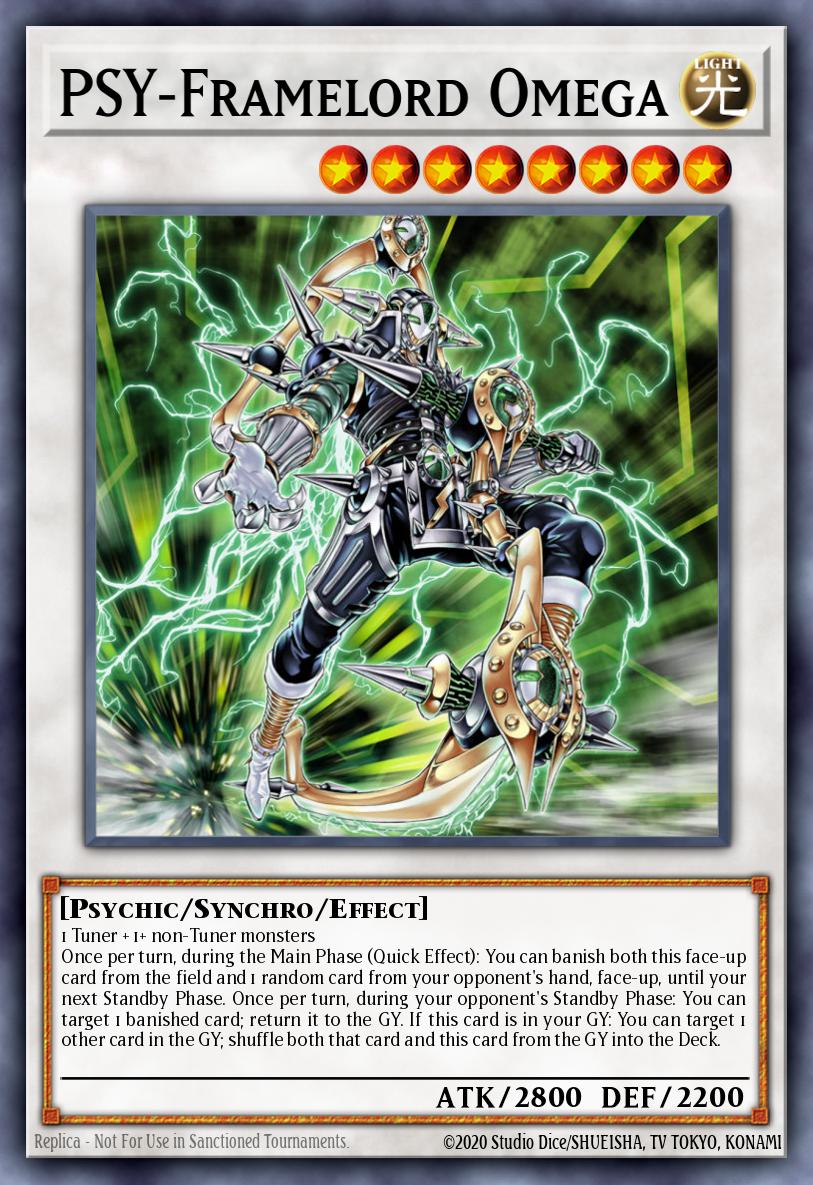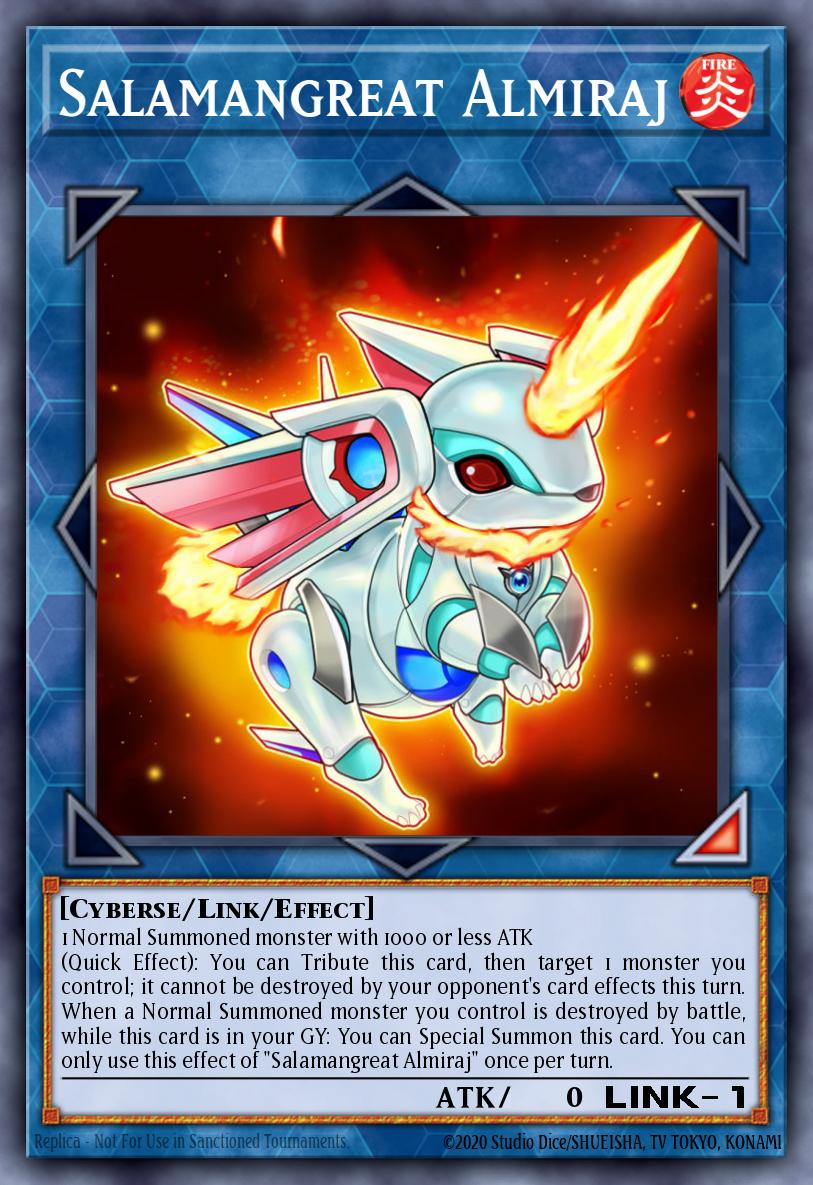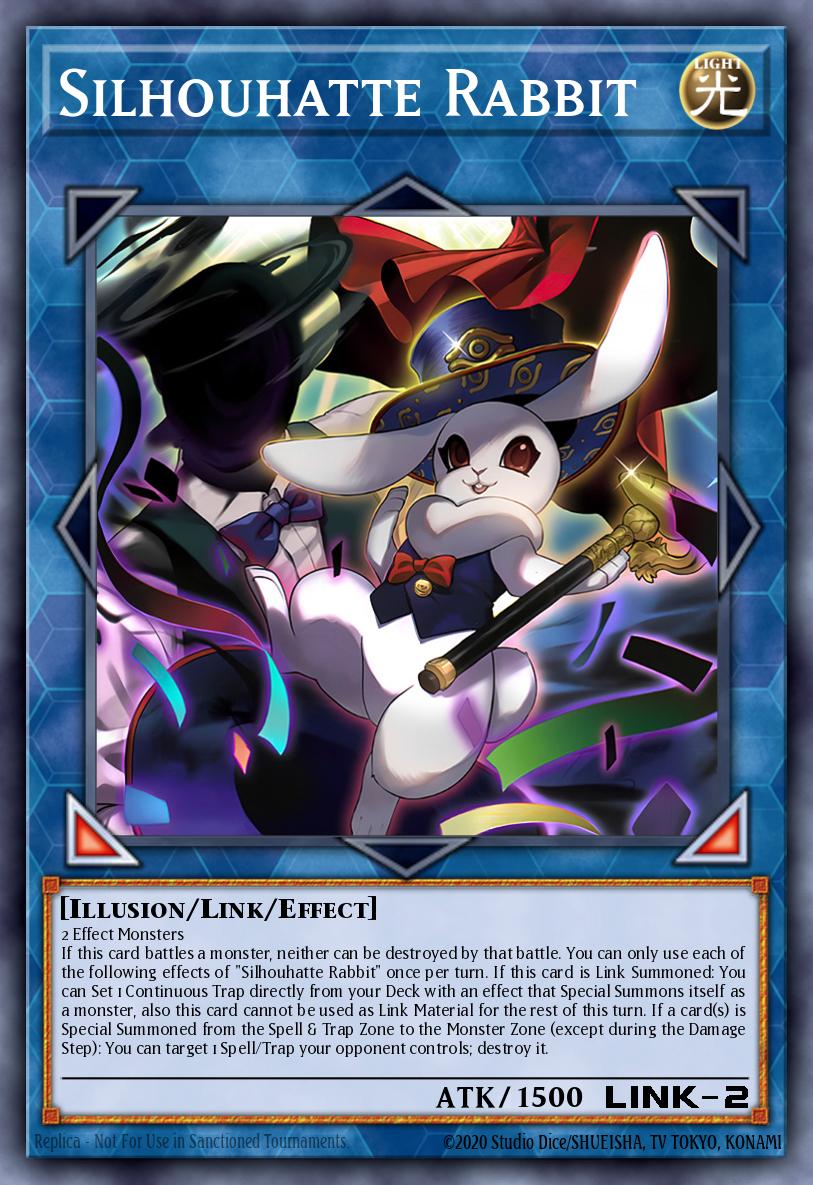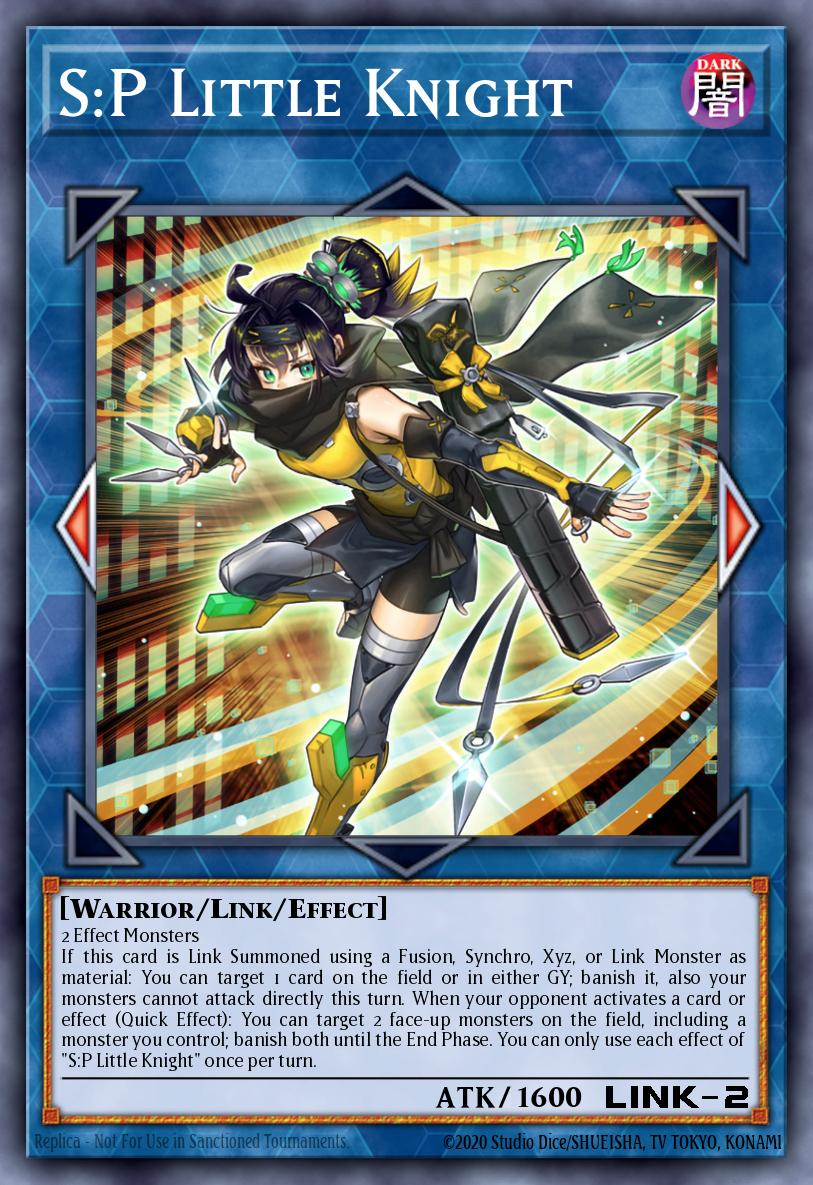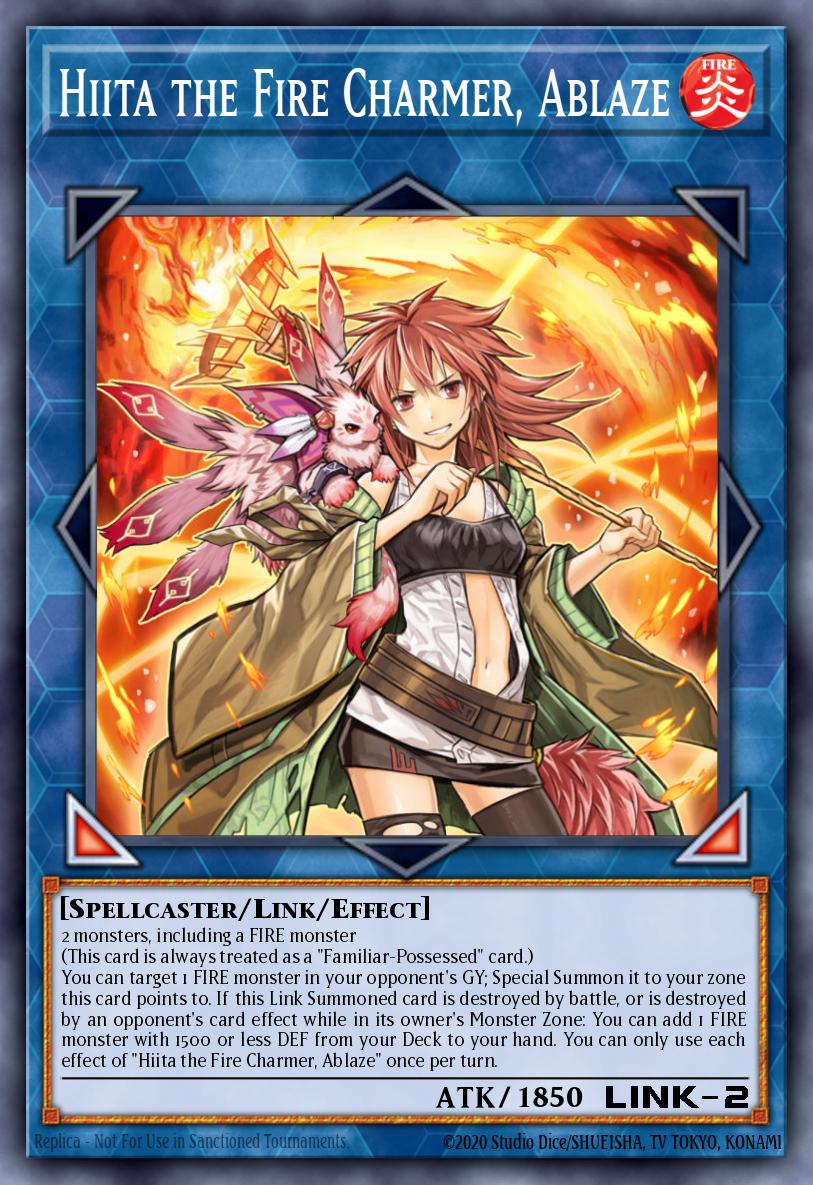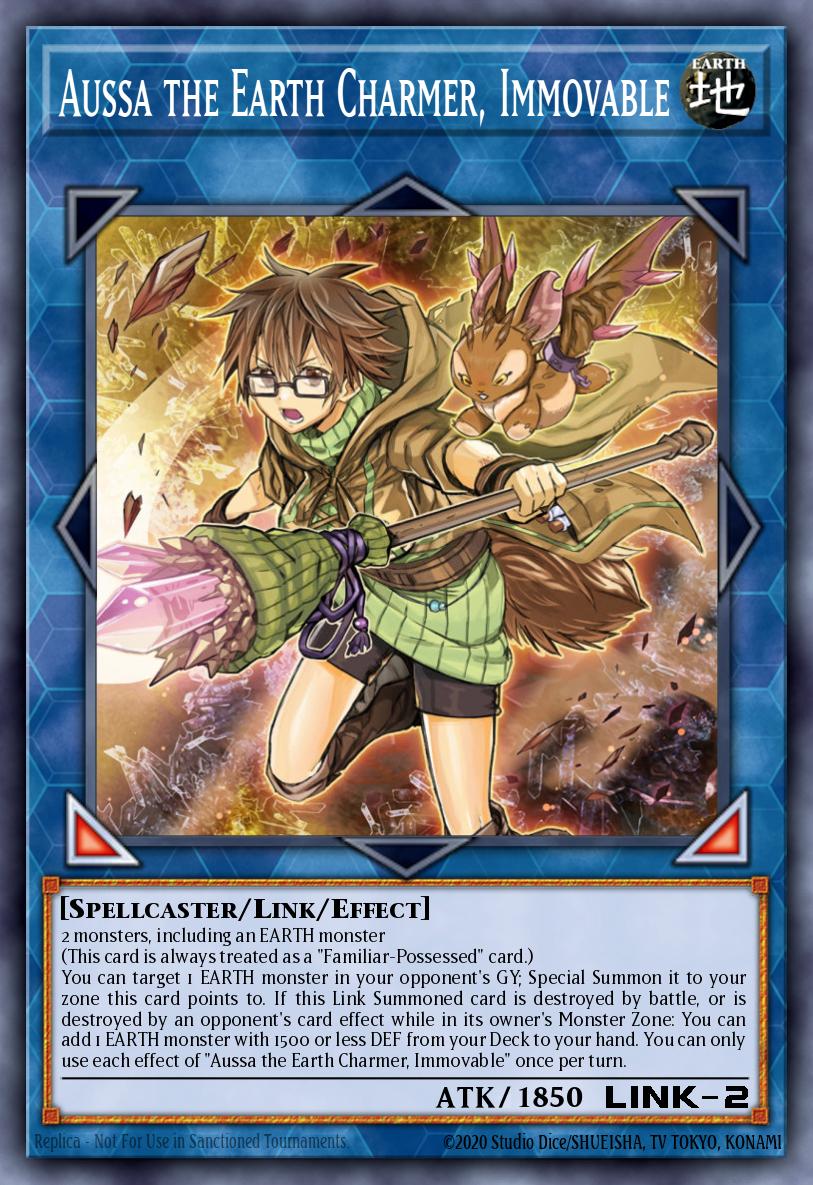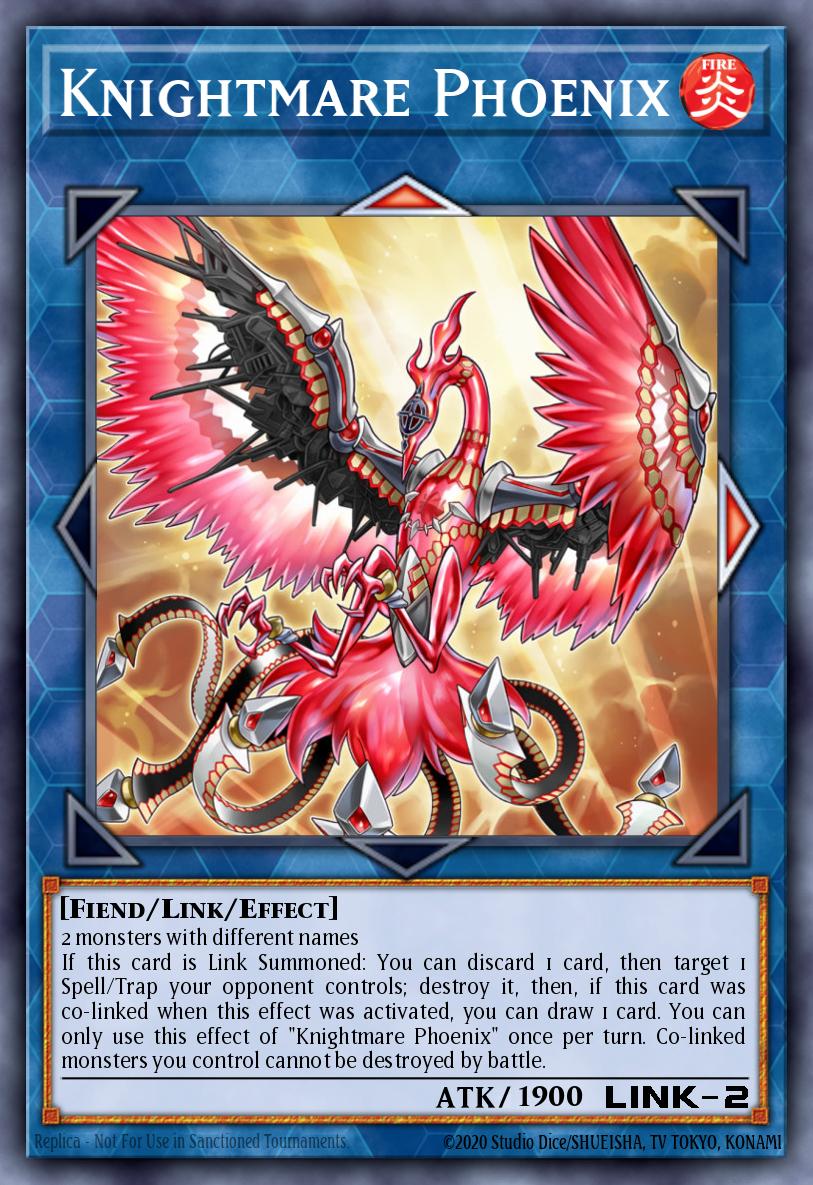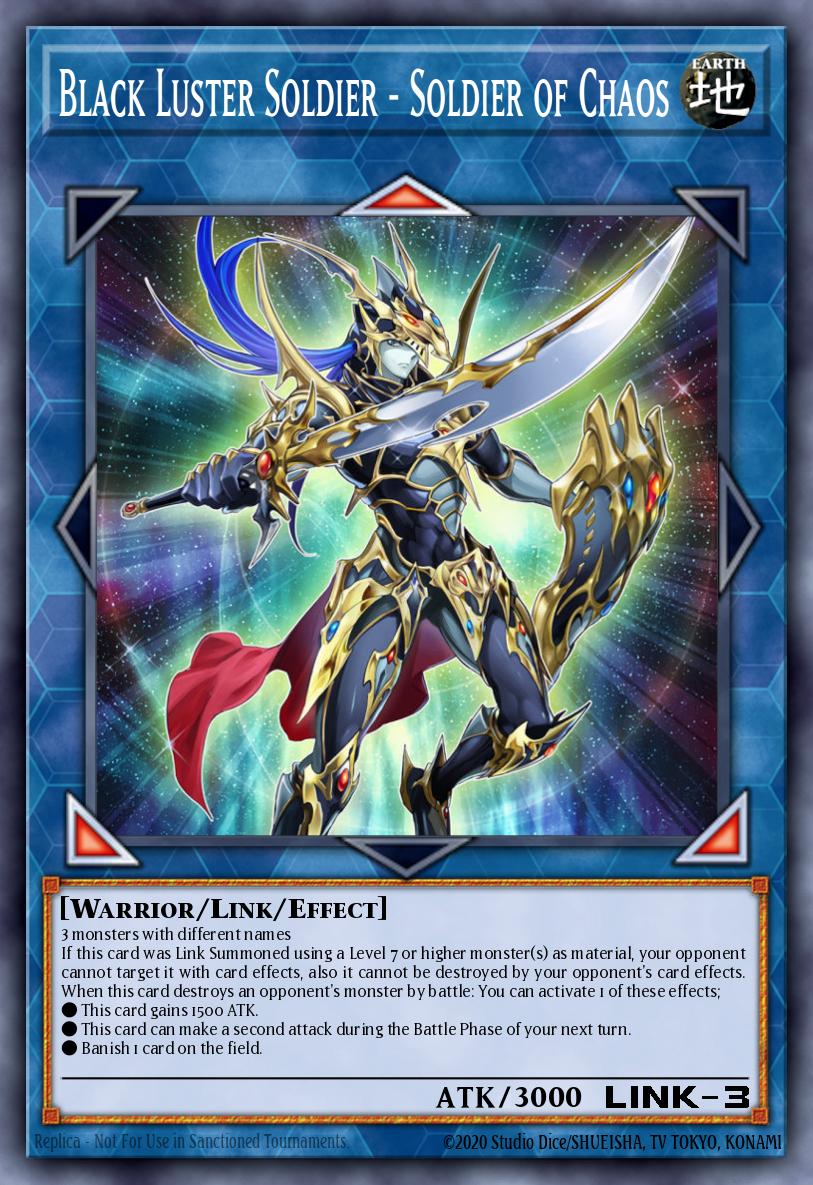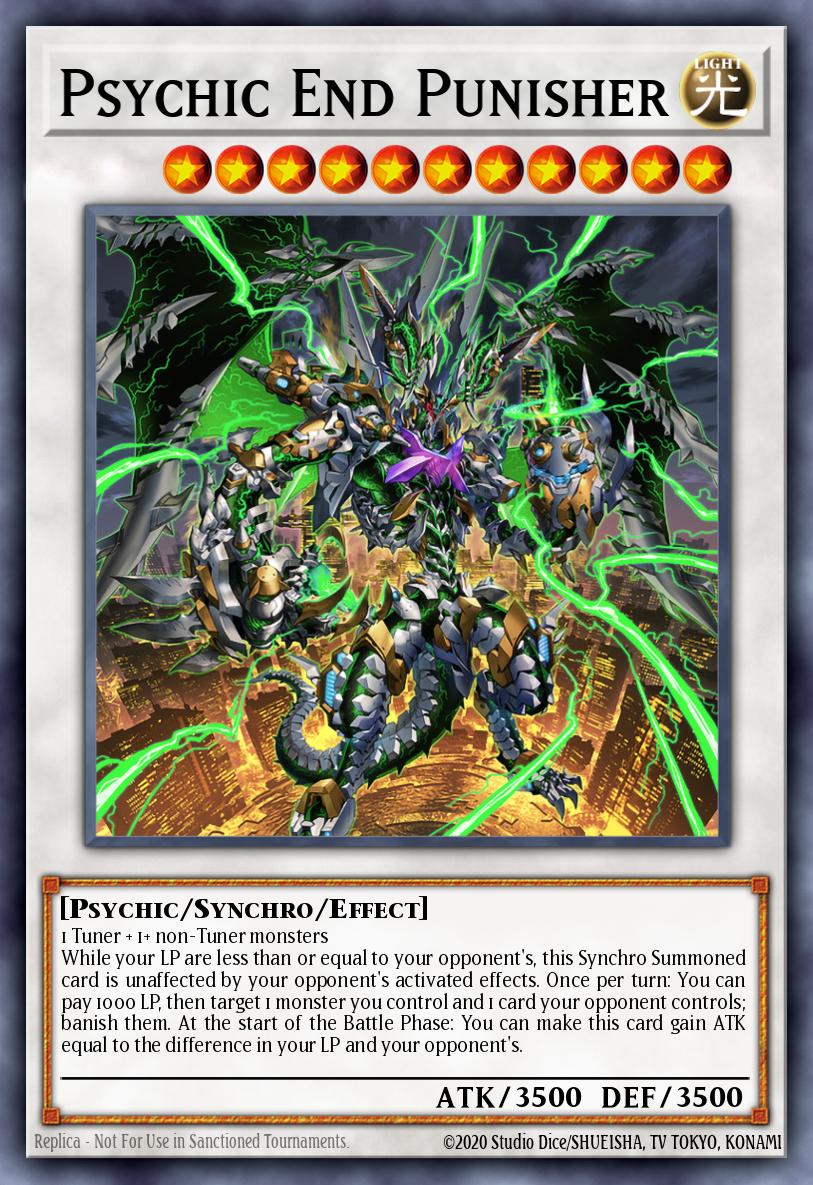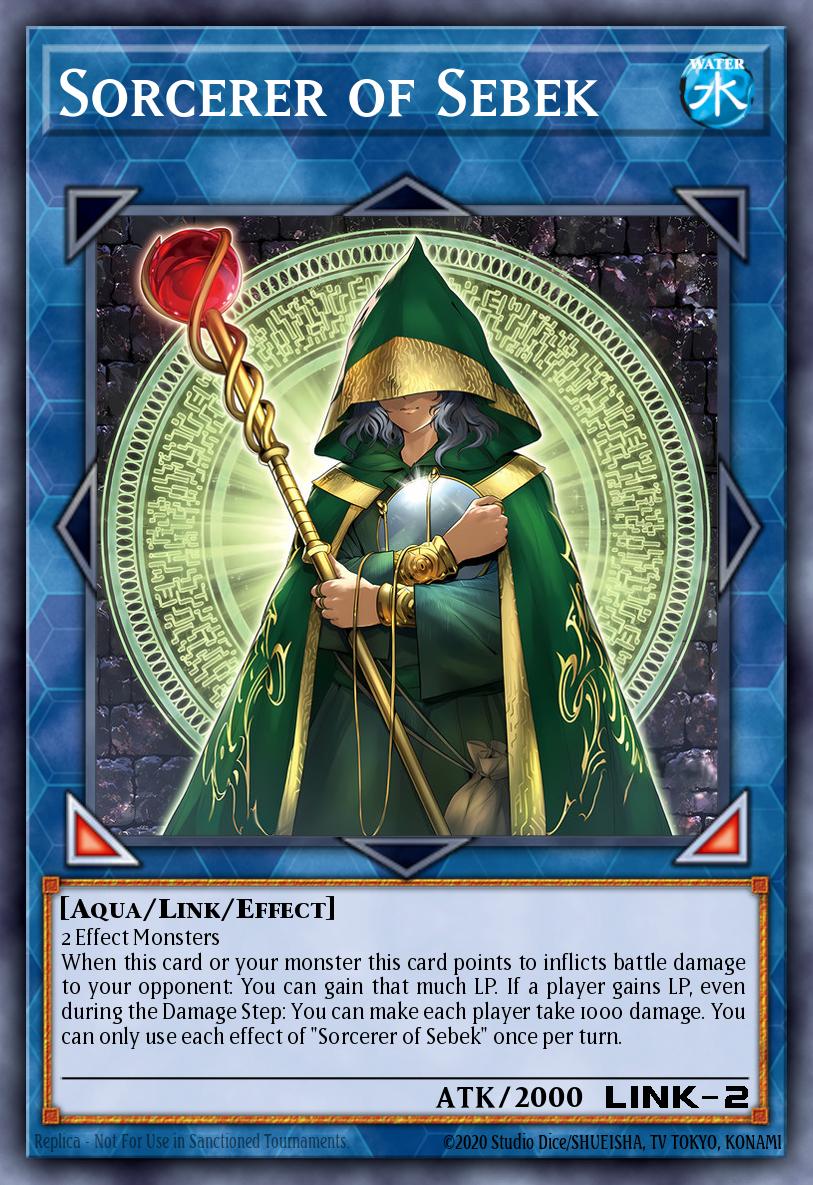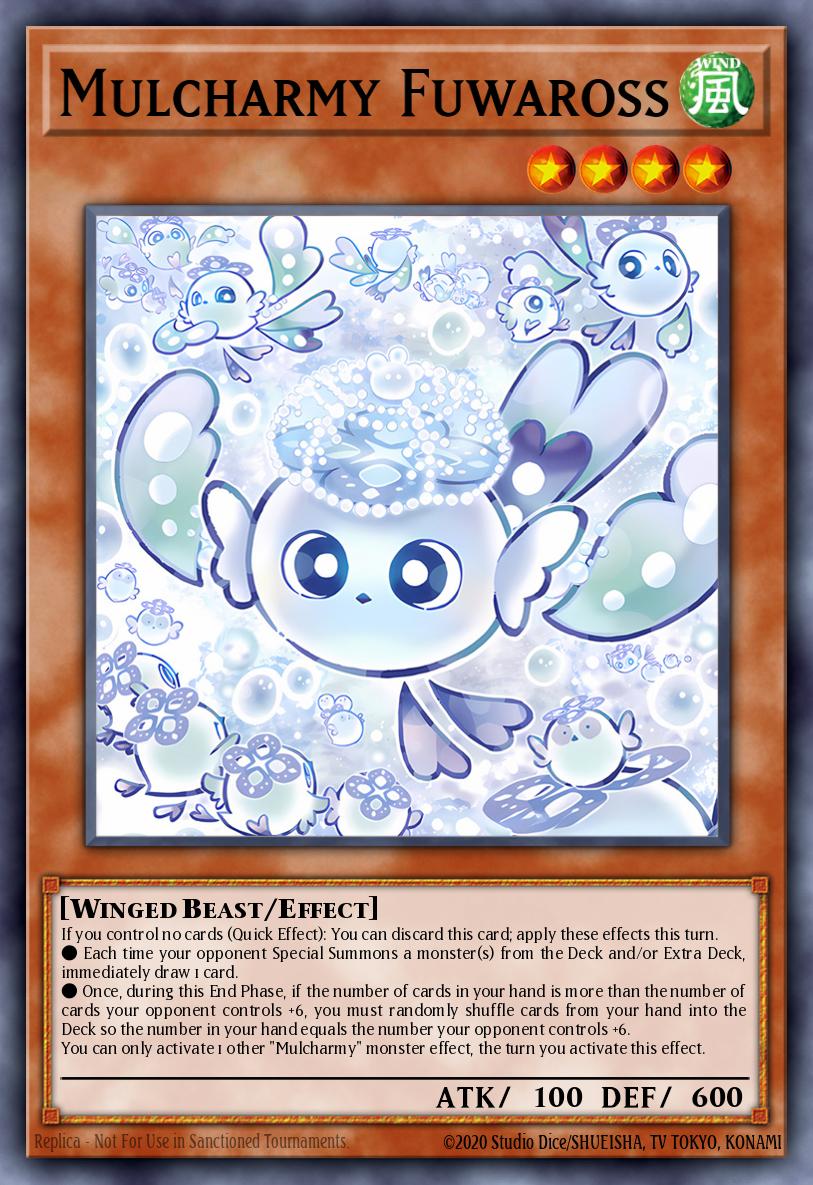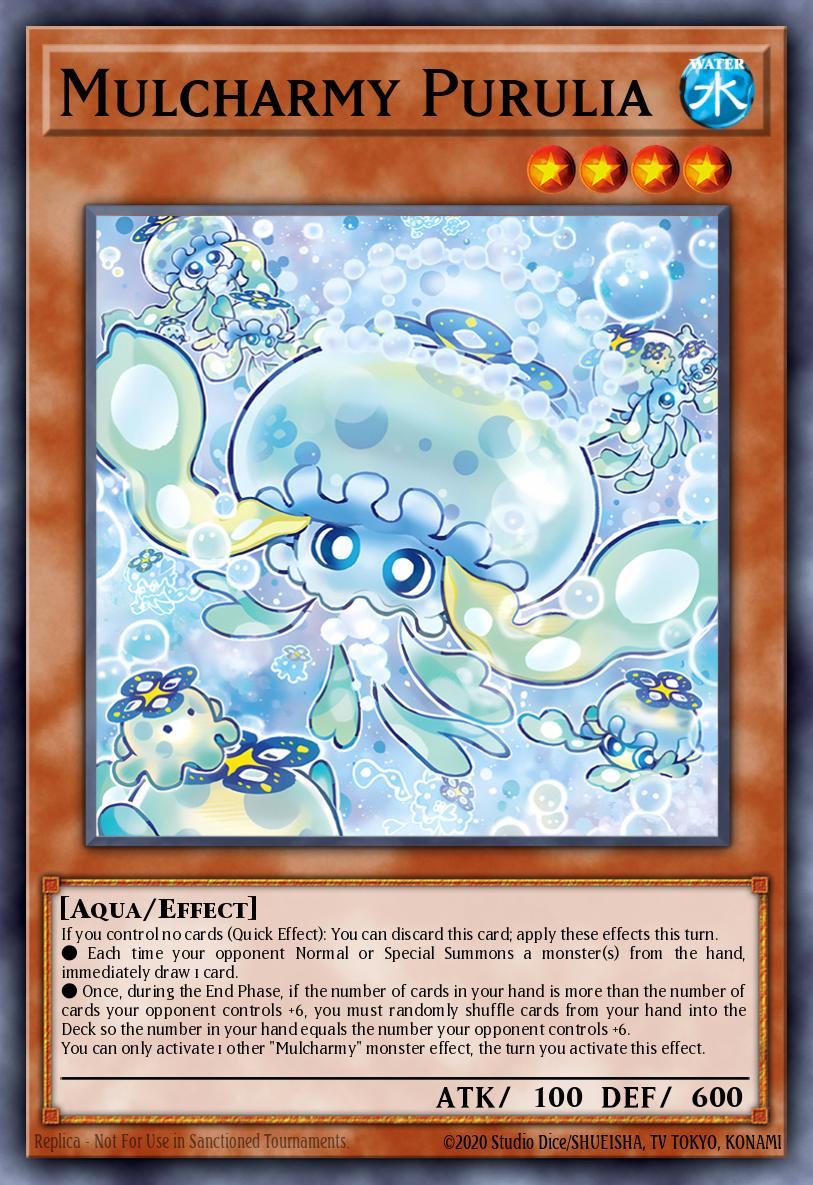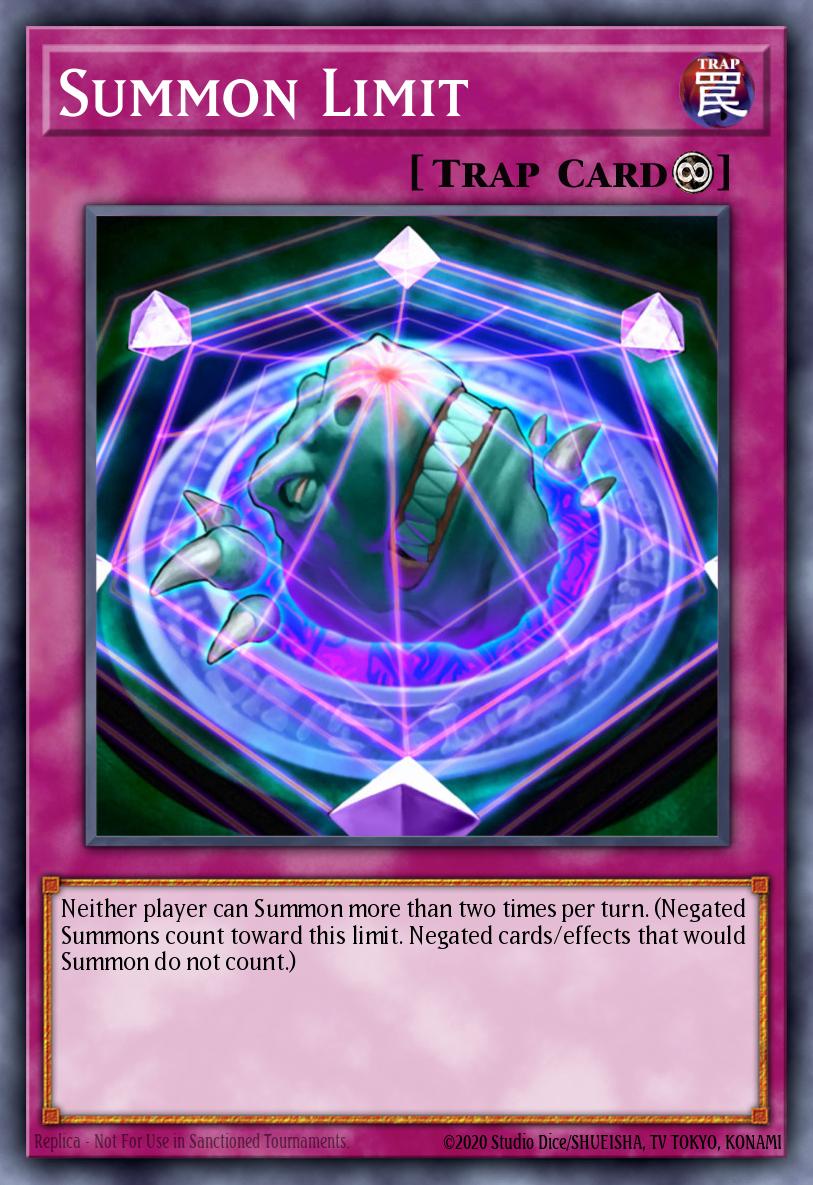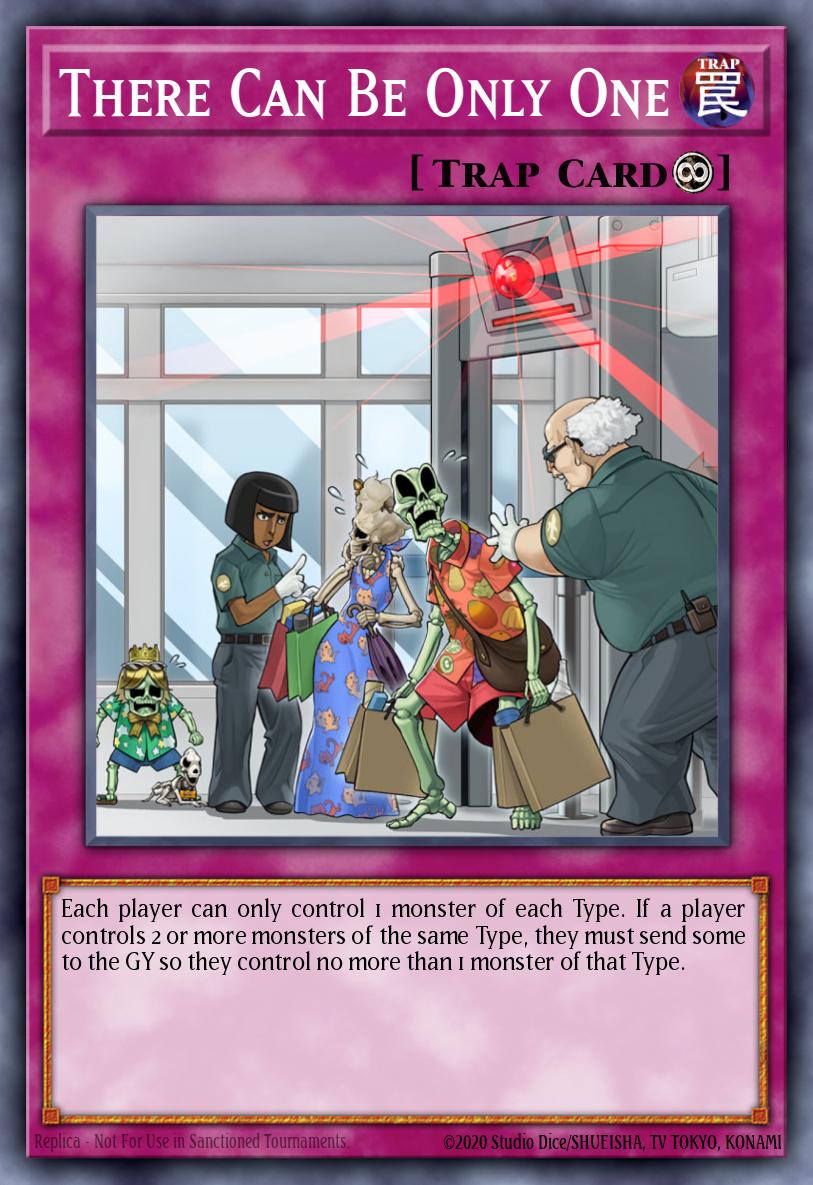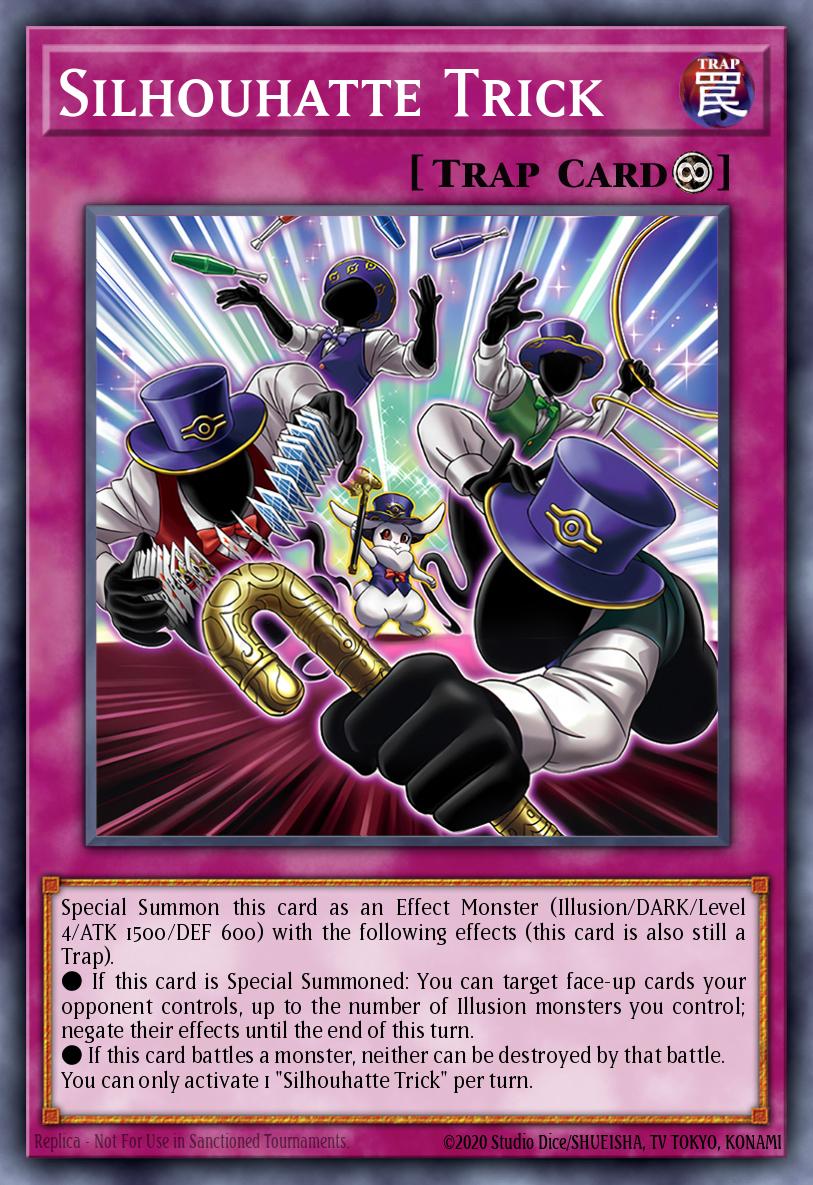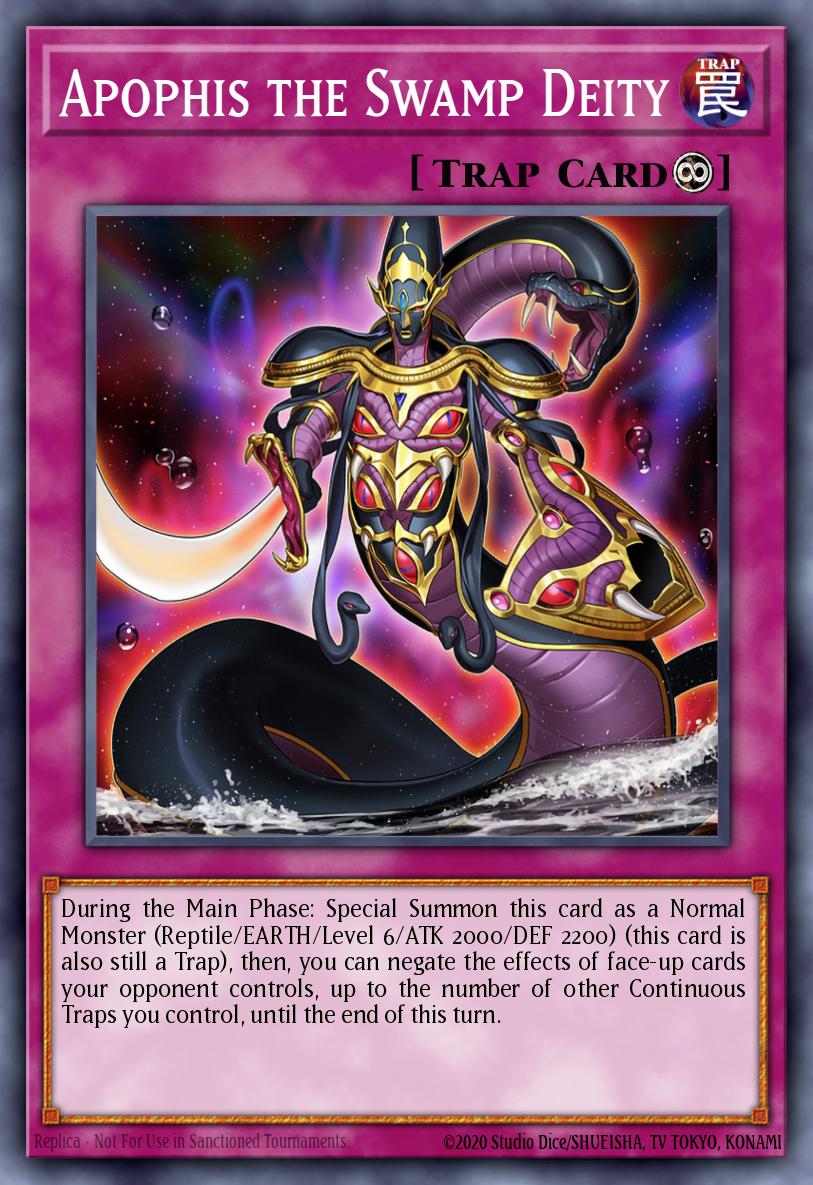Welcome to Deck Dictionary - A series of articles where I'll be guiding you through the many archetypes in Yu-Gi-Oh! and their various applications in the broader sense, both as a standalone deck as well as potential splashes into other archetypes.
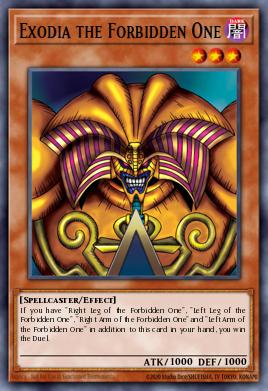
Exodia as a theme has had a mixed history, largely being utilised as an FTK strategy utilising masses of draw spells to draw the five pieces of Exodia: Exodia the Forbidden One, Left Arm of the Forbidden One, Right Arm of the Forbidden One, Left Leg of the Forbidden One and Right Leg of the Forbidden One. Draw strategies revolving around these cards struggle to maintain relevance in modern formats, due to handtraps such as Droll & Lock Bird, Ash Blossom & Joyous Spring or similar being constant threats, as well as the inherent pitfalls of needing to run five essentially dead cards in the five pieces themselves.
Historical Successes
In a change of pace, I'd like to highlight some more famous successes that the Exodia theme has had before delving into the more modern support. In 2012, Jarel Winston "Hope for Escape Exodia" to a top eight finish at the Yu-Gi-Oh! World Championships.
This deck focused on utilisation of powerful consistency spells and traps such as Hope for Escape and Accumulated Fortune to draw large numbers of cards over the course of several turns, while preventing the opponent from ending the game swiftly through preventative measures such as Swift Scarecrow, Threatening Roar, One Day of Peace and Waboku.
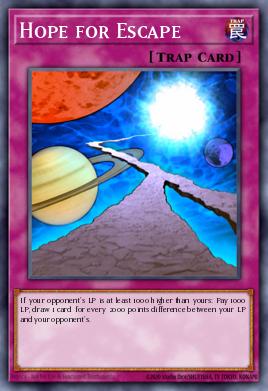
The remainder of the deck comprises of cards that further these ends, through basic draw and consistency spells such as Upstart Goblin and Pot of Duality, and life point manipulation tools like Gift Card (as well as the aforementioned Upstart Goblin) to further push Hope for Escape's potential up.

Following this world championship, both One Day of Peace as well as Upstart Goblin were limited to one copy a piece on Yu-Gi-Oh!'s banlist, presumably to curb the consistency of both this and other similar strategies. Due to the prevelance of basic negation effects in more modern formats, this kind of strategy quickly falls apart due to being unable to prevent your opponent from setting up ways to stop your draw power effects.
The second strategy I'd like to highlight is one by the infamous Jeff Leonard, who decided to surprise many with an Exodia strategy at YCS Indianapolis of 2023.
Unlike the aforementioned list, this decklist was purely focused on winning the game on the first turn, through exteme usage of powerful generic tools such as Isolde, Two Tales of the Noble Knights and Selene, Queen of the Master Magicians to churn through copies of Blue Dragon Summoner in order to search out four normal monster limbs of exodia, and utilising Timestar Magician to fetch the Exodia the Forbidden One.
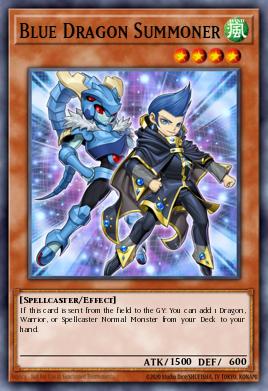
Overall this was an incredibly innovative take on the Exodia deck never seen at a major event before, despite involving a first turn kill. Huge credit to Jeff Leonard for playing some of the most toxic decks imagineable while still managing to make people laugh.
The Support
Next, we'll be moving onto the new support released for the Exodia theme in The Infinite Forbidden. This set introduces "Millenium" as an Archetype (despite the existence of cards such as Millennium Revelation, Millennium Scorpion and Millennium-Eyes Illusionist predating it, but archetype largely does not interact with these three cards).
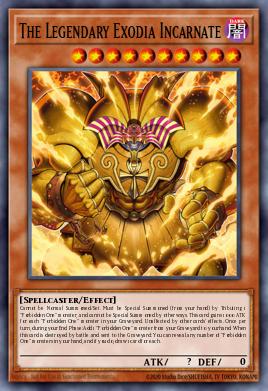
Largely this support appears to push the Exodia theme in a new, more controlling direction - One which was initially hinted at through previous cards such as Obliterate!!! and The Legendary Exodia Incarnate. Many of the new cards reference moments in the Yu-Gi-Oh! anime, or are retrains of older monsters from that series utilised by characters who used the Exodia theme in the anime.
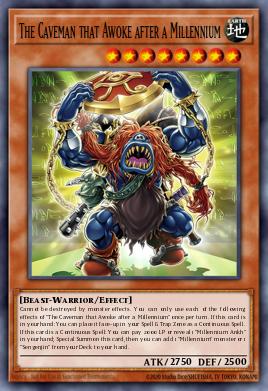 Sengenjin Wakes from a Millennium is the first new monster to the Millennium theme. A trend with these new monsters is that almost all of them place themselves into your spell and trap zone as a continuous spell, and as a spell can summon themselves either by paying 2000 life points (Ouch!) or by revealing one Millennium Ankh in your hand. - Don't worry, we'll get to Ankh later. Sengenjin Wakes from a Millennium does all of the above, cannot be destroyed by monster effects, and when adds one "Millennium" monster (Yes, including the old ones like Millennium-Eyes Illusionist) from your deck to your hand. Being a key searcher for the theme, you're likely playing three copies of this card.
Sengenjin Wakes from a Millennium is the first new monster to the Millennium theme. A trend with these new monsters is that almost all of them place themselves into your spell and trap zone as a continuous spell, and as a spell can summon themselves either by paying 2000 life points (Ouch!) or by revealing one Millennium Ankh in your hand. - Don't worry, we'll get to Ankh later. Sengenjin Wakes from a Millennium does all of the above, cannot be destroyed by monster effects, and when adds one "Millennium" monster (Yes, including the old ones like Millennium-Eyes Illusionist) from your deck to your hand. Being a key searcher for the theme, you're likely playing three copies of this card.
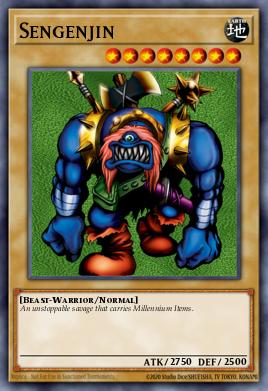
Sengenjin Wakes from a Millennium is a retrain of Sengenjin, a normal monster from the original Yu-Gi-Oh! anime series.
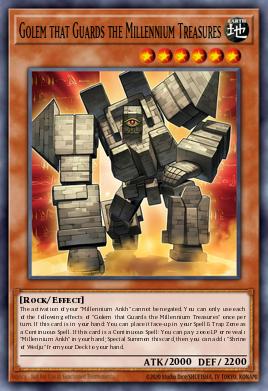 Golem that Guards the Millennium Treasures largely reads the same as Sengenjin Wakes from a Millennium, but when summoned he adds one Wedju Temple from your deck to your hand. Additionally, while on the field Golem that Guards the Millennium Treasures prevents the activation of your Millennium Ankh from being negated. If you're playing this theme, note that this does not prevent the effects of Millennium Ankh from being negated via the effects of cards such as Hot Red Dragon Archfiend. Being a key searcher for the theme, you're likely some number of copies of this card, depending on how much you want access to your archetypal field spell.
Golem that Guards the Millennium Treasures largely reads the same as Sengenjin Wakes from a Millennium, but when summoned he adds one Wedju Temple from your deck to your hand. Additionally, while on the field Golem that Guards the Millennium Treasures prevents the activation of your Millennium Ankh from being negated. If you're playing this theme, note that this does not prevent the effects of Millennium Ankh from being negated via the effects of cards such as Hot Red Dragon Archfiend. Being a key searcher for the theme, you're likely some number of copies of this card, depending on how much you want access to your archetypal field spell.
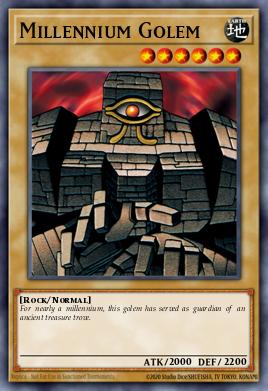
This card is a retrain of Millennium Golem, who was first introduced in 2005's Tournament Pack 7, nearly twenty years ago.
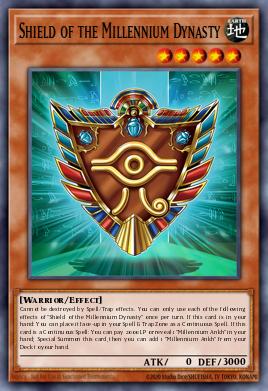 Shield of the Millennium Dynasty is our last key monster largely played as part of this deck's engine, with largely the same effects as the previous two. Shield of the Millennium Dynasty cannot be destroyed by Spell/Trap effects and adds one Millennium Ankh from your deck to your hand as part of its summoning effect. You'll certainly run three copies of this in the deck.
Shield of the Millennium Dynasty is our last key monster largely played as part of this deck's engine, with largely the same effects as the previous two. Shield of the Millennium Dynasty cannot be destroyed by Spell/Trap effects and adds one Millennium Ankh from your deck to your hand as part of its summoning effect. You'll certainly run three copies of this in the deck.
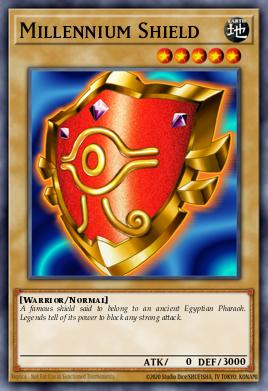 Shield of the Millennium Dynasty is a retrain of Millennium Shield, one of the more famous normal monsters from early Yu-Gi-Oh!
Shield of the Millennium Dynasty is a retrain of Millennium Shield, one of the more famous normal monsters from early Yu-Gi-Oh!

Blue-Eyes of the Heart is our last high level main deck monster, having recently debuted in the OCG. This card shares no effects with our earlier monsters, and instead is able to discard itself in order to add one Millennium Ankh from your deck to your hand. Additionally, this card cannot change control, and once per duel can special summon itself from the Graveyard when your opponent normal or special summons a level eight or higher monster while sending that monster(s) to the Graveyard. Due to the consistency this card provides, you're definitely running three when it arrives in the TCG. Notable this is also searchable through cards such as The Melody of Awakening Dragon.
 While it's obvious that this card is a variant of the famous Blue-Eyes White Dragon, Blue-Eyes of the Heart is specifically a reference to Solomon Muto's singular copy of Blue-Eyes White Dragon, which was later stolen by one Seto Kaiba and torn apart in the Yu-Gi-Oh! anime.
While it's obvious that this card is a variant of the famous Blue-Eyes White Dragon, Blue-Eyes of the Heart is specifically a reference to Solomon Muto's singular copy of Blue-Eyes White Dragon, which was later stolen by one Seto Kaiba and torn apart in the Yu-Gi-Oh! anime.
Our last two main deck monsters are two level four illusion monsters, Fiend Reflection of the Millennium and Maiden of the Millennium Moon.
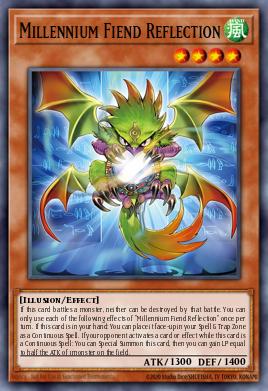
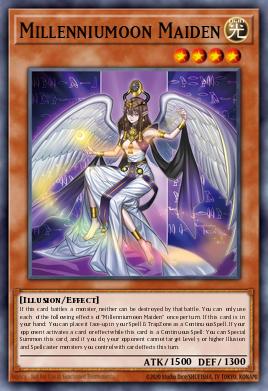
Like many other illusion monsters before them, these two monsters share the inability to destroy or be destroyed by monsters by battle, and both can place themselves in your Spell/Trap zone as a continuous spell. Where these two differ is that these can only special summon themselves if your opponent activates a card or effect. Fiend Reflection of the Millennium on summon gains you life points equal to half the ATK of one monster on the field, whereas Maiden of the Millennium Moon protects your level five or higher illusion or spellcaster monsters from being targeted by card effects for the turn. Neither of these typically see much play as they are weak effects, but there may be some potential for these in future formats if their effects become relevant.
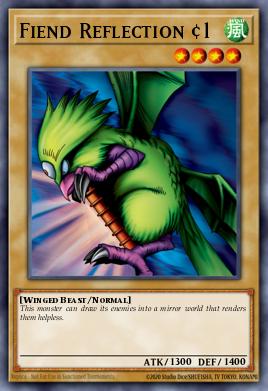
Fiend Reflection of the Millennium is a retrain of Fiend Reflection #1 (poor Fiend Reflection #2...)
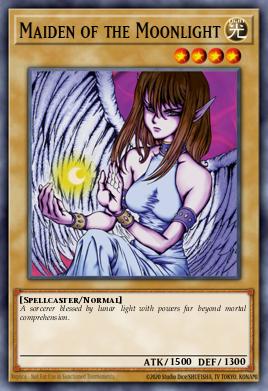
...and Maiden of the Millennium Moon is a retrain of Maiden of the Moonlight.
Next, onto the theme's spell lineup.
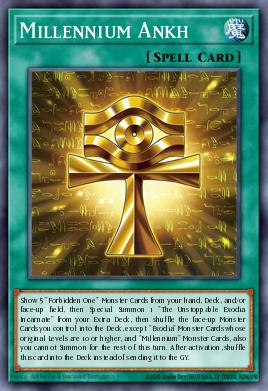 Millennium Ankh is a lynchpin of this theme - Special summoning one The Unstoppable Exodia Incarnate from your extra deck by revealing one of each "Forbidden one" monster cards from your hand, deck, or field, then shuffling away all monsters you control, except for "Exodia" and "Millennium" monster cards. Bizarrely, this card also shuffles itself into the deck upon activation, rendering it functionally infinite so long as you have targets to summon off of its own effect. Overall this peculiar card is very important to the theme, and we'll get to what it summons shortly. Play three. No less.
Millennium Ankh is a lynchpin of this theme - Special summoning one The Unstoppable Exodia Incarnate from your extra deck by revealing one of each "Forbidden one" monster cards from your hand, deck, or field, then shuffling away all monsters you control, except for "Exodia" and "Millennium" monster cards. Bizarrely, this card also shuffles itself into the deck upon activation, rendering it functionally infinite so long as you have targets to summon off of its own effect. Overall this peculiar card is very important to the theme, and we'll get to what it summons shortly. Play three. No less.
This card is depicting a variation of the Millenium Key from the Yu-Gi-Oh! anime.
 Our archetypal field spell is Wedju Temple, a field spell that allows you to place one monster from your hand in your Spell/Trap zone as a continuous spell in order to place a "Millennium" monster from your deck as well. Ideally you would want to place another Millennium monster from your hand when doing this, but any monster will do in a pinch. Additionally, this field spell returns your "Millennium" monsters to being a Continuous Spell when destroyed, rather than being sent to the graveyard. You'll play some number of this card, but you probably won't want to draw multiple copies. A good consistency piece regardless.
Our archetypal field spell is Wedju Temple, a field spell that allows you to place one monster from your hand in your Spell/Trap zone as a continuous spell in order to place a "Millennium" monster from your deck as well. Ideally you would want to place another Millennium monster from your hand when doing this, but any monster will do in a pinch. Additionally, this field spell returns your "Millennium" monsters to being a Continuous Spell when destroyed, rather than being sent to the graveyard. You'll play some number of this card, but you probably won't want to draw multiple copies. A good consistency piece regardless.
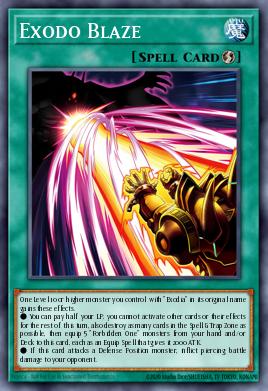 Obliterate!!! Blaze is our last archetypal spell, and a curious one. This card allows you to bestow upon your level ten or higher "Exodia" monster with bonus effects. Your monster gains the ability to deal piercing battle damage, and can pay half your life points to destroy all spells and traps, then equip all five "Forbidden one" monsters to itself from your hand or deck as equip spells giving that monster 2000 attack each, at the cost of being unable to activate other card effects this turn. Don't worry, this'll probably be the last thing you activate anyway - The goal here is to kill your opponent... Fast. Like many searchable OTK tools, you probably won't want more than one copy of this card, as it's dead turn one.
Obliterate!!! Blaze is our last archetypal spell, and a curious one. This card allows you to bestow upon your level ten or higher "Exodia" monster with bonus effects. Your monster gains the ability to deal piercing battle damage, and can pay half your life points to destroy all spells and traps, then equip all five "Forbidden one" monsters to itself from your hand or deck as equip spells giving that monster 2000 attack each, at the cost of being unable to activate other card effects this turn. Don't worry, this'll probably be the last thing you activate anyway - The goal here is to kill your opponent... Fast. Like many searchable OTK tools, you probably won't want more than one copy of this card, as it's dead turn one.
Like other Obliterate!!! cards, Obliterate!!! Blaze depicts one of Exodia's attacks in the anime.
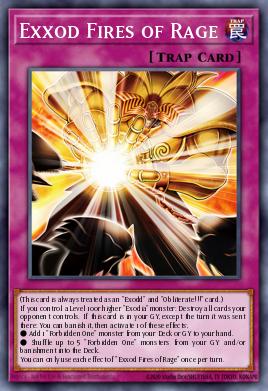 Exxod Fires of Rage is our last new main deck card, and is always treated as both an "Exodd" and "Obliterate!!! card". Not too sure why it didn't just say "Also treated as an Obliterate!!! card", as Exxod is in the name, but here we are. Simply put, this card destroys all cards your opponent controls if you control a high level "Exodia" monster. Additionally, this card can banish itself from the GY on later turns to either add one "Forbidden one" monster from your deck to your hand, or to shuffle back pieces that are in your GY or banishment. Overall, a potent piece of the theme, but a searchable one. Being a trap, you'll likely only run one or two copies at most.
Exxod Fires of Rage is our last new main deck card, and is always treated as both an "Exodd" and "Obliterate!!! card". Not too sure why it didn't just say "Also treated as an Obliterate!!! card", as Exxod is in the name, but here we are. Simply put, this card destroys all cards your opponent controls if you control a high level "Exodia" monster. Additionally, this card can banish itself from the GY on later turns to either add one "Forbidden one" monster from your deck to your hand, or to shuffle back pieces that are in your GY or banishment. Overall, a potent piece of the theme, but a searchable one. Being a trap, you'll likely only run one or two copies at most.
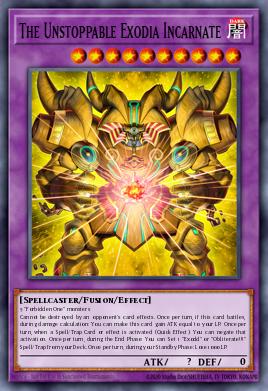 The last card I'll be covering here is The Unstoppable Exodia Incarnate. This monster does it all - It's easily summonable through Millennium Ankh, can negate a spell or trap card or effect once per turn for free, can set Exodd or Obliterate!!! spells and traps from the deck in each end phase, and can boost itself to attack points equal to your LP during damage calculation. Overall an incredibly potent card, this monster gives you access to your disruption, can push for OTKs on the crack back, and is just a little annoying to get rid of due to being unable to be destroyed by card effects. Note the drawback that this card costs you 1000 LP during your standby phase, meaning you're on an eight turn (if not less) clock.
The last card I'll be covering here is The Unstoppable Exodia Incarnate. This monster does it all - It's easily summonable through Millennium Ankh, can negate a spell or trap card or effect once per turn for free, can set Exodd or Obliterate!!! spells and traps from the deck in each end phase, and can boost itself to attack points equal to your LP during damage calculation. Overall an incredibly potent card, this monster gives you access to your disruption, can push for OTKs on the crack back, and is just a little annoying to get rid of due to being unable to be destroyed by card effects. Note the drawback that this card costs you 1000 LP during your standby phase, meaning you're on an eight turn (if not less) clock.
Lastly, I wanted to include a recent decklist from the OCG featuring all fo the support. Feel free to adjust for your local metagames, however the concept here is sound. The engine is compact, consistent, and provides bodies for powerful generic extra deck tools such as S:P Little Knight and Silhouhatte Rabbit alongside your in theme boss monster.
While this theme doesn't appear to be making waves competitively at present, it's a far cry from pushing for first turn kills or stalling out games like Exodia used to. It's an interesting and unique take on what a Yu-Gi-Oh! archetype can be.
What do you think? Let us know below, and tell us what you'd like us to talk about next time! Thanks for reading.
